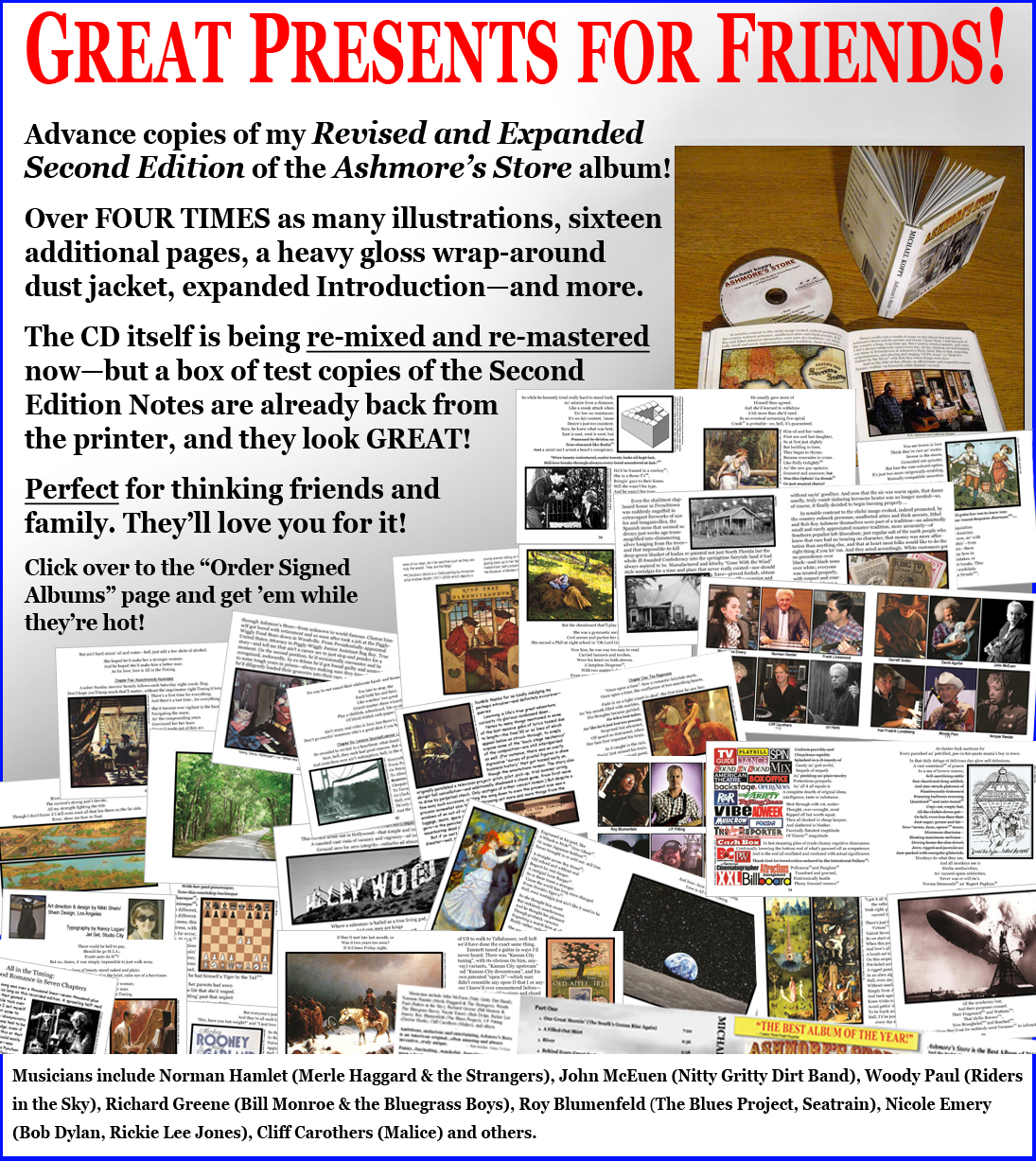Michael Koppy
The Latest from Here....
“Michael Koppy’s Ashmore’s Store is the Best Album of the Year—and ‘All in the Timing’ is the best song this critic has heard in the past 30 years... This is great art... Utterly sensational... A work of genius.” — Paul Riley, Country Music People Magazine (London, UK)
“He brings a unique view of America, drawn from a storehouse of living... Ashmore’s Store occupies a genre entirely its own... It’s history, the present and the future, all distilled into a country-pop album that’s downright cinematic.” — Chris Spector, Midwest Record (Chicago)
“The Ashmore’s Store album combines poetry, history, nostalgia and a unique world view into a complete and entertaining whole... To call Koppy a ‘character’ would be an understatement. He’s a true American original.” — Walt Belcher, Tampa Tribune
— — — — — — — — — — — — — —
“This is a terrific book! Words and Music Into the Future is a cranky, obsessive and altogether brilliant work of cultural criticism.” — Philip Martin, Arkansas Democrat-Gazette
“I’ve never even seen a book like this before. But so much of what he writes about are suspicions every intelligent listener has entertained, so it’s wonderful to see them so ably presented... Koppy’s an original thinker, and this is a great book.” — Phil Redo, WGBH Boston
“Words and Music Into the Future is an incendiary, vigorous, well-written critique... It’s a much needed warning; a real wake-up call!” — Tom Lanham, San Francisco Examiner
I get occasional emails asking, essentially, “What The Hell’s Happenin’, Ya Lazy Lardbutt?!?” and figured—in lieu of doing actual work—I could more easily embarrass myself throwing out some of the many, er, um...Divine Revelations and Celestial Insights that crowd my days. And they might elicit some interesting reactions, additional thinking, and counter-commentary in response. If so, great.
So I invite anyone reading to please hit back with your own thoughts, alternative takes or damnations on subjects addressed. It doesn’t matter when you’ve come across something you think deserves attention, if it supplements depth I’ll add it in—expanding the consideration for whoever next comes along. So, repeating, if you see an essay from months or even years back that you just know needs serious expansion, reconsideration or outright refutation, lemme know; I’ll trudge back there with you. Currency has no currency here, and digression ain’t transgression. And in the end what’s collectively explored inexorably evolves into enriched deliberations. (For example, scroll down to the essay on the films of Orson Welles, June 2023, wherein added information from an intelligent, informed contributor—writing in over a year-and-a-half later—rather forcefully upends my own suppositions about Welles’ directoral application. Not the critical assessments on the results of the work—the recurrent markedly unintegrated or incompatible performances, especially—but the basic surmise on how they were perhaps induced. Good.)
Anyway, click back in a few weeks—or heck, a few months(!)—to see what may have been added or re-considered, if you’re curious and have a few minutes. And write if you’ve some relevant thinking, anecdotes or information to contribute. Click the email button over on the left.
Photo and other graphics credits are at the end of the web page; scroll down to the bottom.
June, 2025: On Respecting the Audience’s Intelligence
There are various kinds of mistakes (or perhaps better, wrong-headed derelictions) that can be made in any motion picture—from the very idea of making the danged thing in the first place, to most every single time a decision (from the biggest to the smallest) is made along the way, to the look of the advertising used to promote it when it’s out in the world. Getting from A to B (well, from A all the way to Z—while clearing B, C, D, E and the other 20 in between) is an ever-changing obstacle course.
What I want to address here, however, are examples of errors at best arbitrary and at worst inexcusable, that could have been easily addressed—and easily corrected—during pre-production and production (and/or post-production) itself. But from simple laziness, incompetence, lack of discipline—or (worst case) imperious contempt for audiences—they weren’t. Yes, it is possible that something stupid but utterly obvious ‘slips through’. We all, every last one of us, makes dumb mistakes. (I myself have a rather stunning track record of Idiotic Mistakes—ask anyone, anyone, who’s ever worked with me.) However, not addressing them when they’re potentially distracting—and fixing them when they’re obvious, fatal and easily corrected—displays inexcusable disdain for the intelligence of the audience.
For our case study, we’ll use that widely-revered movie starring Humphrey Bogart and Ingrid Bergman, directed by Michael Curtiz, Casablanca, from Warner Brothers Studios. Not a favorite of mine personally, but capably accomplished and certainly well-known—making it particularly serviceable for the task here. So fine. (Meaning it already easily crosses that initial hurdle noted above of ‘the very idea of making the danged thing in the first place’. And indeed, it’s a generally well-made film.)
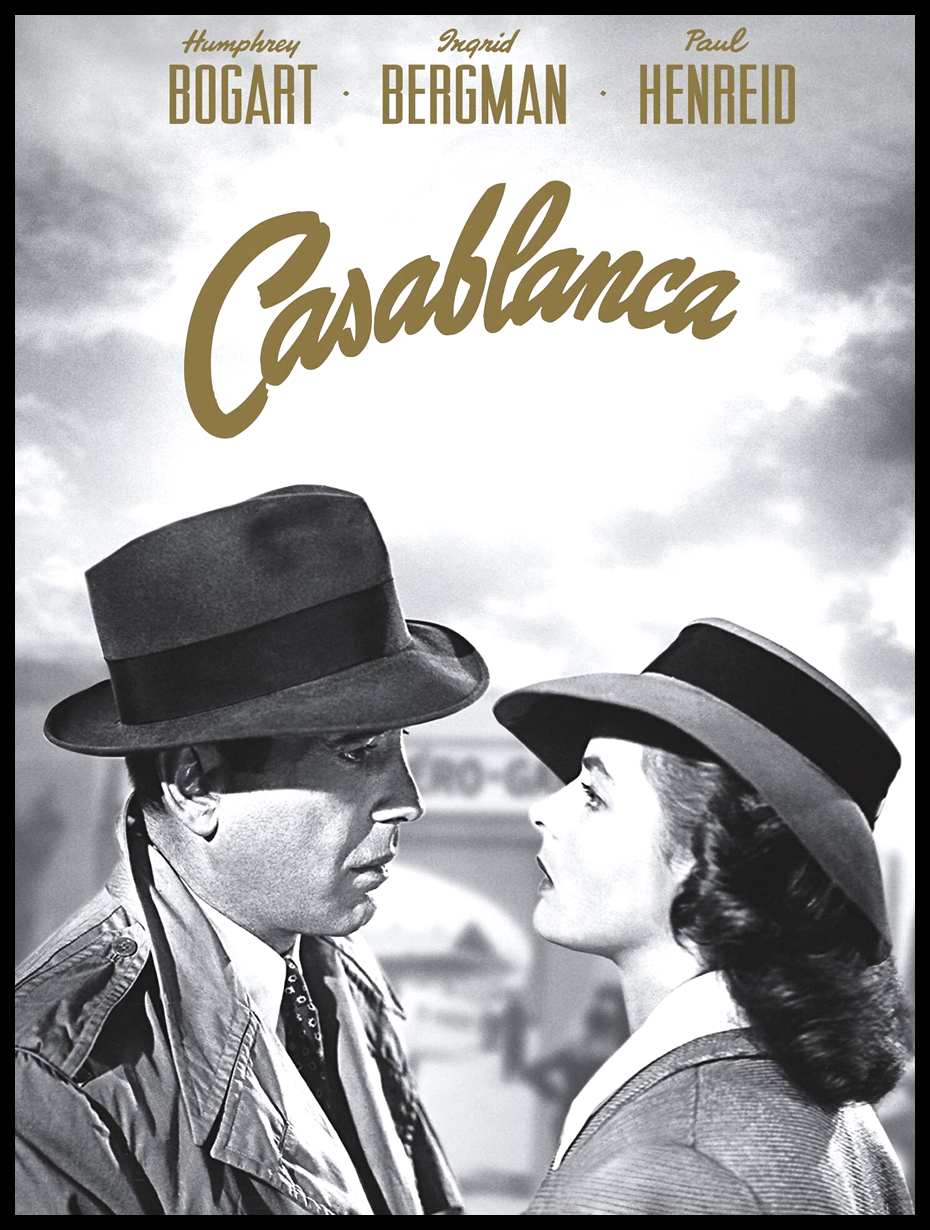

But before headin’ out, some ancillary but distinct considerations of what we’re not addressing:
If actors in a film begin a scene in which they’re drinking a toast, but a succeeding shot includes dialogue of them deciding to order that very champagne, we watching are taken completely out of our investment in what’s happening. We’re disoriented, confused, questioning. An underappreciated but absolutely critical part of on-the-set production is ensuring—as best as can possibly be accomplished—that what is eventually seen in one shot of the edited scene appears continuous, seamless, with what the connecting shots display, and whether they were filmed days or even weeks apart from each other. The key person responsible for what is labeled ‘continuity’ was called the script girl in earlier days, and is now called the script supervisor. The script supervisor keeps detailed notes and takes a plethora of photos, so that everything in shots within a scene—the props, lighting, slight dialogue interpolations and adjustments, where actors are looking, even the weather, etc—allow those shots to be eventually edited together as seamlessly as possible, without conspicuous mismatch or disorientation.
(Which reminds me of a fun story. I was working on a TV show at Paramount starring Donald Sutherland [Dirty Sexy Money, so around 2009] and one day found him sitting alone outside the soundstage. As I had a few minutes myself, I asked if I could join him on the bench and ask about a project he’d acted in many years previously. “You played the title role in Fellini’s Casanova—what was the working environment like with Federico Fellini?” He sighed before answering, “Ah, Fellini...” [pause, slight smile, thinking back, continuing slowly] “I remember there was a scene where I got out of a coach facing one direction, and he wanted to then shoot me immediately facing the other way for my line. His script girl pointed out that this couldn’t be done—I’d be breaking screen direction. Federico halted for a second, got a mischievous grin, and said, “Oh let’s do it anyway—they’ll just say I’m being Fellini-esque!” Laughing now, as I did when Sutherland told me the story—because who else but Federico Fellini could get away with something like that? All key participants in a production know to compose scenes respecting screen direction, of course, but it’s another aspect the script supervisor rigorously polices and documents.)
Now lapses in continuity in a finished film happen all the time. Especially during editing—to change the focus of the scene or to cut its length, for instance—shots may get completely re-arranged. So a character ends up with a half-smoked cigar, a freshly lit one when the next shot of him rolls around, no cigar at all in a third, and back to freshly lit. Or very, very rarely, as in the scene Sutherland recounted to me (though that one was done deliberately, on Fellini’s whim) even breaking the most fundamental rules of cinematographic composition. So the errors in continuity may not be the fault of the script supervisor or anyone else during the production phase at all. They were the results of deliberately weighed and considered post-production decisions.
There are plenty of websites devoted to such lapses in continuity. “He was holding a blue cup, then a drinking glass, and then the cup again.” “She opened the window, it was closed, then wide open, and then closed again.” And all whatever similar, etc, ad infinitum.

As for lapses in continuity caused in the editing: hell, there are plenty of times the whole arc of the story is radically altered. (And maintaining consistent ideal continuity while re-shaping the larger—obviously much most important!—story itself is a frustrating jigsaw puzzle task.) Usually—well, no, but quite often—it’s due to a studio’s panicked ‘attempted rescue’ of a real stinker. A well-known example of a re-edit rescue that always comes to my own mind, of the countless availabilities in this kind of discussion—however this being one of the rare enduring successes—is Ferris Bueller’s Day Off. The ostensible ‘final cut’ played so poorly to test audiences that the movie went into life-support surgery, coming out of the operating room, er, the editing room [and further successive test screenings!] a healthy and engaging—but totally different—Final Cut. Stray pieces of dialogue referred to events not even still in the movie. Unusual, yes, but far, far from unique. In fact, not really all that unusual.
(Digression: I recall a great—truly effective and critical—use of editing to paper over actual glaring plot hole after glaring plot hole that very much needed that attention in a specific movie a long while back. Don’t even know why I saw the thing, since The Firm [a Tom Cruise vehicle, directed by the consistently capable Sydney Pollack] isn’t something in which I’d be ordinarily interested. (Probably a free industry screening, but still.) The final act of the film contained entire critical-but-flimsy plot points, one-after-the-other-after-the-other, delivered in such rapid succession—many [most, if I remember] in single shot scenes, immediately cutting to the next single shot scene. Bam-bam-bam-bam. I knew there were questions to be asked, pertinent information completely AWOL, but things came so quickly that there just wasn’t time to ponder any of them—one simply had to yield to the film, though knowing you’d been coerced. Forget trying to assess logical cohesion—it was a challenge just keeping up with the veritable run-away freight train. A nicely-accomplished and necessary trick in the second-rate movie, and it basically worked. Now keep in mind that it may’ve even been the scriptwriter[s] who saw the need [or were tasked to plan] for the tightly compressed progression speeding everyone across the narrative chasms—so what we’ll maybe call ‘anticipated editing’ in the script—but who knows? In any event, Pollack clearly recognized and implemented that thinking during production and post-production.)
I’ll re-quote an aphorism I regularly cite in regard to all the above, because though definitely a generalization it yet evinces spot-on understanding of How The Medium Works; How the Final Product is Accomplished: “The director directs the script; the editor directs the film”. Folks in the business can append caveat after caveat to that dictum, of course, but the point remains that it is editing that brings the film home; everything else leads to that final assembled creation. (Oh, that reminds me of another fun story I’ll write up sometime—unimpeachable very inside stuff from the Oscar-winning editing of David Lean’s Lawrence of Arabia way back when. Wonderful lessons exposed, but too much of a digression here for even Ever-Digressing Me.)
Okay, fine. We’re not here to discuss unavoidable or inadvertent flubs—or editorial decisions, alterations to the script impossible to have foreseen, engineered to make the film play better with what was shot. (Further, there’s always gonna need be allowances—dramatic license—given to this or that transient bit or aspect which upon reflection is a stretch or, to be kind, even somewhat ham-fisted. Just don’t make a habit of requiring it of us throughout.)
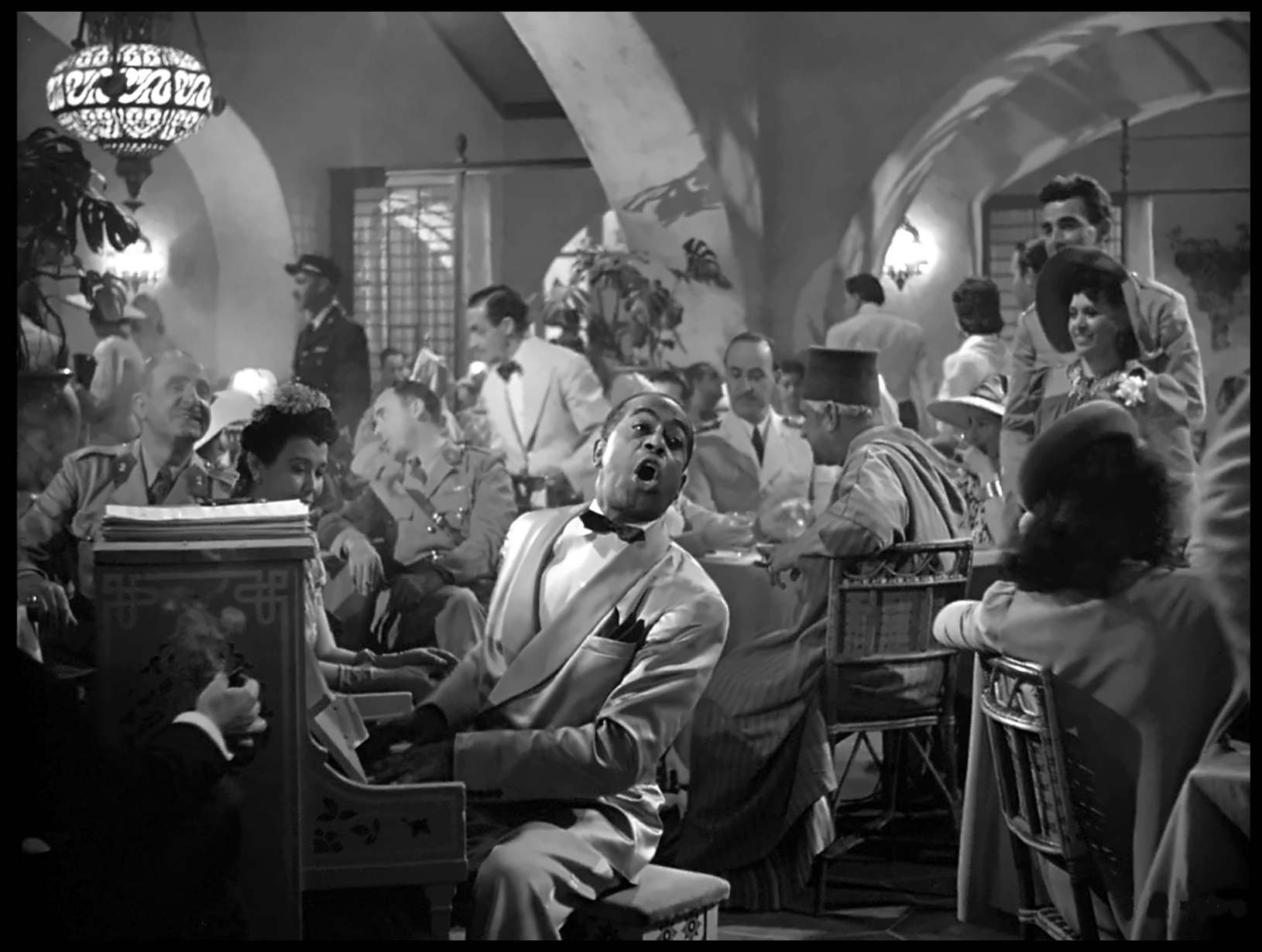
What I’m interested in are more fundamental matters. So I’m going to offer three elements in Casablanca for consideration—none of them to do with continuity, and each of far more substantive importance. (Oh there are continuity errors in the film as well, of course, and click around to find sites detailing them if you’re curious. You missed most or even all of them when viewing, and most assuredly so did I. The Final Line of Defense against distracting continuity errors stealing attention in a finished work lies in the performances and what the performers are saying—so the script and the acting of that script. And Casablanca is well-cast and well-acted, with a generally engaging script—and Curtiz’s staging for camera is first-rate.)
Two of the things I’ll detail are not at all fatal, just disconcerting and so debatable; but the third is inexcusable from any vantage, because it makes the entire film stupidly silly, and it could have been easily fixed.
First my two initial legitimate, albeit admittedly perhaps arguable, reservations:
1. The film is set no later than the first week of December, 1941, because Bogart’s America is still neutral in World War II. Bogart’s Rick and Bergman’s Ilsa “will always have Paris”—which they both fled as the German army marched in. But that commonly-known factual event happened in mid-June, 1940—so they actually parted ways less than 18 months ago! Sure, a lot happened in the world in that intervening year and a half, but it struck me from the first time I saw Casablanca that this was too short a period for the ‘long ago other life’ they wistfully, romantically remember. My suggestion—and don’t laugh; I certainly accept, though with ill grace, that we can ‘get by’ with Paris—is that they instead harken back to an earlier (and unquestionably more exotic) Axis Powers take-over: Shanghai by the Japanese in 1937. Now we’re at least talking a more realistic four-plus busy years back—and a completely different world away. It also makes each even more traveled and experienced, and she has reasonable time to meet and fall for Victor Laszlo. (Get my thinking? Or snickering at my picayune reservation and ‘solution’?) The inconveniently short interval seemed rather far-fetched to me, and I can’t be the only one so affected. So “We’ll always have Shanghai.”? (Okay, alright, fine: go ahead and laugh—I can take it. And this proposal, given the iconic stature to which the line “We’ll always have Paris” has ascended, manifestly sets me up for facile ridicule, no? Have at it. Yet I don’t retreat from the charge of questionable calendrical caprice itself.) Whatever the remedy, it’s something that should have been addressed in the script, and the director should have been as painstaking in approaching the chronological disconnect as I here now. Every possible matter in a production that dis-involves should be rectified, mitigated, eliminated as effectively as it can be. And there are so many dramaturgical options and practical tools available to efficiently accomplish that.
2. If we stay with “We’ll always have Paris”—so, okay, so be it—it also means that Rick has only been in the bar business in Casablanca for at most those same fewer than eighteen months. That’s an awfully short time to create that always packed-to-the-rafters gathering place. I didn’t buy it. The joint is the obvious HEART of the whole city—an ever bustling affair, an ever free-wheeling, free-spending party!
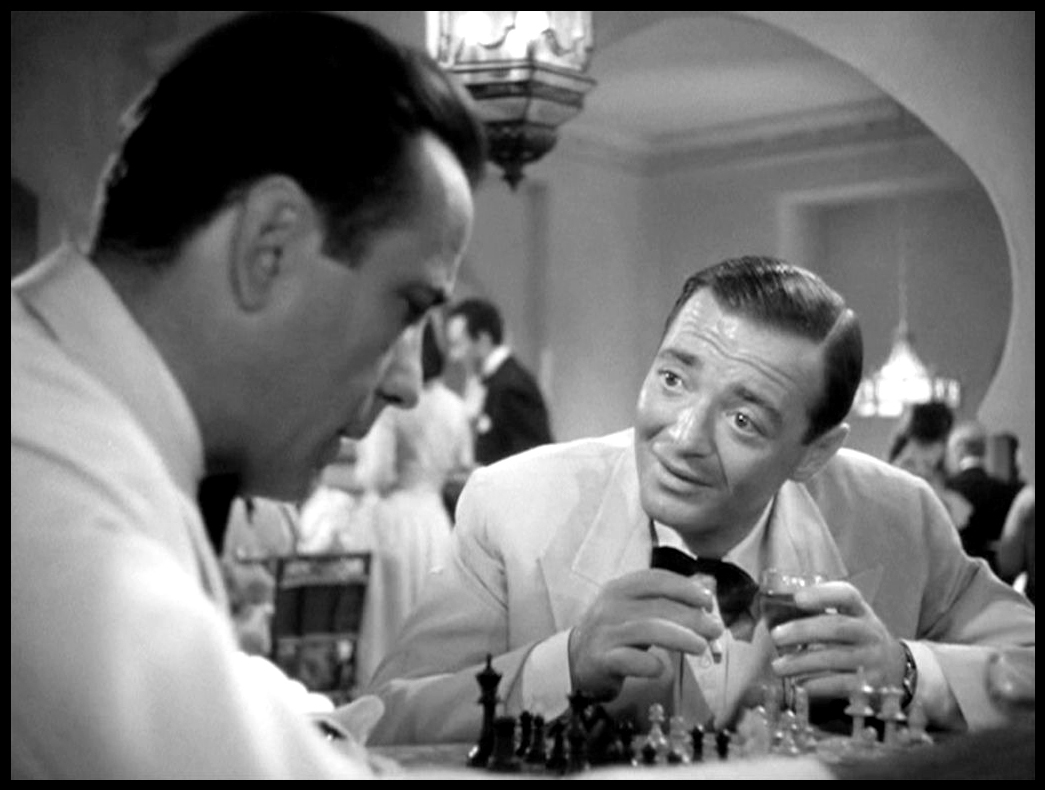
It ain’t even remotely plausible—well, at least even remotely plausible as it’s presented, that is.
Of course, there’s many ways objections like mine can be obviated, the conceit can be made believable—and all it would take is a passing line requiring even as little as a few seconds of screen time. Maybe Rick took over his brother’s place there—that sibling having moved on (to do something directly relevant to the war which surrounds them all?), or died (at the hands of the Nazis?) or even stayed and partnered with Rick? (If that last—which would be a major addition to and very much change the script, admittedly—that additional new Brother character might offer possible pluses to the overall story as well; as participant, confidante, foil, observer and/or narrator? But yes, it’d be a major insertion, so I hesitate to do more than suggest the notion—just to further underline the variety of options—as this specific one would’ve required major ‘re-balancing’ throughout the script.) Or maybe someone else, someone peripheral, owns the already-thriving business, and Rick just runs it? Does the story really even require it being that wildly successful, always-packed venue? (Why not just a dusty dive bar? And cheaper to shoot; fewer extras. But the mesmerizing cauldron of activity in what we have—and Rick’s authoritative command, which I think is necessary for the character and events—would certainly be quite different. There’s a zillion possible solutions; determining the optimal a delicate, fragile balancing act.) Again, I accept I’m perhaps overly exacting in the matter—but how DID this arriviste American build such a spectacularly successful business in that short time? Look, a quick line or two early on would make things believable, buyable—resulting in no audience disengagement. Again, rigidly diligent script-to-film management (by the director and producer, specifically, but really by everyone involved) would have precluded or at minimum mitigated potential skepticism in any viewer.
Sure, maybe you personally Have No Problems Whatsoever with either of the two aspects I expose above. Understood. But a director’s job—actually everyone’s job, but he or she is the Ultimately Responsible Artisan—is to obviate or preclude every possible bit or aspect that potentially confuses, derails or detracts from the entirety.
This is not minor stuff—a chance for a fan of the movie to cavalierly roll his or her eyes, dismissing it all with that smugly portentous ‘missing-the-forest-for-the-trees’ shibboleth. (I get into such specious thinking in somewhat greater depth in the essay on the films of Orson Welles; scroll down to the June 2023 entry if interested.)
My inventive guitar-playing pal Jim says these dates and the timeline to which I object are still really, really peripheral; things very, very few people know; I’m being way, way too demanding. (I always find myself instinctively underlining stuff Jim says—emphasis, and repetition for more emphasis, are his danged Conversational Fortes.) But let’s consider that for a moment. The film was released in (I just looked it up) November of 1942—less than a year after when the story is set. Okay, sure, TODAY few people would know when the Germans occupied Paris—hell, how many could even tell you when was Franklin Roosevelt’s “date which will live in infamy”? But THEN?!? Yes. It was RECENT. The entire world was at war, fer christ sake—major events were on the top of everyone’s minds; discussed, debated and referred to constantly in daily conversations.
I repeat: this is not esoteric arcana; it is not minor stuff. The filmmakers knew that, of course, but they let careless disregard prevail.
3. But okay; now we’re on to the matter in Casablanca about which I don’t give even an inch. You may have just missed, indulged, shrugged (or not be equipped to realize) the blunder—lucky you—yet that it exists at all is truly indefensible; there Is Simply No Excuse.
The ‘Letters of Transit’—the ‘MacGuffin’ in the whole story (to cite Hitchcock’s term for such plot device)—are THE valuable commodity in this story because, to quote the Peter Lorre character in the first several minutes, they were “signed by General de Gaulle!...They can not be questioned!” This ain’t extraneous color, it’s at the pivotal center of the entire film.

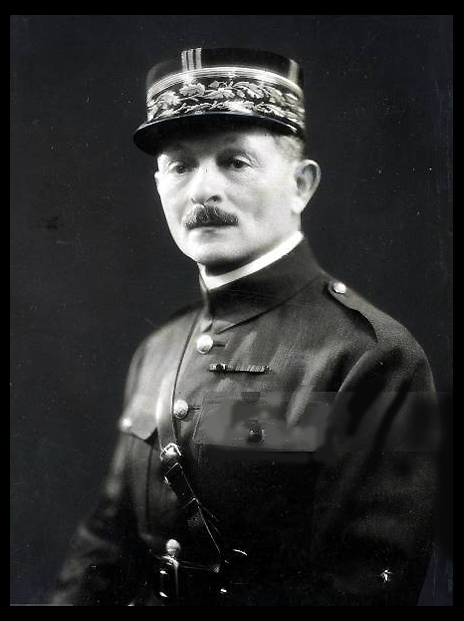
But WHAT?!? How the hell would something signed by the guy leading the Free French forces against the Nazis, Charles de Gaulle, be respected by the Nazis?!? It’s plain stupid. When I first heard it, I was taken completely out of the action, out of the movie entirely. They lost me and my attention—and I was certainly NOT alone. It Just Made No Sense.
And, in fact, that’s not what was in the script! Oh, it’s what Lorre said in that take of the scene, yes. But it’s not what he was supposed to say. Being both stunned and flummoxed in my first viewing of this film that’s revered by so many, I did some asking around over the years, even happened to get a copy of the shooting script*, to learn the Letters of Transit were actually (in the script, that is) “signed by General Weygand!” I’d never heard of this ‘Weygand’ fellow, and assumed him fictional (which would’ve been absolutely okay, it would’ve worked; every other character in Casablanca is fictional) but a little more research revealed Maxime Weygand was a real-life Vichy French (German collaborationist) general—so whose authorizing signature on those danged Letters of Transit would indeed have made sense.
As I understand it, they simply decided that this was the best reading of the scene—the best performance of the scene—that Lorre had done. And even though he’d had a temporary lapse of memory and so substituted ‘de Gaulle’—on the fly, for the name he was supposed to say—they kept it and used it. Okay, fine—fine with me. Presumably the good choice. But then HAVE HIM LOOP “DE GAULLE” IN AFTERWARDS, DAMMIT. HAVE HIM DUB IN THE RIGHT NAME LATER—DON’T JUST WALK AWAY THINKING “FUCK IT, GOOD ENOUGH, WHO CARES?”! (And if Lorre, for whatever reason, is unavailable, one must presume—due to the presence of that invaluable script supervisor introduced above—that he indeed did other line readings that were faithful to the script. Edit them together, folks! It takes—at the very most—five minutes or less to do. Jeesh....)
Because as is, it makes the entire film—yes, well-cast and well-acted; generally engaging—a rickety farce. It displays arrogant contempt for our—well for everyone’s, including the filmmakers’ own—intelligence and devotion to craft.
All the above matters are what a truly determined and responsible director must be concerned with; and intelligently, consistently dominate. Along with wrestling all those countless—myriad(!)—other details, large and small, that come with the task. If one can’t diligently manage the simple stuff, however, the rest is effectively just transient curiosities and ephemera.
Case closed.
The enveloping bottom line, unfortunately, is that there’s a lot of people with extremely well-paid and lionized careers as directors and producers; very few of whom are in capably careful command of their medium or media.
Again, this is not to jab unfairly at the mostly solid, occasionally even inventive, work in Casablanca by director Michael Curtiz, nor to unfairly malign the generally otherwise engaging film. It’s just to properly note he (meaning here to include they—so producer Hal Wallis et al as well) should have, and easily could have, done better. I repeat: editing in the right general’s name could have been done in less than five minutes. But even if it’s A Major Time-Consuming and Costly Hassle, respect the audience’s (and your own) intelligence: FIX IT!
Respect the Audience’s Intelligence.
Here below is a collection of screenshots showing the subtitles for the film in various languages. The only ones correctly (vis-à-vis the actual damn script) identifying Weygand, despite what Lorre in fact says, are the last two—the French (of course!) and for whatever admirable reason, the Dutch. All the others carelessly (albeit with perhaps lamentable ‘fidelity’ to what they were given) parrot Warner Studios’ idiotic ‘de Gaulle’.

(Yet—oh what the hell—since I’ve now above kinda touched on the possibility of critiquing more primary directoral objectives in the effort, let me also at least suggest that the Victor Laszlo character, played by Paul Henreid, might better have been portrayed given more flair, more charisma. While not at all outright objectionable—he’s certainly bland but not a cipher—it did seem something of a stretch to buy Ilsa having ever fallen in with him. Here again, though, there are quick script solutions, or even [if lucky] on-the-set adjustments and/or interpolations, available which might have vindicated that portrayal arrived at by Curtiz and Henreid. [A couple of intimate two-shots of Ilsa and Victor displaying deep affection, not just respect, for each other? A real kiss instead of the couple of pecks on the cheek?] However, if the role, as scripted, had simply been played with more compelling dynamism [and staged to empower that], it might also have given greater resonance to the contestation between him and Rick, and depth to Ilsa’s inner conflict. And with all the many close-ups of Bogart’s Rick Blaine, a little more similar attention to Henreid’s Victor Laszlo couldn’t have hurt.)
*What is sold as a ‘shooting script’—available via specialist booksellers and various websites—is rarely ever an ACTUAL shooting script. What’s furnished is really almost always just a transcription of the final cut, in script form. Nice, but revealing nothing of what changes transpired during production and editing. An actual shooting script is a different animal entirely—and they are, understandably, rather hard to come by, as they’re kinda dispensable after a point in the production process. The script of Casablanca I got, however—as one of the hand-outs in Robert McKee’s high-profile (and expensive!) three-day script writing intensive in LA (taken by just about everyone in Hollywood at one time or another during his heyday as script guru, and partly to blame for the homogeneous, fill-in-the-blanks feel of American industry movies over the past few decades)—even had the name Weygand in it (well, misspelled as ‘Waygand’). (It was McKee, by the way—who certainly had a surfeit of industry insider connections to reveal such stuff—who reported the above basics of what had transpired during the shooting of the film.) |
April, 2025: Get one for your car...
Plaster ’em everywhere. Or hell, just carry a felt marker and tag it all over!
Seriously.
Because it’s code—and Republican-Nazis certainly know what it means—it especially gets under their skin.
Good.

March, 2025: Lessons of and from Achilles
This is a book review—rather, recommendation—which we’ll get to after a short...um...let’s call it a Preamble Ramble. (Or Rambling Preambling?)
Homer’s Iliad has really nothing—well, very little—to do with the Oath of Tyndareus (or Oath of the Suitors), the Judgment of Paris, the Abduction of Helen, that ‘face that launched a thousand ships’ (and she prototype Trophy Wife) or the storied Trojan Horse.




Or really necessarily, upon dispassionate reflection, with the Trojan War at all. Beyond, that is—to risk being densely facile about it—immediate inspirational context and ‘theatrical setting’. It is Archaic Period Greek mytho-history, after all.
But the reportage and historicity, from the even possibly roughly or loosely journalistic to the obviously wildly fabulous and supernatural, are ultimately but ephemera. What it’s genuinely all about is revealed in the Iliad’s very first line:
“Sing, goddess, of the wrath of Achilles, son of Peleus.”
The heart of what’s addressed—with proper Bronze Age accoutrements—is the Self-respect, Anger, Humanity, Motivations, Doubts, Integrity, Sorrows, Obeisances and Obligations of Proto-Superhero Achilles in the Trojan War. The Iliad chronicles events in those few months outside Troy which surround one who knows—because it’s been foretold by the gods—that his inalterable, black-or-white future is to either return home and live a long and fruitful life, or die soon in heroic battle. One or the other. The destiny of Achilles is a guaranteed, dichotomous representation of the otherwise ambivalent gamble, the erratically unfathomable risk that every other man or woman makes, whether consciously or not, in time of greatest trial. He’s still alive when the Iliad ends, though his fate—the fate he’s chosen—has been established.

If unfamiliar with the Iliad, it’s helpful—probably even surprising upon first encounter—to note events within transpire entirely during just two-three months in the ninth year of the ten-year Siege of Troy. The Greeks have been camped outside the place for almost a decade since their arrival at the beginning of the Iliad—and it’ll be a good while after it ends before Trojan Horse trickery wraps things up.
The whole of the Trojan War is told in what’s now called the Epic Cycle (sometimes called the Trojan Epic Cycle to distinguish it from the Theban Cycle—that latter later dramatized by Athenian playwrights in The Bacchae, Oedipus Rex, Seven Against Thebes, Antigone, etc, though all the original source poems have been lost). It’s encompassed in eight poems, of which only the Iliad and the Odyssey remain wholly intact—so directly revealed mostly in fragments, corroborated and ‘filled in’ via mentions elsewhere in ancient texts, including in dramatic criticisms by Aristotle. (For a concise but well-presented overview of the poems in the Epic Cycle, click HERE.)

The primacy of Homer’s two poems within the Epic Cycle—even that there is some kind of intentional or de facto ‘individualized, delineated segmenting’ of the mytho-history into the various poems (i.e., existence of the ‘Cycle’, itself, other than as convenient academic taxonomy)—is explored and thoughtfully challenged in The Tradition of the Trojan War in Homer and the Epic Cycle, by Jonathan Burgess. He writes, “If the tradition of the Trojan War were a tree...the Iliad and Odyssey would be a couple of small branches, whereas the Cycle poems would be somewhere in the trunk.” Indeed, while only the Homeric epics survive as complete entities, and their literary accomplishment surpasses, they’re certainly not essential to The Story of the Trojan War. That’s not all he addresses, of course. But the challenge to simplistic apportioning resonates—the works in the Epic Cycle assuredly didn’t arrive systematically, in toto or sequentially, from some well-oiled industrial age factory, each ‘update’ following simplistically on the last with overlaps and discordances half-heartedly papered over. (It ain’t no Star Wars-DC-Marvel Comics ‘cram another square peg prequel/sequel into every possible round hole/sound hole’ franchise.) Also resonating is his general counsel disabusing understandably easy elevations of the Homeric works, without full regard to—to the near exclusion of consideration of—the largely lost (and more directly pertinent) complementary works, and so ignoring historical context and available substantiations of literary integrities. Burgess’s scholarly analyses, throughout, strike as eminently reasonable and consistently, thoughtfully illuminating.

And if one allows later Roman writings, particularly but not limited to Virgil’s Aeneid, to append and elongate the Epic Cycle forward, the story—the ‘history’—goes all the way on to the mythic founding of Rome by those famously suckled-as-infants-by-a-shewolf, and peevishly-quarrelsome twin brothers, Romulus and Remus. (Officially, Romulus founded Rome on his own, of course—after killing Remus when the brats couldn’t even simply agree on which of two neighboring hills they’d start up the damn place; and then, well, kinda one thing just led to another. Kids—waddaya gonna do wid ’em, eh?)
(For a perhaps fun, but without doubt frenetically-guided[!]—whirlwind[!]—tour of just the Trojan War, click HERE. If you handle that without wrist ache [or headache] from too much stop-reset-start-stop clicking, the same source offers similar treatment of the Iliad’s er, um, ‘Big Bucks Travelogue Sequel’, the Odyssey; click HERE for that. Also finally, for another breakneck careen, through the, unh, Alternate-Choice[!] Big Bucks Travelogue Sequel, the Aeneid—so to different lands with different adventures—click HERE. [A little exposure to these flamboyancies probably goes a long way—granted—yet the subtextual message is one that well-reinforces the ‘grab-bag free-for-all mosaic’ aspect of the entirety with which we’re engaged here. So fine.])

It’s commonly agreed there was a historical Troy, in a place called Hisarlik in present day Turkey, opposite Cape Helles on the Gallipoli peninsula. For a large presentation of general current understanding of the period and milieu, there’s a refreshingly intelligent six-part BBC series from some years ago that remains admirably accomplished and relevant, In Search of the Trojan War—presented with reserve and circumspection. It’s devoid of pseudo-suspense (as opposed to what one encounters in the usual ‘old guys History Channel’ condescending fabrications) or facile ‘good guys/bad guys’ characterizations. (For instance, on this latter observation, the standard eviscerating castigation of enthusiastic autodidact archeologist Heinrich Schliemann for ignorantly destroying so much of Hisarlik in his mid-nineteenth century attempt to unearth the Troy of the Iliad—wholesale destruction which he most certainly did via what’s today called “Schliemann’s Trench”—is properly fit into the times in which Schliemann worked and with deference to his presumably intended seriousness.) As the series was written and produced in 1985 (by Michael Wood), it also antedates current fashion of unnecessary over-larding with CGI, or timidly advancing presentist socio-political imputations. For Part One, click HERE.
And all this still leaves undetermined whether there indeed was an actual Trojan War. Sure, it looks like there was a Troy, but there’s no unimpeachable archeological proof—or even plausible ‘archeological-historical suggestion’ —of there ever having been our so-called Trojan War.
—of there ever having been our so-called Trojan War.
My point with the desultory pastiche of citations, speculations and en passant digressions above is to superficially review how wide-ranging the matter of the purported Trojan War is, along with the extended historiography of, before and after it. (My own intuitive presumption is that there was such specific conflict, but that ‘cultural massaging’ through ensuing centuries to Homer took it so far from the source reality as to be utterly alien to even remotest identification today. But hell, who knows? Of primary currency, certainly, is that the story—no, again, make that The Story—has been canonized.)
And really, as asserted earlier, the Iliad is quite arguably about none of that at all, other than as enjoyable, curiously fanciful window dressing. The Iliad focuses on Achilles—on ‘Achilles Agonistes’. As the Greeks’ most esteemed chieftain, his primary adversary is Agamemnon, who as leader of the besiegers nominally outranks him; and as an actual combatant, it’s Hector, Troy’s favorite prince and greatest warrior.
So enough grounding, perhaps.

Because the book I wish to champion here is The War That Killed Achilles: The True Story of Homer’s Iliad and the Trojan War, by Caroline Alexander, a title which almost sounds like some kind of demotic re-write, doesn’t it—yet another in the long line of ‘Greek myth fanfic’? (So a kinda “Hey, Here’s Yer Basic Iliad, Kids!”, laid out in easy-to-read contemporary vernacular—with comic book art by a Jack Kirby devotee?) Or perhaps a ‘study guide’?
It’s none of that. Most pertinently, the book incisively counters grandstanding, great-glory-of-war fatuousness—as emblematized in illustrations like the painting up above right (of Achilles dragging the body of slain Hector behind his chariot)—with a profoundly humanist empathy, effectively (though not patronizingly) characterizing those inane comic-book heroics which overwhelm the great vast majority of dramatic constructions, mythic representations and historical accounts as the imbecilic puerile fantasies they ultimately are. And what she exposes is all there in the Homer, of course, if one reads dispassionately, without formulaic preconceptions. (As Ken, my vastly erudite critic pal up in Berkeley, cautions [though I submit it’s perhaps obvious]—citing Erich Auerbach’s seminal 1953 Mimesis: The Representation of Reality in Western Literature in support—any such analytical deductions must be scrupulously derived from the text, of course, as [to quote the Auerbach] “Homeric heroes...are splendidly described; their emotions are constantly displayed [simply and directly] in their words and deeds...but they have no [literarily reported psychological] development”. Meaning, for instance, there ain’t no august soliloquies for us in the cheap seats, spilling details of a character’s inner mental wranglings. Said can only be calmly, soberly reckoned; and Alexander does just that.)
Readily admitting I don’t come through with a resounding climax here, I’ll simply direct to a very short—just 2:15 long—extemporaneous commentary by Ms Alexander on an example in the Iliad substantiating the primary exegesis she carefully explores in the book. It’s all you’ll need, most likely, to recognize what makes this different. So please, click HERE. There’s little I can offer to make the essential virtues of the effort more clear.
I will add, though, that—aside from the refreshing depth of insight and original thinking—the effort is also adeptly organized, written and produced, with widely-ranging endnotes that kept me flipping back and forth to ensure I assimilated them all as they appeared. So hey, I guess it really IS a study guide of sorts—a study guide for an informed and intelligently disciplined readership. If you’ve read the Iliad or not—and if so, whether in school or on your own like me—this book is highly recommended.
Codicil: A primary consideration that always, always enters my own thoughts when reading of generals, mythic warriors, chiefs, commanders, strategists, political leaders in times of conflict is how truly overlooked—how effectively, truly ephemeral(!)—are the UNheralded, UNacclaimed, UNstudied participants on the fronts, who are reported more often as constituents in the aggregate, in numbers, than as human beings. (There are so many horrific deaths chronicled in the Iliad, for example, yet I don’t recall even one instance in which an unconnected foot soldier is deemed worthy of mention by name. It may occur, but if so it’s anomalous. Yet that’s as it always is, isn’t it? Deaths and morbid mutilations of individuals, and thoroughly destroyed lives of their families, are really but abstractions and distractions, impertinent to The Main Event. [Many studies spend considerable time conjecturing on the effects of Napoleon’s transient physical afflictions at Waterloo, for example; but over 10,000 people died there; with another 50,000 gravely injured, mangled, scarred for life. And so, of course, indurated slaughter prevails even here within these attentively self-aware parentheses; reducing me to address the foregoing, those forever-destroyed lives, in reckless numbers as well.]) Pausing to consider for a moment, it seems almost a dereliction—beyond historical or writerly necessity or convenience, no? I mean we desperately need to be brought firmly, emphatically, persistently back down to Earth—back down to where horror and finality overwhelm, back down to where they drown in blood any chimeric, ostensible ‘victory’ or obtuse attempt at same.
I’m reminded, thinking of all that’s lost in ‘glorious battle’, of the heartbreaking now well-known letter, written in the early summer of 1861, by American Union Civil War Major Sullivan Ballou to his wife Sarah. For a reading of it taken from the PBS series The Civil War, click HERE.
I think too of the poem, written in 1915 by English soldier Patrick Shaw-Stewart while on the island of Imbros, just a few miles from ancient Troy, incidentally, while readying himself for useless combat in the Gallipoli campaign. It’s called I Saw a Man This Morning, but is better known as Stand in the Trench, Achilles.
I saw a man this morning /
Who did not wish to die; /
I ask, and cannot answer, / If otherwise wish I.
Fair broke the day this morning /
Upon the Dardanelles: /
The breeze blew soft, the morn’s cheeks /
Were cold as cold sea-shells.
But other shells are waiting /
Across the Aegean Sea; /
Shrapnel and high explosives, /
Shells and hells for me.
Oh Hell of ships and cities, /
Hell of men like me, /
Fatal second Helen, /
Why must I follow thee?
Achilles came to Troyland /
And I to Chersonese; /
He turned from wrath to battle, /
And I from three days’ peace.
Was it so hard, Achilles, /
So very hard to die? /
Thou knowest, and I know not; /
So much the happier am I.
I will go back this morning /
From Imbros o’er the sea. /
Stand in the trench, Achilles, /
Flame-capped, and shout for me.
Like Sullivan Ballou in his war, Patrick Shaw-Stewart was later killed in his.

Which leads me to note another book, also born from events in World War I; but this often joyful, life-affirming, sometimes even thrilling: Meetings in No Man’s Land: Christmas 1914 and Fraternization in the Great War, by Marc Ferro, Malcolm Brown, Rémy Cazals and Olaf Mueller—centering on the inspirationally poignant “Christmas Truces” on many front-line trenches in World War I. ‘Inspirationally poignant’ because the cease-fires were derived entirely from the bottom up; fighters in the front-line trenches, evading and ignoring immediate ‘duty’ and ‘glory’—and officious officers—to share their humanity.
The book is filled with anecdotes that bring out great, actually satisfying and affirming grins. Impromptu soccer games between opposing troops, believe it or not; songs and responses requested, sung out and applauded; cigars and spirits exchanged with handshakes and hugs—and more. Following are a few excerpts recounted, quoting reports from men on the front lines:
After several German and English soldiers posed for pictures together[!] in No Man’s Land on Christmas. “We’re having another truce on New Year’s Day—as the Germans want to see how the photos come out!”
“Their officers finally decided the truce should end, but they found they couldn’t get their men back into the trenches. So they walked over and pleaded with us to fire on them, to drive them in. Naturally, this we refused to do, and although we fired volleys, they were all in the air—and were greeted with cries of “Great shot!” from the amiable Germans, who continued to sit comfortably in rows on the parapet.”
“At one point our men, admiring the better progress made by the enemy opposite (in improving their trenches during the ‘truce’) went over and asked if we could borrow some of their tools; the Germans agreed.”
“One day the Germans in the trench near ours yelled over, asking if any of us came from Edinburgh, and I shouted back that I did. They asked if we knew a certain hairdresser’s shop on Princes Street. They’d worked there! I replied that I worked practically next door and had often been in the shop... Not a shot was fired, until our officers threatened to shoot us instead! So we spent that day and the next wasting ammunition—trying to shoot the stars down from the sky.”
“At about lunch time a message came down the line to say the Germans had alerted us their general was coming this afternoon, so we better keep our heads down as they’d have to do a little shooting to make things look good.”
These first-hand reports, and so many others recounted, delightfully reinforce what we all know: that regular people have more in common with each other than with imperiously scheming czars, emperors, kings, sultans, oligarchs, presidents and shahs. In the words of the inspiriting Eugene V. Debs, “The working class has never had a voice in declaring war. If conflict is right, let it be proclaimed by the people—you who have your lives to lose! But no; always the rulers make the wars; always the people fight and die.”
I’ll near-close this by recalling that oft-cited three-word quote from US Civil War General William Tecumseh Sherman. Though here’s his complete statement: “I confess without shame that I am tired and sick of war. Its glory is all moonshine; even success the most brilliant is over dead and mangled bodies, with the anguish and lamentations of distant families, appealing to me for sons, husbands, fathers. It is only those who have never heard a shot, never heard the shriek and groans of the wounded and lacerated that cry aloud for more blood, more vengeance, more desolation. War Is Hell.”
Surely patrician warrior Achilles, both determined combatant as well as senior officer, was defeated by the hell of war—long before his own ‘storied’, ‘glorious’, ‘heroic’ death*.
*Indeed, yes—albeit confirmed in testimony that’s admittedly kinda ‘critically after the fact’. If one opens the other magnum opus credited to Homer, the Odyssey, and flips to Book 11, we find Odysseus in the underworld, where he encounters the ghost of a now-versed and perhaps wiser Achilles. In response to Odysseus’ praise for Achilles’ achievements and the esteem in which he was held in life—so much so that he rules even here in Hades—Achilles bitterly asserts that he would rather be a serf among the living than king of the dead. “When thou wast alive, Achilles, we Argives honored thee even as the gods; and now that thou art here, thou rulest mightily among the dead. Wherefore grieve not at all that thou art dead, Achilles.” “Nay, seek not to speak soothingly to me of death, glorious Odysseus. I should choose that so I might live on Earth, to serve as the hireling of another, of some portionless man whose livelihood was but small, rather than to be lord over all the dead who have perished.” |
January, 2025: On the Fight to Save America
(This essay was originally posted shortly after the election, November 2024. It’s been moved here to insert a more incisive take from Canada in that slot. Scroll down to November 2024 to see Andrew Coyne’s perfect day-after-the-election Globe and Mail column. I think the ‘call to arms’ below perhaps better fits the zeitgeist this month, when the Republican-Nazis begin their gruesome arrogation.)

Sure, the above graphic is a cheap shot—well, certainly an easy and unfairly-generalized one. Because even here in California, which The Piece Of Orange Human Garbage didn’t take, the Republican-Nazis still garnered millions of votes. And conversely, mired in those, er, on-the-surface ‘majority-stupid states’ across the country are tens of millions of people who possess both intelligence and a moral compass. The great challenge placed in front of each of us today is to martial our determined courage—in the face of, and fight against, cynical reactionary manipulations and outright fascism.
There will be much pain, much suffering, and much death on the way; but in the end, right shall advance on this Earth—as it always inexorably though haltingly does.
But the misery, the suffering, and the deaths will transpire. Clown Trump is already directly, personally responsible for hundreds of thousands of dead Americans from Covid in Term One—on that there’s little argument. And the deaths, destruction and suffering from his assertive racism, stunning ignorance and plain blunt-force incompetence on other matters, in the US and elsewhere during those four benighted years, are also beyond debate. Was all that just forgotten?
So here at the beginning of 2025 we awake confronted by the resurgent degeneracy of the impending Trump Term Two.
And America arrives at a cataclysmic, epoch-defining Tipping Point.
Most—not all, no, but most—societal decay found in this world is the result of arrogant ignorance, generated by the simple stupidity whence it almost always derives, and fallen prey to the dark maneuvers of those who seize upon it for selfish, greedy gain. And Republican-Nazi Party ‘success’ in recent times rests entirely upon finessing such delusional stupidity and arrogant ignorance to create that resultant moral and societal decay.

A quote upon which I sometimes reflect—and regularly recite, as it walks in lockstep with my own sentiments—comes from the 20th century English poet Edith Sitwell:
“I’m patient with stupidity, but not with those who are proud of it.”
I presume that she, like me, had even less tolerance for the garish vulgarity, cowardice, greed, incompetence, vicious racism, homophobia, misogyny and smug criminality that the unrestrained combination of arrogance and stupidity begets. (Oh right, cf. D.Trump....)
The portrait at right is of Sitwell at around age 25, by Amedeo Modigliani.
I try to refrain from the potential self-indulgence of including strictly personal experiences in these irregular essays, unless such may reasonably contribute insight on, or provide empirical illustration of, what’s being addressed or advanced. So I’ll therefore also share another quote here—and this from my own mother, because it’s directly pertinent. She was German Lutheran, lived through the rickety Weimar Republic as a small child, and the rise of the Nazis in her elementary school and early teenage years. Before turning 20 years old she learned that both her only sibling, two years her senior, and her fiancé had been killed, each serving in the German Army on the Russian Front, in the apocalyptic destruction, hate, madness, genocide of Hitler’s Racist World and Meatgrinder War.
And so I precisely remember her prescient reaction when Ronald Reagan was elected US president, long ago in 1980. In quiet disgust and dismay, she slowly, reflectively counseled, “This is the beginning of it here”.
I didn’t realize that then—how many did? To usually optimistic me it was but an unfortunate ‘delay’; disappointing, obviously, but a fugacious interruption. Intelligence and morality would return dominant; and the nation’s trajectory continue, albeit ever stumbling and ever sluggishly, generally upward. (For a sane, sober—albeit also solidly entertaining—look at those times, see the December entry below.)
But she was right. From Reagan to Bush to Clinton to W. to the boxed-in Obama to pompous scumbucket Trump, the American journey sinks ever further into viciously anti-democratic, anti-woman, anti-union, racist, greedy, self-entitled authoritarian manipulations—and ‘justifications’. Looking back from the swaggering stupidity ascendant today, Reagan the preening, foaming corporate tool and his criminal cronies seem almost quaint, don’t they—in contrast almost, well, ‘presentable’? (And going back earlier, war criminal Richard Nixon rather pragmatic and even a bit ‘statesmanlike’, no? In comparison, I mean.) Of course, any president is as much a generalized symbol as determined actor—it’s Reagan’s, W’s, and Trump’s unleashed goose-stepping flunkies who fanatically execute the on-going catastrophe they personify and advertise, after all. (Yet on even just the personal level, doesn’t Trump’s utter moronity in particular make W. Bush appear, in retrospect, to’ve been...well...‘not-so-dumb’ after all—and Reagan a cultured damn-near genius? Again, just in comparison?)
And so, my god, the once great promise of America accelerates this now decades-long, continued sad decline into moral corruption and rotted irrelevance. As the growing ‘Accepted, Approved, All-American’ brand of outright fascism parades ever more imperiously, ever more confidently, forward.

Over the years, I’ve occasionally engaged with someone, someone younger than I, who head-scratchingly laments what he or she sees as (to distill the thinking) ‘too much grey’—no straightforward answers to the toughest challenges of the day; too many caveats, exceptions, complications. “I wish I lived back in the 1960s. The right and wrong side of the struggle for civil rights and against the Vietnam War seemed clear-cut, pronounced, certain.” Yes, they were.
Such times are now again upon us. Authoritarian neo-Nazis are on the march, here and throughout the world. And there’s no question which is the right side, the right side of history—the Right Side of Humanity, Intelligence, Morality.
Sure, there’s a lot of dumb people in America. Hell, there’s a lot of dumb people everywhere. I’m reminded of a third quote that pertains here—yes, yet another penetrating observation from the often-great George Carlin. “Think of how stupid the average person is. Then realize it means half of them are even dumber than that.”
But not all of them are dumb and proud of it. The innocents, the preoccupied and the dispossessed are too often effectively dissuaded, or flummoxed, or just swept along—and it’s perennially exasperating. They’re simply ignorant; which is intrinsically unfortunate, most certainly; but no crime. (The criminal manipulations of the greedy, imperious and religiously fanatic in maintaining and spreading ignorance is another matter, of course.) Most are open to learning the facts, and so slim hope for America yet remains.
There is a big job to do in coming months and years—educating the deceived, the manipulated and the marginalized, so they may recognize who is who, and what’s at stake. Despair is but wasteful self-indulgence.
I promise to do my part, to the best I am able, on the ground and engaged, with focus and determination. Countless thousands of independent others, across the country and around the world, are similarly steeling themselves and mobilizing.
Dumbfuckistan can not prevail.
We Shall Overcome.
We Shall Overcome.
December, 2024: Recalling the Era When It All Began
So when did it start to become precipitous, this ever-intensifying American declination?
I’m going to be lazy again—for the second month in a row championing work by someone else rather than arriving with my own thoughts. (Okay, yeah sure, you’re right—I’m pretty much always lazy. Thanks fer noticin’, pal....)
Yet one could hardly ask for a more spot-on set of observations and insights than what we’re provided by the consistently incisive late George Carlin.
And yes, it all became truly serious with the rise of Ronald Reagan and cronies. (Of course, if you wish—yes?—we can use his full name: Ronald Motherfucking Reagan.) Recent confirmations of what we all had always intuited—that the Reagan Mob secretly ensured American hostages in Iran would stay captive until after the election and that gang took office—further substantiates their depraved duplicity. (For more information on that disgusting and treasonous plot, click HERE. Some conspiracies are real; proven.)
To see Carlin properly eviscerate the era in which the American demise gained rapacious momentum—part of a show from the late-1980s, he in peak form—click HERE.
And the least I can do in proper appreciation is provide the transcript below.
Thank you, thank you! This is a lively group we have here—and uh and a—a good sized audience too—and I want to mention that this is probably—I haven’t—yeah, I really haven’t seen this many people in one place since they took the group photographs of all the criminals and law breakers in the Ronald Reagan administration!
Yeah, 225 of them so far—225 different people in the Ronald Reagan administration have either quit, been fired, been arrested, indicted, or convicted of either breaking the law or violating the ethics code. Two hundred and twenty-five of them—and Edwin Meese alone, Edwin Meese alone has been investigated by three separate special prosecutors, and there’s a fourth one waiting for him in Washington right now. Three separate special prosecutors have had to look into the activities of the Attorney General—and the Attorney General is the nation’s leading law enforcement officer!
See that’s what you’ve got to remember: this is the Ronald Reagan administration we’re talking about. These are the Law and Order people! These are the people who are against street crime—they want to put street criminals in jail, to make life safer for the business criminals! They’re against street crime, yeah, they’re against street crime—providing that street isn’t Wall Street.
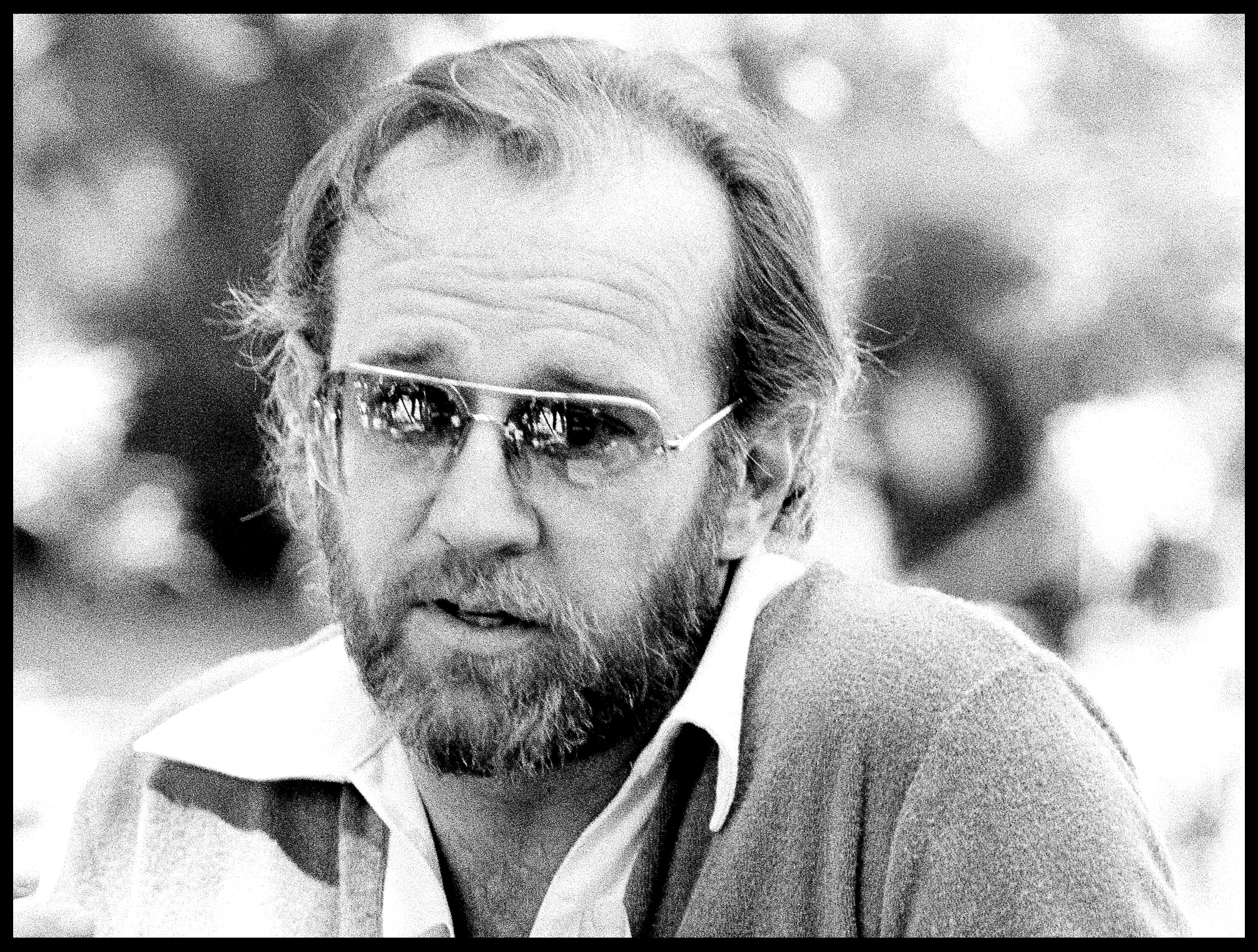
And the Supreme Court decided about a year ago that it’s all right to put people in jail now, if we just think they’re going to commit a crime. It’s called ‘preventive detention’—all you got to do now is just think they’re going to commit a crime. Well, if we had known this shit seven or eight years ago we could have put a bunch of these Republican motherfuckers directly into prison! Yeah, put them in the joint where they belong and we could have saved the money of putting these country club pinheaded assholes on trial.
Another thing you’ve got to remember: this is the group of people who were elected with the help of the Moral Majority—elected with the help of the Moral Majority and the Teamsters Union! That’s a good combination: organized religion and organized crime, working together to help build a better America.
Another thing to keep in mind is these Reagan people are the ones that were going to get government Off Our Backs—remember that? That was the rhetoric of the 1980 campaign: “We’ll get government off your backs and out of your lives.”
Yeah, but they still want to tell you what magazines you can read, and they still want to tell you what rock lyrics you can listen to, and they still want to force your kids to pray in school, and they still want to tell you what you can say on the radio. The FCC—the Federal Communications Commission—decided all by itself that radio and television were the only two parts of American life not protected by the Free Speech provisions of the First Amendment to the Constitution.
I’d like to repeat that because it sounds vaguely important! The FCC—an appointed body, not elected, answerable only to the president—decided on its own that radio and television were the only two parts of American life not protected by the First Amendment to the Constitution! And why did they decide that? Because they got a letter from a minister in Mississippi—a Reverend Donald Wildmon in Mississippi heard something on the radio that he didn’t like!
Well Reverend, did anyone ever tell you there are two knobs on the radio? Two knobs on the radio! Of course, I’m sure the Reverend isn’t that comfortable with anything that has two knobs on it—but hey, Reverend, there are two knobs on the radio. One of them turns the radio off—and the other one changes the station! Imagine that, Reverend! You can actually change the station! It’s called freedom of choice, and it’s one of the principles this country was founded upon! Look it up in the library, Reverend—if you have any of them left when you finish burning all the books.
And I don’t know how you feel about it, but I am getting pretty sick and tired of these fucking church people. I have just about had it with these fucking church people—all of them. You know what I say we ought to do with these churches? Tax them! Tax these motherfuckers! If they’re so interested in politics and government policy and public policy, let them pay their admission price like everybody else. Tax them! Hey, the Catholic Church alone could wipe out the federal budget deficit if all you did was tax them on their real estate holdings!
And speaking of real estate holdings let’s get back to Ronald Reagan and his criminal gang. When last we left them they were going to get government off our backs. Yeah, but when when it comes to abortion they don’t mind government being in a woman’s uterus do they? Yeah, backs are no good but a uterus is okay by them! These people call themselves ‘Right to Lifers’—don’t you love that phrase and don’t you love the way these kind of people pervert the English language? Right to Lifers. You realize that most of the Right to Lifers are in favor of the death penalty, and they support the South American death squads, and they’re against gun control, and they’re against nuclear weapons control. When they say ‘right to life’ they’re talking about their right to decide which people should live or die. So these right-wingers, so these Reagan people, these right-wingers in general, these crypto-fascists—they’re against homosexuality. They’re against pornography. They’re against sex education. They’re against abortion. Yeah, they’re going to get government off your back—but they’re going to tell you how to live your sex life. And let me ask you this: How would they know anything about it? Have you ever taken a look at those people? No wonder they’re afraid of their bodies! Take a look at them! Doesn’t it strike you as mildly ironic that most of the people who are against abortion are people you wouldn’t want to fuck in the first place? Doesn’t that strike you as a little strange?....
Right on, George Carlin. God we miss your straight-to-the-heart-of-the-matter thinking.
November, 2024: A Canadian Views the American Calamity
Andrew Coyne, columnist with The Globe and Mail in Toronto, delivers a faultless, composed reaction to the electoral catastrophe in the U.S.A.—the ‘United States of Amnesia’.
Trump’s election is a crisis like no other, not only for the U.S. but the world
by Andrew Coyne, The Globe and Mail, November 6, 2024
Nothing mattered, in the end. Not the probable dementia, the unfathomable ignorance, the emotional incontinence; not, certainly, the shambling, hate-filled campaign, or the ludicrously unworkable anti-policies.
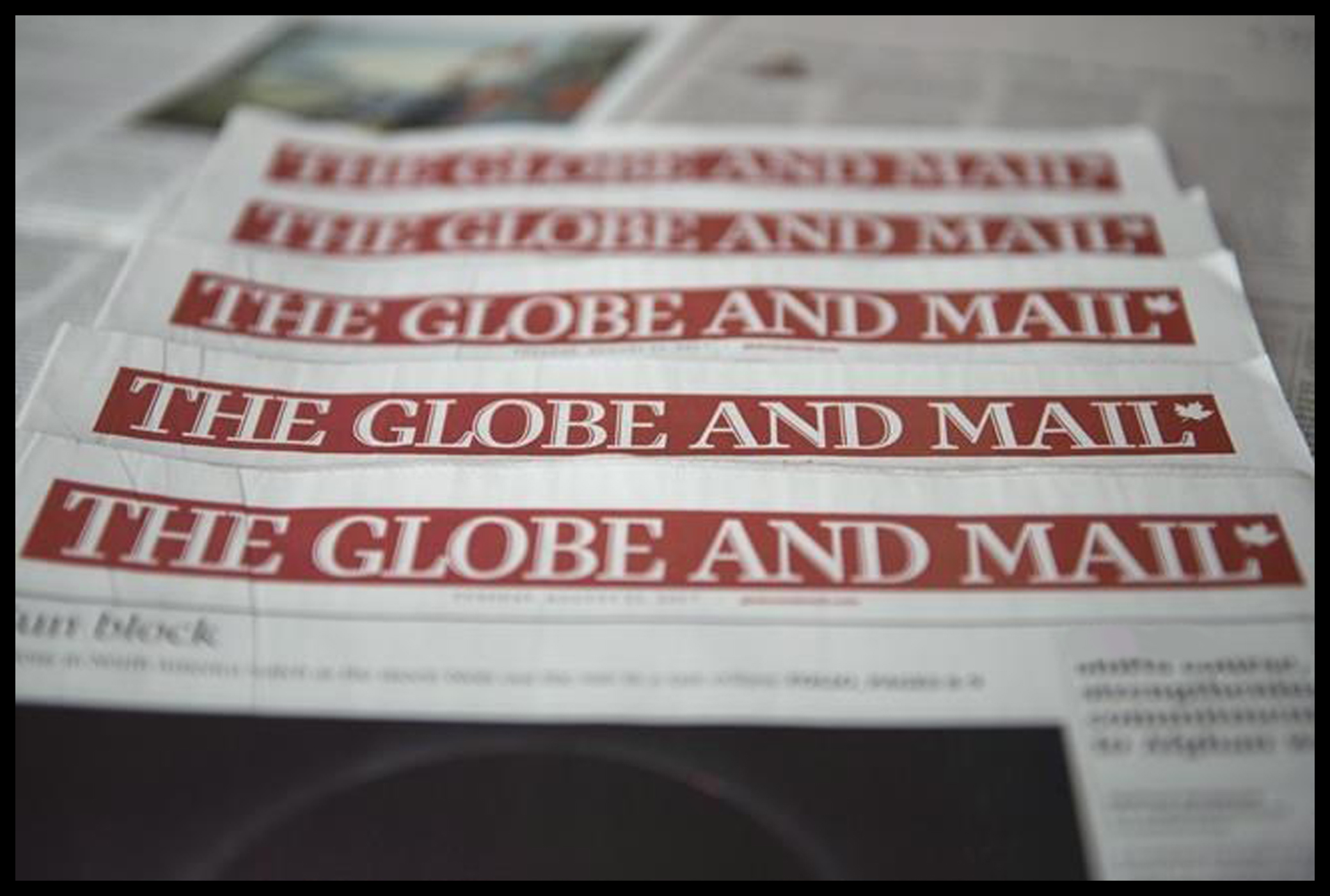
The candidate out on bail in four jurisdictions, the convicted fraud artist, the adjudicated rapist and serial sexual predator, the habitual bankrupt, the stooge of Vladimir Putin, the man who tried to overturn the last election and all of his creepy retinue of crooks, ideologues and lunatics: Americans took a long look at all this and said, “Yes please”.
There is no sense in understating the depth of the disaster. This is a crisis like no other in our lifetimes. The government of the United States has been delivered into the hands of a gangster, whose sole purpose in running, besides staying out of jail, is to seek revenge on his enemies. The damage Donald Trump and his nihilist cronies can do—to America, but also to its democratic allies, and to the peace and security of the world—is incalculable. We are living in the time of Nero.
The first six months will be a time of maximum peril. NATO must from this moment be considered effectively obsolete, without the American security guarantee that has always been its bedrock. We may see new incursions by Russia into Europe—the poor Ukrainians are probably done for, but now it is the Baltics and the Poles who must worry—before the Europeans have time to organize an alternative. China may also accelerate its Taiwanese ambitions.
At home, Mr. Trump will be moving swiftly to consolidate his power. Some of this will be institutional—the replacement of tens of thousands of career civil servants with Trumpian loyalists. But some of it will be atmospheric.
At some point someone—a company whose chief executive has displeased him, a media critic who has gotten under his skin—will find themselves the subject of unwanted attention from the Trump administration. It might not be so crude as a police arrest. It might just be a little regulatory matter, a tax audit, something like that. The targets will seek the protection of the courts, and find it is not there.
The judges are also Trump loyalists, perhaps; or too scared to confront him. Or they might issue a ruling, and find it has no effect—that the administration has called the basic bluff of liberal democracy: the idea that, in the crunch, people in power agree to be bound by the law, and by its instruments the courts, the same as everyone else. Then everyone will take their cue. Executives will line up to court him. Media organizations, the large ones anyway, will find reasons to be cheerful.
Of course, in reality things will start to fall apart fairly quickly. The huge across-the-board tariffs he imposes will tank the world economy. The massive deficits, fueled by his ill-judged tax policies—he won’t replace the income tax, as he promised, but will fill it with holes—and monetized, at his direction, by the Federal Reserve, will ignite a new round of inflation.
Most of all, the insane project of deporting 12 million undocumented immigrants—finding them, rounding them up and detaining them in hundreds of internment camps around the country, probably for years, before doing so—will consume his administration. But by then it will be too late.

We should not count upon the majority of Americans coming to their senses in any event. They were not able to see Mr. Trump for what he was before: why should that change? Would they not, rather, be further coarsened by the experience of seeing their neighbours dragged off by the police, or the military, further steeled to the necessity of doing “tough things” to “restore order?”
Some won’t, of course. But they will find in time that the democratic levers they might once have pulled to demand change are no longer attached to anything. There are still elections, but the rules have been altered: there are certain obstacles, certain disadvantages if you are not with the party of power. It will seem easier at first to try to change things from within. Then it will be easier not to change things.
All of this will wash over Canada in various ways—some predictable, like the flood of refugees seeking escape from the camps; some less so, like the coarsening of our own politics, the debasement of morals and norms by politicians who have discovered there is no political price to be paid for it. And who will have the backing of their patron in Washington.
All my life I have been an admirer of the United States and its people. But I am frightened of it now, and I am even more frightened of them.
(My essay on the ever-accelerating decline of America, which had been placed here—both more emotional and defiant than Mr Coyne’s deliberate and thoughtful analysis above—has become the January 2025 entry, to coincide with the formal change in administrations.
I’ve no doubt the Republican-Nazi takeover starting on Inauguration Day [January 20th, for those of y’all outside the USA] will resemble a well-prepared, well-rehearsed and heavily-armed home invasion—an apocalyptic lightning strike—as this time they come in already knowing which levers to pull, buttons to push, obstacles to finesse. It will be a ghoulish onslaught of depravity and malevolence that my piece, formerly here in the November slot, more combatively confronts.)
October, 2024: “I Am Australian”
A few weeks ago I was introduced to a song with which I wasn’t familiar, but which is well-known—even revered—in Australia. Roger in Melbourne, emailing to comment on the essay about satirist John Clarke (see June 2024, below) included a link to the song and asked my thoughts on it. (He’s one of the few people way down there with a copy of my book, and wondered how the take on anthems—songs meant to inspire political consciousness or national pride, addressed in Chapter 46—might apply to “I Am Australian”, written and composed by Bruce Woodley [from the long-time internationally-successful Australian band, The Seekers] and Dobe Newton [in the similarly long-time Aussie band, the Bushwackers].) To hear the song via the link he sent, click HERE.

The lyrics appear in the video, obviously, but here they are in print.
“I Am Australian”
©1987 by Bruce Woodley and Dobe Newton
verse 1:
I came from the Dreamtime; from the dusty red soil plains.
I am the ancient heart, the keeper of the flame.
I stood upon the rocky shore; I watched the tall ships come.
For forty thousand years I’ve been the first Australian.
verse 2:
I came upon the prison ship, bowed down by iron chains.
I cleared the land, endured the lash and waited for the rains.
I’m a settler; I’m a farmer’s wife on a dry and barren run.
A convict, then a free man—
I became Australian.
verse 3:
I’m the daughter of a digger who sought the mother lode.
The girl became a woman on the long and dusty road.
I’m a child of the Depression; I saw the good times come.
I’m a bushie, I’m a battler—
I am Australian.
chorus:
 We are one, but we are many,
We are one, but we are many,
And from all the lands on earth we come.
I am, you are, we are Australian.
verse 4:
I’m a teller of stories; I’m a singer of songs.
I am Albert Namatjira and I paint the ghostly gums.
We share a dream and sing with one voice:
I’m Clancy on his horse; I’m Ned Kelly on the run;
I’m the one who waltzed Matilda;
I am Australian.
verse 5:
I’m the hot wind from the desert; I’m the black soil of the plains.
I’m the mountains and the valleys; I’m the drought and flooding rains.
I am the rock, I am the sky; the rivers when they run;
The spirit of this great land—
I am Australian.
chorus:
We are one, but we are many,
And from all the lands on earth we come.
We share a dream and sing with one voice:
I am, you are, we are Australian.
 repeat chorus
repeat chorus
There are so many geographic, historic and cultural references specific to Australia in the song that a quick tangent with some explanations is surely required here—and I incorporate a few clickable links, each labeled (INFO), to provide further information as well.
Verse one: ‘The Dreamtime’ is a kinda catch-all term for Australian aboriginal creation/origin myths (INFO). ‘The tall ships’ immediately refers, obviously, to the arrival of European explorers (INFO); but latterly to also include the arrival of convicts sent to the far-off continent from the United Kingdom in the 18th and 19th centuries, as elaborated upon in verse two. (By the way, human habitation of Australia is more recently estimated to have begun around 70,000 years ago. But ‘seventy’ is three syllables, while ‘forty’—and all other decadal determinations under 100k—are a better-fitting two. So the song’s metrical concordance with historicity will—well, yeah, just slightly, almost imperceptibly—benefit when further research perhaps pushes things either up to ‘eighty’ or ‘ninety’, or maybe back down a few tens of thousand of years. [What’s that? Pedantic, you say?....])
Verse two: About those ‘prison ships’ (INFO).
Verse three: A ‘digger’ here (and ‘the mother lode’) refers to prospectors during the Australian Gold Rush of 1851 (INFO); but also, much later, to Australian and New Zealand soldiers in World War I (INFO). A ‘bushie’ is Australian slang for a person who lives in the outback (the bush), and a ‘battler’ is vernacular for a working class Aussie who perseveres despite adversities. And, of course, the Great Depression impacted globally, so in Australia as well (INFO).
Verse four: A ‘ghost gum’ is a tree found only in Central Australia, often depicted in paintings by aboriginal artist ‘Albert Namatjira’ (INFO). ‘Clancy’ is a fictional character in a poem by renowned Australian bush poet Andrew “Banjo” Paterson called “Clancy of the Overflow” (INFO). ‘Ned Kelly’ was a real-life 19th century Australian outlaw sometimes romanticized as a Robin Hood-type figure (INFO). ‘The one who waltzed Matilda’ invokes the enduring popular song—itself jampacked with Australian colloquialisms—called “Waltzing Matilda” (words also by Banjo Paterson; music by Christina Macpherson, derived from “Craigielee” by Thomas Bulch) (INFO).
Verse five: On ‘the rivers when they run’—the many seasonal rivers and lakes throughout Australia (INFO).
There are many, many interesting aspects to this unusually evocative song, which is sometimes forwarded to replace the current national anthem, a predictably banal effort called “Advance Australia Fair”, written and composed by Peter McCormick in 1878. And ‘banal’ isn’t dismissive enough in describing that thing, frankly. Here’s the first verse:
Australians all let us rejoice
For we are young and free.
We’ve golden soil and wealth for toil;
Our home is girt by sea.
Our land abounds in nature’s gifts
Of beauty, rich and rare.
In history’s page let every stage
Advance Australia fair.
In joyful strains then let us sing,
‘Advance Australia fair!’
Holy crap.
Yet I accept that it can be argued—and reasonably, too, given political exigencies and expediencies—that banal, pedestrian (but bombastic, or at minimum bombastically arranged and presented, if possible!) are perhaps general, or de facto, requirements for a national anthem, no? (America’s “The Star-Spangled Banner” is both banal AND unwieldy—so we go beyond the call of duty here.) Yes, yes, there are all kinds of national songs—or what I’ll from here on out call ‘government songs’, so to be able to include state and provincial songs in the consideration, since the mission for all such is much the same. In most cases, the lyrics are plainly (even intentionally?) insipid—presumably to enlist as many citizens as possible without outright alienating even one. Most are but a stew of platitudes and clichés.
Just for fun, though, as everyone has certainly heard it—for those who don’t speak French, or have never seen a translation of the French national anthem—“La Marseillaise” is one that certainly, well, evades being characterized as mundane, warm and cuddly! My god, talk about intimidating—even grisly. To hear it in grandest declamation—with full orchestra and massive chorus gathered in front of the Eiffel Tower, led by determined chanteuse Mireille Mathieu—click HERE. (Oh, and that last line of the repeated chorus isn’t really translated to full effect. The enemies’ blood isn’t supposed to simply ‘soak into the dirt’, but soak into the plowed furrows of our fields [‘nos sillons’]—to irrigate our crops. We’ll save on water by using your blood. Wowie.)
But as for other such songs—here, there, and everywhere: look, I’m accommodating. If you have absolutely nothing of any substance going on in your life, are friggin’ bored outa your mind, you’re a masochist, and/or willing to bravely wade into an aesthetic cesspool and then splash around out there, here’s a YouTube channel devoted solely to government songs—looks like hundreds available there, from every country, colony, outpost and US state. Click HERE. I doubt there’s many welcoming islands in this Ocean of the Bland and Bromidic, but if you arrive at one, hell, lemme know. (Though of course you’ll be implicitly admitting, en passant, that you are that person with nothing going on, bored as hell, a masochist—so there’s that.)
On the other hand, an extant song written for other purpose entirely—though still necessarily inoffensive—may be ‘government adopted’ (cf. the rousing “Oklahoma!”, from the stage musical, and so with that original exclamation point intact in the title, by Oscar Hammerstein and Richard Rodgers; or adopted but with questionable lyrics changed, like Florida’s unequivocally originally racist state song, “Old Folks at Home”, aka “[Way Down Upon the] Swanee River” by Stephen Foster, who never even visited the state, but was looking over maps to find a river with a sonorous sounding two-syllable name.)
And, of course, there are works properly characterized as anthems other than ‘government songs’—“We Shall Overcome” and “The Internationale” being two powerful ones that immediately come to mind.
I’m going to continue consideration of the remarkable “I Am Australian” in a later essay, so the foregoing is more a discussion of parameters—a ‘setting of the scene’—as there’s so many elements and features to address when examining the larger context of anthemic songs, and the many intentions, examples, exceptions, and caveats that pertain within that compass.
And for reference to other songs mentioned above:
To hear “Advance Australia Fair”, click HERE.
To hear “The Star-Spangled Banner”, by Francis Scott Key and John Stafford Smith, click HERE for a sung version with the lyrics—properly punctuated, as in this video, because it’s a somewhat confusing recitation, even to Americans. (And for fun, click HERE for Jimi Hendrix’s well-known instrumental rendition.)
For a bit of history on “We Shall Overcome”, as everyone is certainly familiar with that powerful anthem, click HERE.
To hear “The Internationale”, by Eugène Pottier and Pierre Degeyter, in the original French with English subtitles, click HERE.
To hear “Oklahoma!” (from a recent Broadway revival of the show), click HERE.
And to hear “Old Folks At Home (Swanee River)”, click HERE. (For a particularly dated—cringe-inducing—presentation, sung by Bing Crosby in the 1935 film, Mississippi, click HERE.)
By the way, since I’m from that part of the world, lemme inform all o’ y’all what ain’t got no good edu-ma-cation that the actual name for that picturesque waterway is the Suwannee River, dammit—an’ so yeah, it’s properly pronounced in three syllables, okay? It starts up in the Okefenokee Swamp in Georgia, flows down south into the Gulf of Mexico, and essentially demarcates the Florida Panhandle from the godforsaken rest of the state. So there, Steve Foster, ya dang ig’nurnt Yankee.

September, 2024: Awards, Prizes, Trophies, Gold Stars, Medals and Feathers In Caps
I’m going to do something different in this entry—cut-and-paste Chapter Thirteen from my book, Words and Music Into the Future: A Songwriting Treatise and Manifesto—which addresses the insufferable low-rent cultural detritus of awards and institutional acclaim. I do this below because when on occasion I’ve pointed out deficiencies in—or outright dismissed—work of A Very Important Person some backlash will come in that cites the many ostensible substantiations of the purported greatness of that work. The objections regularly invoke, basically and whether one wishes to accept it or not, the logical fallacy of what’s called ‘arguments from authority’. (One was a passing comment about my evisceration of economist Milton Friedman in the essay on the Hollywood writers’ and actors’ strikes—see the August 2023 essay below. The rebuke fell along the lines of “First off, look, you’re not an economist! And he got the Nobel Prize in Economics!” To which my response was, essentially, that one needn’t be an economist to recognize the obtuse stupidity of his anti-union assertions—and the proven willful disaster inherent in the whole anti-worker ‘Trickle-down Economics’ scam he championed—and c’mon, even second-rate writer Bob Dylan got a Nobel. So what?)
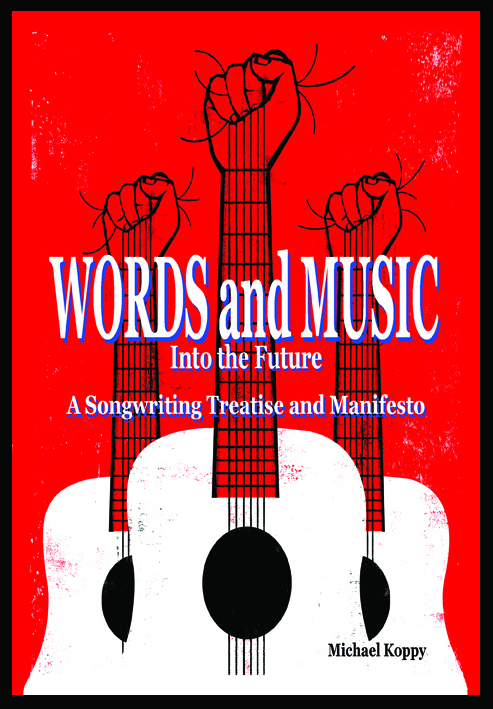
Now we ALL invoke arguments from authority on occasion—hell, the many positive press comments sprinkled throughout this website are most certainly a variation of that: the attempt to assert a general validity to what’s being presented because this and that reporter or critic has written this or that, about it or about other work I’ve done. And, of course, the question that must—well, should—be raised in a perceptive reader’s mind is one asking how much actual expertise and taste this or that reporter or critic truly has; what is brought to the party beyond the self-evident Patina of Institutional Authority. Meaning Always Be Skeptical, Never Innocently Defer. Just because he or she writes for the New York Times does NOT mean he or she is necessarily more discerning or contemplative than you or I. Conversely, just because someone writes for, say, the Omaha Nebraska Suburban Free Classified Ads Throw-Away does NOT mean he or she is an incompetent poseur whose opinion is worthless. One of the most knowledgeable critics I’ve ever encountered—perhaps THE most knowledgeable, in San Francisco—has never worked at a place that even remotely approaches being a Major Media Outlet. Not even close. (And the fellow’s never reviewed any of my own work, so this isn’t a matter of ‘exchanging hosannas’ here—in fact, I expect he ain’t that crazy about all that much of it, to be candid. C’est la vie.) But even when flat out wrong (and his foible is the obstinate hero worship that blinds many critics) his otherwise refreshingly bravura displays of absolute intelligence, careful study, knowledge and insight just can not be dismissed. They’re consistently of the highest distinction. Yet they’re decidedly NOT in the pages, or at the microphone, of some industrial/institutional steamroller.
(Aside: the one resource or advantage that any experienced reporter or critic has, of course and however—usually the only such which really can’t be contested, and the lessons gleaned from which I’m personally always curious to learn—is experience. He or she, because of the assigned role—the job being paid for; ‘the daily grind’—has most likely simply been exposed to far more work than you or I. And that is, most certainly, one of many valuable reserves from which to draw upon when attempting to arrive at a critical assessment. Yet I’ll stress that there are legions of charlatans and pretenders out there who also have lots of experience.)
So anyway, there will always be a whole lot of Public Authorities and Canonized Experts who are practiced at their pitches, certainly, and widely endorsed and grandly rewarded—but ultimately, beyond the transient and superficial, unworthy of actual deference or societal investment. Ah, yes, like the late Milton Friedman.
Always Be Skeptical.
Below is that short chapter from Words and Music Into the Future: A Songwriting Treatise and Manifesto.
Chapter Thirteen
See You at the Grammys!—A Note on Industrial Smarm Festivals
These things are fiascos. It’s all just dimwits taking themselves much too seriously. — John Lydon
This chapter is directed as much, probably even more, to fellow practitioners as it is to general readers, because it’s people who work in entertainment who are really the biggest advocates and suckers for the repulsively low-rent buffoonery of awards and awards spectacles.
 While I’ve never read anything divulging Woody Allen’s reasons for not participating in the Oscars, I suspect his thinking on such events may parallel mine. I know when I’ve done good work; I know when I’ve done lesser or even really bad work. And come on, admit it, you do (or should) as well. It’s always nice to get praise for one’s efforts—maybe even a bit necessary to some social extent. But I sure’s hell don’t need—nor even want—confirmation of any of it in the form of a tawdry award, or lack thereof, from purported peers, or via public vote. Yes, such things can be viewed as ‘all part of the game’—ways to help sell more merchandise—but is the game, really, simply to move product? If it is, then deck yourself out in a ‘meat dress’, wear modified motorcycle helmets and claim you’re robots from outer space, have someone else (someone more technically capable) write and sing and play the instruments for you, put on diva airs and the most revealing attire you can find; and have at it.
While I’ve never read anything divulging Woody Allen’s reasons for not participating in the Oscars, I suspect his thinking on such events may parallel mine. I know when I’ve done good work; I know when I’ve done lesser or even really bad work. And come on, admit it, you do (or should) as well. It’s always nice to get praise for one’s efforts—maybe even a bit necessary to some social extent. But I sure’s hell don’t need—nor even want—confirmation of any of it in the form of a tawdry award, or lack thereof, from purported peers, or via public vote. Yes, such things can be viewed as ‘all part of the game’—ways to help sell more merchandise—but is the game, really, simply to move product? If it is, then deck yourself out in a ‘meat dress’, wear modified motorcycle helmets and claim you’re robots from outer space, have someone else (someone more technically capable) write and sing and play the instruments for you, put on diva airs and the most revealing attire you can find; and have at it.
Though all such affectations and conceits are obviously peripheral to the actual acts of writing, composing, and performing—and so have no direct effect on the quality of the work (and can perhaps therefore be defended as ‘harmless fun’)—involvement in such industrial smarminess in fact rubs off; one becomes what one has beheld. One perforce buys into prevailing enthusiasms and celebrity, competes with it—and slowly becomes champion of, and commodity in, the basest of swap meets.
Some years ago, I wrote to a major pop music critic, chastising him for a particularly myopic article. His indignant response closed with what he undoubtedly thought was the perfect put-down, the ultimate kiss-off: “See you at the Grammys!” he scoffed. When I read the line, alone in my office, I burst into an audible laugh. But I honestly felt a little sad for the poor guy as well. The Grammys clearly meant something conclusive to him; having one presumably the ultimate sine qua non of creative substantiation and legitimacy, and not being part of, or beholden to, that scene at all a defining damnation. Without the Grammys, however would we know what’s good, what’s ‘successful’, what’s worthwhile?!?
Personally, I’ve never even watched more than a short stretch of a Grammys telecast—or a Tonys, Oscars, Emmys, Golden Globes, People’s Whatevers, MTV Whichevers, Kennedy or AFI Whoevers—and would never participate in person in such an embarrassingly shallow and ostentatiously oleaginous industrial circle-jerk.18
Look, the entertainment industry has pretty much the same percentage of folks in it who are plain hacks as does any other line of work—meaning the vast majority generally do what’s reasonably expected, with not many readily capable of much beyond that. And while I’m an admittedly demanding critic, very few of my so-called peers ever actually do something for which I really have honest unqualified admiration. It does occur, most certainly, and when encountered I’m loudly effusive with recognition and praise, believe me. But it’s rare. And so to even accept the vast majority of hacks as peers is to effectively denigrate my own efforts. There are opinions I very respectfully consider—but placing value on what the mass of the industry thinks is simply an abrogation of responsibility, a cry of desperate high-schoolish insecurity.
But let’s go a little further. For an award to be welcomed as authoritative confirmation that this year one has done masterful work equally requires implicitly accepting that not being handed an award next time around means one’s work wasn’t so good that year—when in fact the actual creative accomplishment may be far more significant. Again, you should know when you’ve done the best you can, when you may have found, through diligence and application (and occasionally actual inspiration), an innovative idea or presentation; and when you’ve successfully or unsuccessfully completed the work within all the availabilities and limitations present. Doesn’t a patronizing pat on the head and a pot metal paperweight actually somewhat cheapen things?

I strongly expect that in a hundred years or so, our current societal fascination with asinine awards and awards show spectacles will be seen as a laughable proof of our present vapidity and hubris. Awards and awards participation are not worth nothing; they’re worth less than nothing. This goes for those considered more high-brow as well: Pulitzers, MacArthurs, OBEs, Knighthoods, Nobels—does anyone honestly think a war criminal like Henry Kissinger or the unctuous and deplorable Mother Teresa deserved Peace Prizes, Nobel or other? Or that Barack Obama properly merited the same award—just a few months after becoming president, having at that point actually achieved virtually nothing of international consequence? Laughably, in fact, the Nobel nominations closed only eleven days after he took office. (In Obama’s case, obviously, his greatest accomplishment at the time, to the Nobel folks, was in merely not being his mentally-challenged predecessor, George W. Bush. While that’s an entirely laudable quality—and he is recognizably intellectually brilliant and apparently an admirable human being—you and I ain’t Bush either, and we didn’t even make the short list. We might also note that, aside from any personal qualities he may or may not possess, by the time he was handed the award, Obama had already launched more drone strikes than Bush had during his entire eight years as president, and by the end of his two terms had been at war in seven countries compared to Bush’s four.)19
Do not take the fulsome flummery of awards and industry accolades as anything other than low rent celebrity schmooze, devoid of merit. I repeat, awards are not worth nothing; they’re worth less than nothing. No one should care how many Grammys or other statues some act has stockpiled—while not definitively exclusionary to having created good work, it’s on balance possibly more indictment than accomplishment; and in any event it?s certainly a meaningless distraction from evaluating any supposed intrinsic merit in the work itself.
In general, all the calculation, posturing, and preening done jockeying for whatever award is coming—not to mention the TONS of money burned to promote jealously covetous egos in the bigger extravaganzas—exposes the entire repulsive mania. In my own experience, I’ve learned from dealing with various Award Winners on multiple occasions that doing so may require more care and studious circumspection—not only to challenge ‘rest on one’s laurels’ complacency or high-handedness (inadvertent or deliberate), but to try to ascertain if there is, or ever was, much real talent, or responsible professionalism, there in the first place.
Enough said; moving on....
|
18I should probably explain that this chapter isn’t prompted by a cheap case of sour grapes. Many years ago, relatively naïve and still new to the Entertainment Industry in The Big City, I was handed an award myself, for “Best Show”—or maybe “Best Overall Production”, I can’t recall—but it was spoken of as ‘the biggie’ at some theater critics’ affair in San Francisco. (This despite that I was the only producer and director in Northern California who as a matter of policy never gave out even one free press pass—every single critic attending one of my shows was treated professionally, of course, but he or she came in holding a full price, paid-for ticket. The principled reasons for why and how I successfully engineered that policy perhaps makes for an additional chapter in the eventual second edition of this book.) Someone phoned to report my show had been selected, so I went to the event—held in a packed 1,400 seat theater—said a few bland words, and left shortly after. Really, it was pretty much a waste of time—and the award itself tossed into a dumpster on the walk back home. I mean Christ, who needs that stuffy pretense? (While inserting this footnote, I suddenly flash with a laugh that the story recounted here is a bit reminiscent of the ‘Yardbirds scene’ in Michelangelo Antonioni’s film, Blow-Up. No?) But again, seriously, it all really is just low class nonsense—who needs it?
In closing and incidentally, a well-written, illuminating and even entertaining academic study of awards and public recognitions is The Economy of Prestige: Prizes, Awards, and the Circulation of Cultural Value by James F. English. Highly recommended. And a self-serving sales pitch: if you’re open to considering more heresies, rants and blasphemies like mine above, click HERE, and then scroll about half-way to the bottom, to order a copy of Words and Music Into the Future: A Songwriting Treatise and Manifesto. I’ll spend the money wisely. Well, some of it. Maybe.)
July, 2024: Celebrating ‘The American Spirit’ 
July 4th is American Independence Day—and I kinda guess that even if one doesn’t live in the USA, the country’s sledgehammer dominance of entertainment media around the globe leads to many who’ve never been here and Absolutely Just Do Not Care ALSO knowing that. (Yes? No? Advise please.) But how many of us myopic, self-absorbed Americans know that July 1 is Canada Day (previously, and in my own memory, known as Dominion Day), January 26 is Australia Day, February 6 is New Zealand’s national holiday (Waitangi Day, marking the signing of the Treaty of Waitangi between the British colonial government and 45 Maori chiefs in 1840), April 27 is Freedom Day in South Africa, the anniversary of the first post-apartheid national election—or about any other national day anywhere else? And oh yeah, Predictably Myopic American Me definitely hadda look up those last three—waddaya ’spect! (Laughing sheepishly here—but plowing onward undaunted.) Additional quick clicks reveal there ain’t no agreed-to national day in the UK. But do most o’y’all in ‘Tea-and-Crumpets Land’ really, sincerely, honestly celebrate the current king’s or queen’s so-called Official Birthday—which ain’t necessarily even his or her real birthday[!]—as your kinda ‘default national holiday’?!? (C’mon—really? Christ, get a republic, would ya? Seriously, you’re embarrassing yourselves....) Anyway, okay, July 4th. That’s when we here in the, uh, “Land Of The Free© Pat Pend and The Home Of The Brave™ ® ” celebrate—well, we’re supposed to, presumed to, indoctrinated to celebrate—alla them thar ‘uniquely American aspirations an’ values’! But finally—before we start in earnest—listen up, all ya danged furriners! (The following thunderously bellowed with painfully obnoxious beer-bellied bravado): U - S - A! U - S - A! U - S - A! U - S - A!....And now, ahem, sure, I’ll take a swing at it—and from here on out being serious, too. Because, as a patriotic American, I passionately believe in FREEDOM. FREEDOM for women to have control of their own choices and of their own bodies. FREEDOM for everyone to vote easily, without bureaucratic obstacles. FREEDOM to organize a union expeditiously, without the table precipitously tilted against working people. FREEDOM of government to act in the best interests of all citizens, and especially of the disadvantaged; not constrained to being run ‘like a business’—because government is not, and has never been intended to be, ‘a business’. FREEDOM to love and marry whoever each of us wants. FREEDOM from fraudulent rackets and cults—religions—being exempt from paying taxes, and so effectively forcing everyone to subsidize them. FREEDOM to read whatever anyone wants to read; and freedom for libraries to professionally provide materials without censorship and political manipulation. FREEDOM to conduct daily life and errands efficiently, conveniently and safely by bicycle, walking, bus, subway, skateboard, streetcar or wheelchair—freedom from having to drive and maintain an automobile. FREEDOM of scientists to work for the advancement and betterment of humankind without interference from greedy corporations and religious nut jobs. 
FREEDOM to send children to school without fear they’ll be turned into ground meat by bullets from a fucking military assault rifle. FREEDOM to earn a living wage, at a job in a safe work place. FREEDOM from corrupt schemes and scams that let corporations and the rich evade paying their fair share. FREEDOM for oppressed people and refugees from war-torn lands to come to America to build a better life. FREEDOM for children to begin their lives at the same starting place and with the same chances for success as every other child—so inheritance taxes that are extremely high. FREEDOM for animals to live without the pain and torture inflicted by factory farms, ‘puppy mills’ and general industrial-capitalist horrific cruelty. FREEDOM for our kids and grand kids and great-grand kids to live on a livable planet, with breathable air, free from toxic chemicals in their food, with global warming in check. FREEDOM from predatory monopoly capitalists destroying small businesses. FREEDOM to build a life that’s better and more financially secure than the lives our parents had. ’Nuff said—because the fight for freedom is never-ending, and always required. Onward!
June, 2024: John Clarke and Bryan Dawe 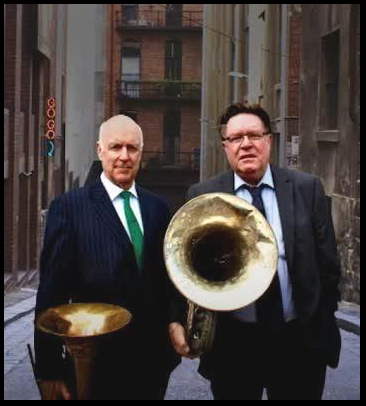
If you’re unfamiliar with the work of the late Australian satirist John Clarke—in latter years almost always paired with his comic foil, Bryan Dawe—I expect (well, hope) you’ll feel rewarded by the introduction to it here. And even if you already know his work—and anyone in Australia or New Zealand reading this most surely does, though not so many of us elsewhere—one hopes you’ll still enjoy re-visiting some of the best of his wonderfully incisive satiric writing, and his and Dawe’s masterful performances of it. If you’re an American, you may recall Andy Rooney’s show-closing segments on the weekly news magazine show, 60 Minutes, which were aired on that program from 1978 to 2011. Rooney played the character of a kinda befuddled, sometimes-annoyed, sometimes-incredulous curmudgeon—it seemed rather evident he pretty much played a less savvy edition of his actual self—finding transient or ephemeral aspects of current life and events he could cavil and grumble about in exasperated detail. It was what television folks (at least in the US) often call a ‘kicker’ or ‘kicker segment’—an amusing diversion, a bit of light dessert, at the end of otherwise generally serious reportage. John Clarke and Bryan Dawe performed a similar mission, from 1987 to 2017, the first two years on radio, followed by the Australian TV news magazine shows A Current Affair on Saturdays, relocating later to The 7:30 Report every Thursday evening. I’m sure there are many who tuned in to the programs solely to enjoy their latest satirical cut-to-the-heart-of-the-matter distillation of world events. 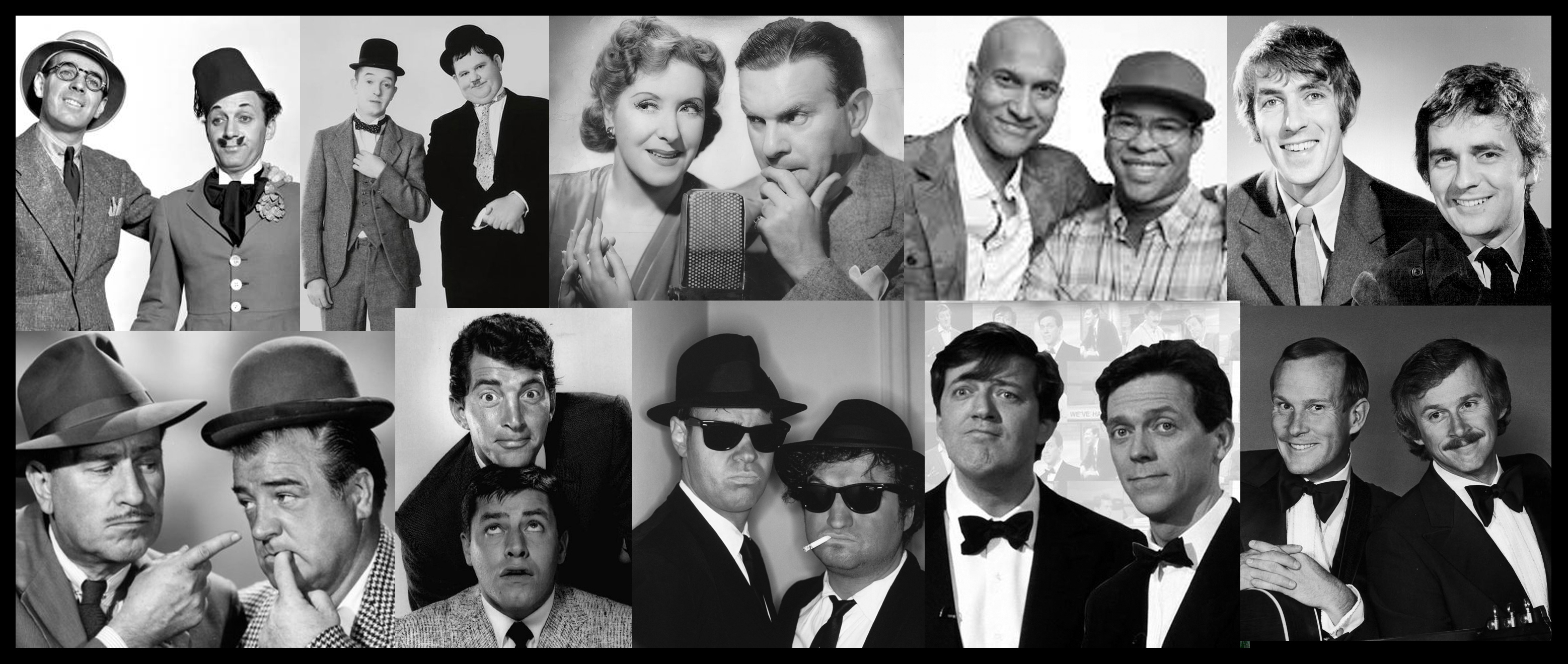
But before we continue, I want to step back a moment to offer two considerations. First, how rare it is to find a comedy duo (in the UK called a double act) that truly clicks. When it happens—from American vaudeville’s Gallagher and Shean (“Absolutely, Mr Gallagher?” “Positively, Mr Shean!”) through Laurel and Hardy, Abbott and Costello, George Burns and Gracie Allen, Dean Martin and Jerry Lewis, (perhaps to latterly including The Smothers Brothers, Dan Aykroyd and John Belushi, and maybe Keegan-Michael Key and Jordan Peele), to the UK’s Peter Cook and Dudley Moore or Stephen Fry and Hugh Laurie—one has serendipitously encountered an ‘entertainment marriage’ that seamlessly works. (And now a quick digression—yes, from a digression—for a couple of ‘critiques’, but leading to a fun anecdote. My own gut reaction to John Belushi’s work was decidedly mixed, as his ‘go-to shtick’ was usually to just go berserk, and if over-used [something I think he did] it’s rather a comedic abnegation of responsibility—a cheap way out of a scene, a crutch, an admittance that elegance eludes. And indignantly object if you wish, but though with Dean Martin he was certainly well-paired, I found Commandeur de la Légion d’Honneur Francaise Jerry Lewis—and his work—just plain insufferable. Clips one finds of his performances with Martin, his feature films following their break-up, or segments from his utterly smarmy [though one must presume—or hope—largely sincerely presented, no?] annual muscular dystrophy telethons are, to me, routinely cringe-worthy. [But here’s that promised pay-off: I lived with a brilliant, beautiful French girl for a couple of years. One day, for no apparent reason, she walked into the room in which I was quietly working, and announced—no introduction, completely unprompted and out of the blue, but like a trial lawyer presenting a resounding closing argument—“Listen! In France we know Americans don’t like Jerry Lewis! But HE...IS...A...GENIUS!!” She then turned and stomped out, having thunderously resolved the matter. You can imagine my immediate interior chagrin: “What the hell brought that on?!?” Laughing good-naturedly now, of course—as I quietly did back then as well. Ah, this beguiling world—et les Français toujours surprenants.] Yet it’s not that I, one proudly dues-fully-paid-up American here, deny Lewis’ innate talent and practiced veneer—rather that I just think the fuckin’ guy needed a goddamn EDITOR! Or, yeah—and though he was a director himself—he needed a real and strong DIRECTOR. Someone—ANYONE—to reign him in, discipline him, impose the mindful moderation he thoroughly lacked. But isn’t that so often the problem with actors, especially those who’ve built and/or been managed into successful careers? [Lookin’ at you there as well, Al Pacino.....] Self-Awareness and Self-Restraint are the Great Unspoken Complements to Talent in forging actually resonant career longevities, no?) And the second consideration I’ll advance is that I think it imperative we fully appreciate how absolutely difficult it is to create, every week without respite, something that’s timely, worthy of rational attention—and also consistently wins honest laughter. Before film, radio and television, an effective vaudeville act—it being of just a few minutes duration—might be developed and perfected over YEARS of attention, experimentation and practice; the finished piece with only slight evolving modification repeated over and over in town after town. (The advent of filmed, and later electronic, mass communications could—and did, to a few unsuspecting professional innocents back when—more or less give a life-time’s career of work away in one extended live broadcast or filmed take. Oh, sure, the act might still tour productively, but the punchlines and conceits were no longer surprises.) John Clarke’s weekly efforts were naturally as up-and-down as might be expected—and the perfect button for a scene wasn’t always obtained—but (and here’s the point) the ‘up-and-down’ rarely if ever descended to anything below solidly worthy. That may sound like a left-handed compliment—a ‘damning with faint praise’ kinda thing—yet it’s anything but. I defy anyone to make a mass audience laugh out loud with entirely new material(!)—and that material tightly tied to ever-changing world events(!)—created like clockwork, week after week(!), as often and successfully as did John Clarke. Wow. But briefly returning to matter of casting (for that’s effectively what it is), in my opinion John Clarke and Bryan Dawe were a comedy duo on that highest level. Full stop. Dawe always played the interviewer, Clarke every interviewee; their performances always perfectly meshed, like two master jazz improvisers. The remarkable conceit they developed was that Clarke never wore special costuming, used props, or (except on very rare and considered occasions) affected an accent in his impersonations. This was no matter if in responding to Dawe’s questions he was playing a well-known celebrity, industrial titan, academic expert, random citizen, American President or any of Australia’s Prime Ministers—and be the person he portrayed male or female. He might even appear, clothed exactly same, on a split screen identified as two or three different people, and engage in debating each other. “We started on radio, and you don’t need to dress up there,” said Dawe. “When we got on TV it never occurred to us to do otherwise.” They’d almost inadvertently created a unique format which truly nailed the definition of ‘theatrical conceit’ in a literal way. And it always worked, because it was the writing—the writing and the pitch-perfect performances of the writing—that sold the piece. The soul of great wit is language, and precision in its choice and employment. Yes, the words on paper—and subsequent but subsidiary to that, the presentation of those words. Yet without objective—without significance—‘wit’ is often but time-wasting self-indulgence, no? John Clarke as writer, and Clarke and Dawe as performers, rarely self-indulged. 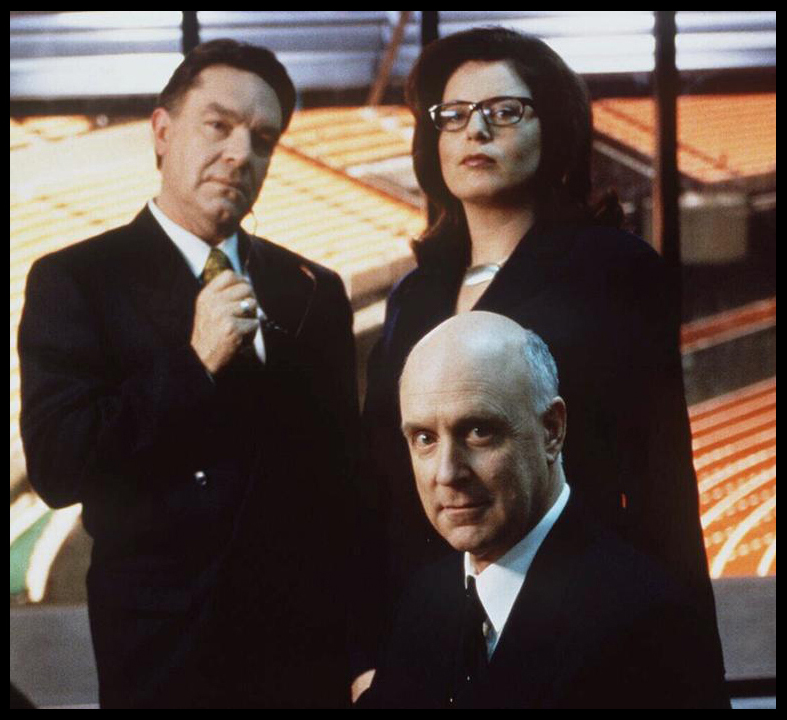
Quick question, following on the above. How often, if ever, do you reading this use any of the following words or terms: ‘recrudescence’, ‘ecumenic’, ‘res ipsa loquitur’, ‘automaticity’, ‘secondment’, ‘resile’, ‘psephological’, ‘morganatic’—not to mention referring to the Hanseatic League (the height of prominence of which was during the 14th century), Provisional President of Russia Alexander Kerensky (overthrown by Vladimir Lenin’s Bolsheviks in 1917), or metamathematician and logician Kurt Gödel? Each one of them (and surely other words and references similarly recondite in segments I’ve not seen) came out of Clarke’s characterizations, en passant, at one time or another. Yet, not knowing the word or reference employed did nothing to flummox following the narrative. Unlike when someone affects esoteric language as a weapon to impress, embarrass or intimidate (think the late William F. Buckley, perhaps) this wasn’t impertinent grandiloquence. The unusual word or phrase fit the moment perfectly, never obtruded, gave depth and quirky resonance to the person being portrayed—and treated us watching as intelligent people, in on the joke. It’s such an affirming and delightfully entertaining gambit when it works, and it always did in these mock interviews. The playfulness was at once both infectious and intoxicating. Clarke and occasional collaborator Ross Stevenson created another unique and wholly winning satiric effort with The Games, a mockumentary television series satirizing the Sydney Organizing Committee for the 2000 Olympic Games—Clarke playing the constantly juggling head of the Olympics effort, Dawe the earnest but dim financial chief, and the perfectly-cast Gina Riley the press and marketing manager. After I mentioned John Clarke’s and Bryan Dawe’s work in my song, “All in the Timing”, Clarke and I exchanged a few emails and he mailed me a copy of his most recent book. From all reports and my very limited personal experience he evinced being an unaffected, gracious and charming fellow. He died in 2017, while hiking in Australia’s Grampians National Park; a great loss to the cause of enlightened satire. For two Clarke and Dawe segments from the early days—way back in the 1980s—click HERE and HERE. And for two from a couple of decades on, click HERE and HERE. (WARNING: These short clips are like opening a box of chocolates—yer gonna have just one or two, right? And then ya end up all-too-easily having pigged out on the whole damn lot! Or in this case, to have wandered the internet for an hour, clip-to-clip-to-clip-to-clip.) The brilliant The Games is completely unavailable outside of Australia. But for a sample, here’s You-Tubey excerpts—from an episode in which one of the several stories is the discovery that their Olympic Games 100-meter track is, er, somewhat, well, ‘lacking in meters’. Click HERE and then HERE for that. Lorin Clarke, a delightful writer on her own and currently shooting a documentary about her father, emails to share that he sometimes said “My biggest strength is that I come from my audience”. But while that’s certainly part of it, was it really primary in creating the positive relationship, or was a greater strength that he simply had sincere respect for audiences—for people—generally? ‘Coming from one’s audience’ is more a starting place, a superficial (albeit valuable, obviously) antecedent, I’d maintain—a sharing of cultural references, slang terms, quotidian experiences, encompassed social expectations, etc. It greases the attempt at resonant communication, absolutely, but certainly doesn’t deliver it. Ultimate success, I’ve always felt, derives from treating audiences as intelligent people—trusting that they (we) ‘get it’. John Clarke’s efforts surely substantiate his similarly-inclined thinking. It’s patronizing audiences—treating them (us) as less than perceptive, less than aware and less than self-aware—that produces unsatisfying, transient results. Jocelyn, the writer in Katoomba, New South Wales, reports that she and her father always gathered together—as I presumed so many in Australia did—making sure they caught at least the final few minutes of The 7:30 Report, to see what new evisceration of political pomposity John Clarke had cooked up. Roger in Melbourne, who plays guitar, harmonica and didgeridoo (all at the same time?!?) calls John Clarke “a true national treasure”, and his demise “a profound national tragedy”. He further reports than when the ABC (Australian Broadcasting Corporation) was exploring replacing Clarke and Dawe on The 7:30 Report—the kind of blunt instrument surgery unproductive TV executives will sometimes attempt in hopes of making some kind of ‘mark’—they couldn’t find a credible act willing to take the slot, because following John Clarke was an impossible task. (On another matter entirely, he brings to my attention a song—well-known down there, but new to me—called “I Am Australian” and asks my take on it. It’s a remarkable effort, and will be the subject of an upcoming essay—so thank you, sir.) Michael, former editor at Atlanta Magazine and the San Francisco Chronicle, agrees that Jerry Lewis was insufferable, yet admits he absolutely LOVED Lewis’ stuff at one time—back when he was ten years old. Which rather underscores Lewis’ impaired ‘genius’—well, as a performer, certainly. Actually, I’d say it’s this widely-shared take that further testifies to Lewis’ limited abilities as a director as well, no? (Just don’t say that to anyone from France.)
April, 2024: Re: Hollywood Hacks and Show Biz Banalities The ‘magnum opus’ on my Ashmore’s Store album a few years back is the rather sweeping (or is the right word ‘schizophrenic’?) “All in the Timing: A Hollywood Romance in Seven Chapters”. You can print out the complete chords and lyrics elsewhere on this website. Aaron, who teaches high school in New York City, wrote me the other day to say positive things about the effort—but especially about the Chapter Three section. (He’d been introduced to the song—and my stuff generally—several years ago when John McEuen played the entire 27½ minutes of “All in the Timing” on his SiriusXM radio show; I think Aaron taped it from a re-broadcast.) “It’s the greatest folk song ever!”, he joked when we spoke by phone. Well, I certainly don’t think it’s a ‘folk song’ in any possible distantly-convoluted way whatsoever. An’ it don’t matter that he wasn’t all that serious, either. ’Cause in this business, when ya git a real nice outa-left-field compliment ya learn it might be yer Ticket To The Bigtime, so ya goddamn accommodate and start schemin’. (That’s what the Chapter Three section is all about, after all, and bein’ as I’m here in LA right now—where sellin’ out cheap is The Whole Game—Ima fit in!) So I’ve therefore decided it now indeed IS—as of 2:14 this afternoon—officially, absolutely and most definitely, A Folk Song. And, er, yep, The Greatest Folk Song Ever. (Take THAT, Pete Seeger, Woody Guthrie, et al....) Anyway, he’s not the only person to ever take sly satisfaction in the evisceration of Shallow Showbiz in the third ‘chapter’ of that song. And so here it is: “ALL IN THE TIMING: A HOLLYWOOD ROMANCE IN SEVEN CHAPTERS”
Verse 1:
Verse 2:
But wink-wink and nudge-nudge,
Verse 3:
The repugnant remakes an’
The spin-offs and knock-offs an’
Verse 4:
Of Titanic magnitude.
Release 1: In that daily deluge of delirious dayglow self-delusions:
Verse 5:
An’ canned-spam celebrities,
Ponzi schemes all imploding,
Verse 6:
So they a Bande á Part
Release 2:
Summation Oh, and to hear just this section, Chapter Three, of “All in the Timing” as recorded, click: Jed in Galveston writes that without putting in all the footnotes that the song has—yes, to those unfamiliar with the Ashmore’s Store album, this already sprawling behemoth also has 200 footnotes, which makes the liner notes an actual 120-page book(!)—“the depth gets a bit flattened, under-represented”. Really? Okay, well maybe so. (But let’s get serious—a song that relies on FOOTNOTES to achieve greater ‘depth’? What the hell wuz I a-thinkin’ in the first place?!?) If ya wanna hear, read, get lost in the whole shebang then just click HERE and buy the danged album.
March, 2024: Local Hero #2 Years ago, in casual conversation, I’d occasionally ask a friend to name three persons in the world who he or she admired enough to consider naming a child after. So—in keeping with the topic here—who might be classified as his or her ‘heroes’. After one friend named (I think it was) Pope Leo I, from back in the fifth century, I thereafter limited the choice to living persons only—because, of course, that’s part of the challenge. What well-known persons do you have faith will continue to lead exemplary, truly admirable public lives—to the extent you’d seriously consider naming progeny for? (I mean no one would want to risk burdening offspring with having been christened in honor of a public persona who latterly fell mightily. Anyone want to have named a child after Bill Cosby?) There was obviously no ‘winner’ or ‘loser’ in the conversations following—it wasn’t a competition, just offhand ‘general thinking’ that allowed for considerations about important matters and objectives in life. After one friend reasonably responded that he’d only honor his parents and grandparents, I changed the question again, to eliminate relatives and persons someone may know personally. A good friend in Paris, IMAX film director Dominique, replied that he’d only consider scientists for such honoring—as to him the rigor and dispassion required of scientific investigation was, in essence, emblematic of moral identity. Agree or dismiss his reasoning, it was his personal considered thinking on the matter—and, again, this was all that mattered. 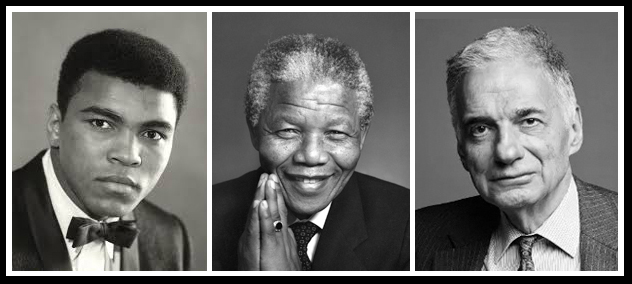
Names that came up often included two which appeared on my own List Of Three as well: Nelson Mandela and Muhammad Ali. Of course, they’ve both since departed, and so nowadays would be ‘out of the running’. Not sure who I’d replace them with today. (My own third choice at the time was Ralph Nader, though I always joked that inflicting the name “Ralph Nelson Muhammad Koppy”—or some such permutated combination—not on a son but on a daughter[!] might legitimately be labeled child abuse....) It’s a fun query, and can start interesting conversations. Perhaps try it yourself sometime. Anyway, in a previous essay (see January ’24 entry, below) I offered Simon Rodia as one of my two ‘Local Heroes’—Los Angelenos whose dedicated determination and achievement I particularly admired. My designation of ‘hero’ here obviously being much, well—looser—than the above explorations dominated by archetype public figures, albeit a serious consideration nonetheless. And so now, my choice of Local Hero Number 2. Larry Walters was a truck driver—like Rodia, a largely unconnected working class guy, yet with his own grand but uncynical ambition. Also like Rodia, his background and his later life, while of interest to the curious, should be of secondary moment. We each and all have antecedents—triumphs and frustrations large and small, families and cultural heritages, dreams and routines, those who love or simply endure us. But we don’t each and all create something so unique and monumental that it demands deference, appreciation, actual hurrahs. 
One day in 1982, in the back yard of the house he shared with his girlfriend in San Pedro, adjacent to LA, Walters tied 42 helium-filled weather balloons to a lawn chair he bought at Sears for $109 (naming the jerry-built craft Inspiration I)—and ascended into a kind of vernacular immortality. He carried a pellet gun to shoot out a balloon or two if he needed to descend and 13 plastic jugs of water he could drop, one-by-one, if he wanted to go higher; he wore a parachute; and he packed some sandwiches and soft drinks, a couple of beers, a CB radio and a camera. The plan was to drift with the wind out to the Mojave Desert, where he’d end the adventure with a safe soft landing. Walters calmly sat down in Inspiration I (and don’t you love the audacious grandiosity of that name?) without seatbelts, quickly shot up to somewhere around 16,000 feet (4,900 meters)—where he was spotted by two stunned commercial airline pilots, bringing their TWA and Delta flights into Los Angeles International Airport. (Imagine for a moment a pilot’s friendly announcement to passengers: first affect a deep intercom voice—perhaps cupping your hands over your mouth. “Ladies and gentlemen, as we make our final descent into Los Angeles, those of you on the right side of the plane can see the world famous Hollywood Sign. And those of you on the left can see—uh, um—a guy...with a goofy smile...waving at us...from a lawn chair....”) For fuller recountings of Walters’ preposterous and incredible escapade, click HERE or HERE. 
The stunt (if that’s what one wishes to call it, and Walters would surely have thoughtfully rejected the dismissive connotations in the characterization, though amiably accepted the novelty dimensions) led to many others following his pioneering effort in subsequent years. Some went higher, some stayed aloft much longer, some traveled far greater distances—and some were killed or vanished, never to be seen again. But “Lawnchair Larry” was the first. I remember a long time ago hearing of his exhilarating, dangerous, jaw-droppingly wild and just plain weird odyssey into the troposphere on the news shortly after it transpired. And I was really quite envious—he had done what every single school kid in the world who ever held a helium-filled balloon has imagined for at least a moment. He took off. Without press releases or ‘corporate sponsorship’—simply true to his vision and the determination to achieve that vision, he lifted from his backyard and into the sky. Amazing, really—and even more so if one considers all the cynical calculations and venal self-promotion that would accompany a similarly revolutionary endeavor in today’s self-entitled world. Like Simon Rodia and his Towers, Larry Walters and his flight was so far removed from societal expectations and proscriptions that one can do nothing other than be overcome with both awe and laughter—the perfect crackpot escapade! And, of course, the cops were waiting for him back on Earth, though none had any idea of what charge to pin on him. 
And oh sure, the guy had to be ‘strange’. Fine! So, most definitely, was Rodia. And I’ll take ‘strange’, ‘unusual’, ‘eccentric’—even ‘nuts’—if you give me authentic. Well, authentic and self-aware—both of which Walters certainly was. For a little video experience of the fellow himself—a delightful, amusing and head-scratching appearance he made on Late Night With David Letterman—click HERE. (I’m going to add here, to pound the point from fundament to firmament—and sea to shining damn sea—that ‘strange’ is certainly no moral failure when maintained within essential benignity and respect for others. Each of us is ‘strange’—to someone other somewhere, sometime, and in some circumstance. Clear? We done here?....) Today in Washington DC, the Smithsonian’s National Air and Space Museums display Charles Lindbergh’s Spirit of St Louis, the Wright Brothers’ original 1903 Kitty Hawk Flyer, the Space Shuttle Discovery—and yes, Larry Walter’s Inspiration I, seen on the left. It’s efforts of folks like Rodia, Walters and those few others salted here and there around this amazing world—the works and crazy accomplishments of innocent visionaries, really; of unanointed regular people with singular personal dedication to their unique vocations—that I particularly and truly admire. Anyone can talk—and maybe talk a good game. And every tech-bro bozo and bozette hones his or her cynically calculated Big Score Scheme. These guys worked on a higher, purer plain. They were different. And they did better. “A man can’t just sit around. It was something I had to do.” – Larry Walters
“I had it in my mind to do something big, and I did it.” – Simon Rodia Well said, gentlemen. And well done.
January, 2024: Local Heroes—this month: Hero #1 “So name a hero of YOURS, Michael—and don’t say you don’t have any.” I’m no longer ten years old, so have learned that all heroes have clay feet—right, this? But okay, sure—in fact I’ll propose two personal ‘heroes’, right here in otherwise generally barren LA. First, though, what say we go for a leisurely stroll before returning to the answer.... For the past several years I’ve lived in Los Angeles, after many, many years in San Francisco. The differences between the two are significant, as is of course commonly recognized: they’re really quite divergent worlds. One can assert all kinds of generalized disparagements of one and exaltations of the other, pointed to befit one’s preferences and prejudices. But a tangential insight that avoids judgment, yet resonates as a simple stunning fact, is something I read many years ago in an article discussing that perennial notion of splitting California into two (or sometimes three, four, five or more) separate states. The writer noted that if there were a Northern California state and a Southern California state—but divided equally, keeping exactly half the population in the north and half in the south—Hollywood would be wholly in Northern California. (Meaning, of course, a bit farther north of Hollywood, the ‘quintessentially SoCal’ San Fernando Valley would be as well.) Wowie. There’re simply ga-ZILLIONS of people down this way. How SF and LA tend to generally view each other is an interesting curiosity. San Franciscans will loudly and proudly dismiss LA—which is easy to do, of course, given that flamboyant vacuousness really is just a fact-of-life down this way. But counter-contempt, so to speak, rarely evinces itself. LA doesn’t really tend to even take San Francisco all that seriously, viewing its legitimate ‘primary civic competitor’ to be New York City. When I comment on my own experienced differences—as dispassionately as I can—I offer that San Francisco has a true ‘bohemian-intellectual tradition and history’—more akin to what one associates with New York or Boston, or one of several European cities. But that aside from a few scattered outliers (think Charles Bukowski, perhaps—and what else?!?) LA is very much An Industrial Company Town—that industry being Entertainment in all its avaricious, tawdry fabrications and permutations. Cultural awakenings and trends don’t start here—they start in San Francisco; or London, New York, Seattle, Atlanta, or ANYWHERE else. But they become polished, institutionalized, commodified and SOLD here. This is where the well-established, well-oiled (and truly ‘sophisticated’ in the very strictest sense of that word) machinery turns them into steam-rolling money-making lowest-possible common denominator juggernauts—only to be later replaced, when every buck has been squeezed out, by the emerging Next Big Thing that can be monetized. People arrive in LA typically—and admittedly, again, not without exception—to sell out. It’s all about ‘making it’—and making bucks—becoming that literal empty dead end: A Rich Celebrity. (Note that when the Hemingways, Faulkners, Dorothy Parkers and Scott Fitzgeralds are found in Hollywood, it’s largely because they’ve been bought. There’s that classic telegram sent by writer Herman J. Mankiewicz, a few months after arriving, urging pal Ben Hecht to hurry out as well, “Millions are to be grabbed out here, and your only competition is idiots! Don’t let this get around!”) Even if one finds the superficial and the fatuous repugnant, it still requires self-awareness and self-restraint to not get swept into it—and away by it—when living here; surrounded, inundated, pummeled by the thinnest inducements and basest accolades, all presented as wise and worthy. 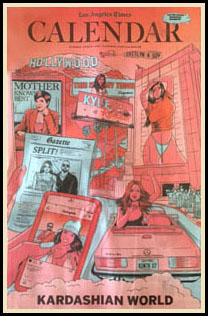
Interestingly however, one of the few domains in which LA beats the hell out of San Francisco is in the respective local newspaper of record. Even in its diminishing ‘print-is-dying-a-slow-death’ embodiment, The Los Angeles Times offers unquestionably superior reportage to that normally found in The San Francisco Chronicle—well, EXCEPTING, that is (and underscoring the cultural/intellectual desiccation down this way) in its arts/entertainment coverage, which is usually better-written than, but otherwise indistinguishable from, the smarmiest studio press agent hype. Because, again, this is a Company Town. (So you get things like an entire Sunday entertainment section devoted to Deferentially Considered, Comprehensive and Incisive Cultural Analyses on Important Matters like the thick-witted example pictured on the left here. And no, no one at the LA Times seems to’ve been embarrassed....) For quite understandable economic reasons, about which I’ve written elsewhere, the entertainment industry tends to bring out the worst in those who work within it—the most mercenary instincts, deepest insecurities, greatest compromises (read ‘rationales and excuses’), profoundest jealousies and crassest impositions. Oh there are many, many good and uncorruptible people down here, don’t get me wrong. But there’s also no question the quotidian obstacle course is bristling with bread-and-butter anxieties and venal traps. (Screenwriter William Goldman: “I don’t think most people realize—and I guess there’s no reason they should—the amount of demeaning garbage you have to take if you want a career in the arts.”) A business lunch in Hollywood is often but an exchange of practiced pitches: a trading of “Hey listen to THIS Great Idea of Mine! And then enlist in it—become an ENABLER of my can’t miss brilliancy, my oh-so-clever plan!”—immediately followed by a carbon copy spiel vomited in the opposite direction. So who, in my opinion, might plausibly qualify as legitimate creative ‘heroes’ right here, in derivative and distressed Los Angeles? No, not that lionized actor, director, pop star, writer, producer, or some such. Oh, sure, one can admire and salute this or that piece (or even collection) of industrial work by him, her or them, but it was all almost certainly engineered, obtained and executed very much within the confines of what is expected and banked upon—without doubt entered into with eyes firmly on the prize: Industrial Success. (Here’s another Goldman observation that pertains, if even just obliquely: “Stars don’t have friends; they have business associates—and serfs.”) No, let’s look elsewhere than in the entertainment industry. As promised, I’ll champion two individuals—one this month and the other in a later essay—each associated with just one creative accomplishment, yet each of those truly singular accomplishments wildly independent, and pretty much completely devoid of mercenary calculation. However, in one final—but directly pertinent, so forgive me—discursion, let me cite a last anecdotal difference between San Francisco and Los Angeles: what there is of interest in each to show visitors. Ferrying a guest around geographically compact and culturally rich San Francisco allows an almost rat-a-tat-tat of successive interesting sights. That’s Lawrence Ferlinghetti’s City Lights Bookstore—and here’s Chinatown—yes, we’re now in the Castro District; the heart of Gay America—look, here comes a cable car—and this is Haight-Ashbury, the once ‘Peace-and-Love’ mecca—see Alcatraz out there in the Bay?—yeah, Mission Dolores here was the city’s birthplace, back in the 1700s—the bar on the corner there is the Condor Club, the first topless strip joint in America—you’re right, that’s the Golden Gate Bridge; let’s go! And etc, etc, etc—all in the space of a couple of hours. Oh sure, there’s also the found-in-every-city tastelessly tacky T-shirts-and-tchotchkes tourist ghetto—Fisherman’s Wharf being ground zero for all that in SF—but there’s so much of meaningful merit spread throughout the city that one can easily stay involved and entertained without ever resorting to such panicked banalities. In LA, however, what there is to see—what’s been put into people’s minds as popularly emblematic of Los Angeles, shall-we-say—generally just isn’t much worth engaging. Seedy Hollywood Boulevard—LA’s own tourist ghetto? This or that locked-up-tight-as-a-drum movie studio? Malibu? (Why??) The Grandiose (with its own little carnival ride to and from, but kinda light on art) Getty Center? The Hollywood sign? Tour bussing to gawk at various stars’ homes? Gimme a break. And keep in mind it can take literally hours of driving to get from one deflating ‘sight’ to the other. (If’n ya wanna go to Disneyland, by the way, I’ll point you to the freeway and toss you the car keys.) The one place—in fact the only place—to which I’m always impelled to take a visitor is far, far from the glitzy, chintzy inanities of the Company Town. And it was entirely created, over the span of 33 dedicated years, by just one person: a fellow born in the provincial small town of Serino, Italy, named Sabatino Rodia, latterly known as Simon Rodia.  Yes, as you deduce from the picture above, I take them to the Watts Towers. And Simon Rodia is/was, in my mind, a legitimate Local Hero. However—just as I assertively avoid, due to respect for the integrity of humankind as a whole, the idea of exalted ‘leaders’—I also attempt to resist the elevation of any flawed and faulted individual as a ‘hero’ (because we are, each and all, a medley of defects and perfections, the profane and the poetic, no?). It was the man’s determination, diligence, commitment and accomplishment on this exceptionally ambitious achievement that demands deferential reverence—and was, undeniably, truly Heroic.
And one must laugh loudly in contempt at the very idea of someone like him, though incontestably an artist and a brilliant one, ever being handed a grant from the National Endowment for the Arts or the MacArthur, Hewlett, Ford, Mellon, Rockefeller, et al Foundations! Those confirmations and encouragements go to well-publicized and well-connected flavor-of-the-year academic darlings—with any left-over crumbs patronizingly tossed over the wall to the roiling riff-raff—not to uneducated, unpretentious, hard-working outsider visionaries. (And now don’t get me started on the Elitist World of Timid Arts Bureaucrats en masse, or we’ll take off on another detour—a justifiably long and scathing one, with example after example of disgracefully smug bureaucratic ineptitude and outright corruption. I’ll simply note here that the most pernicious maladies in the arts aren’t, as sometimes grandstandingly averred, racism or sexism. They’re careerism, cronyism and priggish conformity....) There are many things written, and a few documentary films produced, about Simon Rodia and the Towers. But for more information, here are two well-formed articles: click HERE for a piece celebrating the 100th anniversary of when Rodia began work on his dazzling project, and HERE for a closer look at the man. For a short film, made seven decades ago, with footage of the artist himself (here called “Simon Rodilla”), click HERE. So half of the answer to the self-posed question opening this essay has been answered: within the limitations noted above of my personal reticences and caveats about the idea of ‘heroes’ generally, Simon Rodia is one of my two Local Heroes. In a coming essay I’ll discuss the other one—and that fellow’s (superficially even hilarious; yet wonderfully, intelligently inspired) accomplishment is something entirely different. Come back next month for a wild ride—and in this guy’s case, I mean that literally. But hey, when you come visit Southern California, lemme know—if we’ve the time, perhaps I’ll escort you to what’s possibly the only (well, at minimum, surely the most arresting, no?) work of great art ever created hereabouts.  Ol’ pals Jerry The Accountant and Peg way up on the Canadian border send Actual Photos To Prove they and I went to D’Land together many years back. Well yeah—ain’t denyin’ ever havin’ been there—just that ya can’t drag me back! Indeed, something that’s always even intrigued me about the operation is the perfected crowd micro-management tactics and the tried-and-true shop-worn (because they’re effective) theatrical effects used to ingratiate (or at minimum, lessen frustrations and heighten ‘enjoyment’). This place, and this outfit, have such things entirely mastered. But it’s not easy to locate a book or two explaining how things there were developed and work—without what little intelligent material presented being buried under a smarmy, treacly PR mountain of ‘Happiest Place on Earth’/‘Imagineering’/‘Magic Kingdom’ tedious puffery. The key tenet of the ‘Disney business plan’—the profound condescension that fully permeates just about everything in Disney Corporation projects—is that audiences are really, really dumb. Remove all bite, erase all insight, eschew depth, lard with tested pre-adolescent ‘cutesy’, trust the public has an average IQ of 80 or less—and smirk all the way to the bank. Tonda the theatrical literary agent in New York City—born and bred in LA, but only rarely back—is delighted to know the Watts Towers still even stand, given Los Angeles’ historical civic predilection to Simply Demolish. Uri the poet, also LA-born and bred—but still here—asserts I miss (well, am plain ignorant of) a great river of avant-garde cultural activity in Los Angeles. Yet when educating me about many such aspects and proceedings, we inevitably still end up agreeing that anything of legitimate cultural note done hereabouts almost always eventually leads to engagement with (and being sucked under by) The Industry—kinda corroborating my general thinking. So, that Rodia worked entirely off the radar further exalts—perhaps even figuratively sanctifies—his adamantine resolution.
November, 2023: Jan Vermeer, Dutch Golden Age Genre Painting, and the Exhibition in Amsterdam Earlier This Year A long time ago, Provincial Southerner Me spent a whole month in far-off Washington DC—helping friends move into and adapt their new house, walking the streets of the big city; and spending as much time as I could at the National Gallery, Phillips Collection and Smithsonian, and as many evenings as possible at the AFI theater (which was then in the rather musty basement of the Kennedy Center). They were screening a retrospective of features and shorts directed by Luis Buñuel. (If one has seen it, one always remembers his and Salvadore Dali’s 1932 surrealist short, Un Chien Andalou, no? My favorite seen during those several weeks—and all except Los Olvidados and Un Chien Andalou were new to me—was his Mexican Bus Ride.) Also completely new to me were the Phillips and the National Gallery—hell, ‘new to me’ was pretty much any empirical notion of Art Museum generally. This was in a time long before there was a metal detector and backpack inspection at every door of the National—nor even a noticeable uniformed guard posted there that I recall (though surely one had to be nearby). And since the National was and is still free admission (because it Belongs to the American People), one just walked in off the street and into...A Monumentally Serene Other World. Among the works which truly riveted me in that first direct exposure to art at this level—ones I stared at for hours, in total, over my many visits—were Pierre-Auguste Renoir’s large and enchanting Luncheon of the Boating Party and several works by Pierre Bonnard at the Phillips, and Raphael’s mesmerizing Alba Madonna at the National. But the painting which altogether transfixed me, also at the National and transcending everything else in my purview, was Jan Vermeer’s A Woman Weighing Gold, (which has since been re-titled—and we’ll get to that in a moment.) I stood there each day, mostly alone in that gallery, and lost all sense of time and place; it was a pivotal experience. (The National’s Curator of Northern Baroque Paintings, Arthur Wheelock—to whom we’ll also return in a moment—once authoritatively proclaimed, “Once you’ve seen a Vermeer, you never forget it.” And as averse as I am to blanket canonizing statements like that—ones that seem to verge on industrial celebrity hype, frankly—I’m forced to admit that in my case, and years before I heard it, his edict was exactly what transpired.) Some years later, hitch-hiking and hopping freight trains around the continent, working odd jobs, playing guitar here and there, and Learning About America and Canada, I got a job at a factory near Boston that specialized in making parts for Chevy trucks. I only stayed in the area for a few weeks—damn it can get COLD in a Boston winter, especially for a And I made sure to visit The Concert a second time before safely escaping the snowdrifts and icy winds, scampering back to my Sweet Sunny South. Back in 1995 (hadda look that up—it was a while back) my old favorite, the National Gallery in DC, had what I guess was up-to-then the largest-ever assembly of Vermeers (well, since the Huge Garage Sale! after his death in 1675?): 21 paintings (which in ‘adjusted retro-count’ is now 20 after art historians ‘de-Vermeered’ Girl With A Flute in 2022). When that show was announced I immediately called pals in the area to beg a couch, purchased airline tickets from my home, then in San Francisco, and got my butt there—spending four long afternoons in the three galleries full of paintings by Jan Vermeer. I even ran into curator Wheelock as he guided some visiting fellows through this exhibition he was so rightfully proud to have engineered, and was able squeeze forward to ask why A Woman Weighing Gold had been re-titled A Woman Holding a Balance. “Well, we studied it closer, and realized the glint we thought was gold was actually from the pan of the balance itself. And also, as there was nothing in the other pan—no counter-weight—and the balance was perfectly level, both pans had to be empty. No gold!” A wonderful moment that made me smile broadly. No matter how much careful study is done on anything in this life on this Earth, there’s always something new—sometimes even something obvious—to learn, no? Over the years, I’ve of course expanded my knowledge of and familiarity with Dutch seventeenth-century painting—even returning to the National from California in 2004 to see their major show of work by Gerard ter Borch, a contemporary of Vermeer—and I remain something of an easy mark for works by others from that milieu generally: paintings by Gabriel Metsu, Caspar Netscher, Gerrit Dou, Pieter de Hooch, Jan Steen and others. So as soon as I learned in early-2022 of the near-encyclopedic assemblage of paintings by Jan Vermeer that was to be displayed at the Rijksmuseum in Amsterdam—this time 28 works of the 34 extant(!)—I made plans to get to the Netherlands. “I Will Be There!” As the show lasted from February to early June of this year, my plan was to fly over in May, so also allowing re-visiting some more of that lovely part of the world in warming weather. But almost immediately upon availability, every ticket was gone; the exhibition had sold out entirely. And so? Well, I cancelled my junket. Maybe all for the best? The DC show in 1995 was certainly an event, and very well attended. But the Amsterdam exhibition appears to have been all that and much, much more. And I don’t know if I could take ‘much, much more’. About Vermeer, the Rijksmuseum’s General Director Taco Dibbits says, “He captures the moment, and makes it timeless.” Yes, but (and despite my obviously long and deep personal appreciation for Vermeer’s œuvre in particular) I hasten to add, so on many occasions do others from the Dutch Golden Age. The vignettes and scenes and contemplative faces they presented to us are, no question, often ‘timeless’; and they grow in relevance and resonance when given proper, adequate time and quiet in which to reflect. It’s simply (and understandably, of course) hard to obtain that luxury in the setting of a blockbuster show, no matter how carefully planned and conducted it may have been. Ah, mais c’est la vie, non? Addendum: one of the more interesting reviews I saw of the Rijksmuseum exhibition appeared in (of all places) The National Review. And while I think the writer rashly discounts Vermeer’s place in art history (and the lasting depth of Vermeer’s simple accomplishment) he does provide interesting, well, ‘counterpoint’ to all the hoopla. And the piece is noteworthy in that it’s one of the few I’ve seen recently that at all even lightly considers (speculates on) the role of Vermeer’s most important patrons, a married couple who lived nearby in their shared city of Delft. (So a veritable, if inadvertent or editorially-missed, Marxist slant in an article in The National Review—what’s next? For that article, which has more pictures of the paintings by the way, click HERE.) Addendum #2: Studio film set painter Bill in LA wonders how much of my ‘all for the best’ comment about missing the Amsterdam show is good ol’ sour grapes. And, well, probably about 90%, Bill—your wry take is spot on, I sheepishly accept. Certainly the Rijksmuseum did a perfect or near-perfect job of allocating and distributing tickets, right? Oh, the galleries would still have been well-packed, but surely at least endurable, no? Yeah, well, okay—but too late now! Curator Wheelock emails advising that I not feel dismayed about missing the Rijksmuseum show. “There was a magic to the ’95 exhibition that I just didn’t really feel in Amsterdam”, though he does affably admit to having obviously been rather heavily invested in the former.

More seriously, I find it fascinating—truly fascinating—how such determinations affect actual, literal appreciations of an artwork. It’s not changed at all—it is THE Exact Same Piece. Yet one minute it’s By Jan Vermeer; the next it’s not. And that makes it, now, a near-negligibility; immaterial (or at least of far, far less importance) in cultural history, worth a whole lot less(!), and relegated to essentially but an academic footnote. This is a topic that, when expanded, properly also includes the whole dark world of art forgeries—as well as that of other honest misattributions. For instance, mid-19th century critic Théophile Thoré-Bürger, usually credited with ‘resurrecting’ Jan Vermeer and rescuing him from obscurity (though in fact efforts had been made to that end earlier, just by less-well connected critics), originally listed over 60 paintings he attributed to Vermeer. One-by-one that list has gotten whittled way, way down. (Apropos of the above, if you’ve time, curiosity, and don’t already know the near-delightful story of Han van Meegeren’s Vermeer forgeries, click HERE. [I say “near-delightful” because van Meegeren really wasn’t even remotely a text-book ‘hero’; yet the foreground facts do read as if from a polished Hollywood film script.] A very readable book I recommend on the topic of art forgeries generally—and the constant vigilance required in the profession to be aware and wary of them—is former Metropolitan Museum of Art Director Thomas Hoving’s False Impressions: The Hunt for Big-Time Art Fakes. Borrow it from your local library; or click HERE to purchase a used copy, as I believe it’s out of print.) Finally, for a fun article on a never publicly identified but prolific forger from the early twentieth century—the so-called Spanish Forger—click HERE. And these days, no matter where I go and what I see in this wide and wonderful world, when I’m able to return to the National Gallery in Washington and visit A Woman Holding a Balance—who to me will always be weighing gold (even if now of a vaporous, nostalgic sort)—it’s truly like seeing a great old friend after far, far too long.
October, 2023: Songs on Unromanticized Working Class Life Let’s consider two songs that I think eloquently and realistically address working class concerns and aspirations—one the very well known “The River”, written and composed by Bruce Springsteen, and the other the less-well-known, but certainly not at all obscure, “The Field Behind the Plow”, written and composed by the late Stan Rogers. There are not a lot songs—serious pieces of work, I mean, as opposed to superficial albeit often accurate efforts—that speak from an inner voice of working men and working women in faithful, unromanticized observations on daily stresses, immediate proceedings and realizable plans. (Jimmy Webb’s “Wichita Lineman” is another effort that may come to mind; and though it’s undoubtedly evocative, I don’t think he does much more than somewhat lead-footedly scratch the surface. And though I very much admire aspects of Dolly Parton’s “9 to 5”, and some passing elements in John Lennon and Paul McCartney’s “A Day in the Life”, while they both do solid jobs of description, at least to me each fails to engage on a more elemental, substantive level. In the case of “9 to 5”, I expect that was by choice—it having been created as an upbeat movie title track—and in the case of “A Day in the Life”, the song is rather moodily inchoate generally. But I welcome suggestions of others that might seem similarly postured, similarly inclined, to those—and to the two I wish to specifically forward here. There’s not a surfeit of them, and I’m well aware all the songs just mentioned date from at least two decades before the current century. There must be similarly directed, and commensurately well-crafted, songs from more recent years which I’m neglecting either from oversight or plain ignorance. So chime in and amend the program, please.) So anyway, here and first off, “The Field Behind the Plow”. Read the lyrics first, I advise, and then click down below to hear them married to the musical composition. “The Field Behind the Plow”
Watch the field behind the plow turn to straight dark rows.
And it figures that the rain takes it’s own sweet time.
Poor old Kuzyk down the road
Well in an hour, maybe more, you’ll be wet clear through.
And if the harvest’s any good, the money might just cover all the loans;
For the good times come and go, but at least there’s rain. To hear Rogers perform the song, click HERE. And second, “The River”. Again, read the lyrics first, then click below to hear them in the song. “The River”
We’d go down to the river and into the river we’d dive.
Then I got Mary pregnant and man that was all she wrote.
That night we went down to the river and into the river we’d dive.
I got a job working construction for the Johnstown Company.
But I remember us riding in my brother’s car, her body tan and wet down at the reservoir.
That sends me down to the river, though I know the river is dry? And now, to hear Springsteen perform the song, click HERE. I think each of these songs is a remarkable accomplishment, reaching deep and hitting home. I really don’t know what more one could ask of either effort—songwriting like this is what it’s all about. Traditional musician Frank in rural North Florida writes to discerningly note a key difference between the two songs—both of which he also admires—is that “Plow” really does mirror the kind of thoughts, from the mundane to the profound, that tumble and weave in and out of mind in the course of the working day; while “River” is more of an overview of an entire life, in general and specific—an elegy. Songwriter Linda in Tallahassee avers that Parton’s “9 to 5” offers more—is more astute and significant—than I’ve recognized, particularly as it squarely addresses the place of professional women in our times; the pressures and frustrations encountered and wrestled with by women daily in offices everywhere. She goes on to point out that the strong pulsing beat in Parton’s recording of the song adds a musical component to the writing there, as it mirrors the driving freneticism often found in such daily grinds. To hear that song, performed by Parton, click HERE. (She also most fittingly describes “The Field Behind the Plow” as “resembling a painting”. Yes, exactly; and wonderfully put. A prosaic rural tableau, revealing so much more than surface, in the style of an Edward Hopper, no?) Pete the Canadian bassist yells a kinda ‘Right On!’ that someone down here lauds Stan Rogers’ work at all, since we in the US are So Friggin’ Culturally Myopic—and goes on to champion Rogers’ striking “Northwest Passage”. Way up there in Ice Hockey, Canada Dry and Polar Bear Land they value and take immense pride in Stan Rogers. (Okay, but other than Rogers, that’s really all ya have there—hockey, hard liquor mixers and big white bears—right?...) To hear that song, click HERE. (Incidentally, whenever I provide a link to a song that’s being discussed, I generally try to avoid live performance videos or ‘official music videos’, as what’s being primarily addressed here is, of course, the writing; the accompanying music, orchestration, arrangement, production and performance are, properly, secondary. While most definitely important to the impact and presentation of the completed song—and farther down the line, to the finished recording [and video]—such aspects are in the end usually [not always, but usually] ancillary when the obvious primary matter at hand is consideration of the depth and seriousness of the attempt to communicate. And that necessarily also goes for completely extraneous [though admittedly, frequently interesting] matters such as what the songwriter[s] were thinking, or whatever events, actual or imagined, may have driven the project in the first place. N’est-ce pas?)
August, 2023: Union picket lines everywhere in Hollywood! As I write this, the Writers Guild of America and the Screen Actors Guild are on strike; and as I won’t—have never, will never—cross a union picket line, it’s a good time to reflect on and celebrate what working people are able to accomplish when we organize and stand firm, shoulder-to-shoulder.
Every day, currently, in front of every film and TV studio out here, there are big gatherings of writers and actors, along with supporters from other entertainment industry unions, picketing and carrying signs, spirits high and solidarity unbreakable. (To learn What’s Really Going On—the reality of why strong and united labor action is particularly, crucially necessary in Hollywood right now—click HERE. Despite what you may have heard, AI is just a small and ancillary part of the story.) So let’s look at the big picture, all in context. If you’ve ever happened on a clip or writings of the late (and insufferably smug) conservative economist Milton Friedman or others from the so-called ‘Chicago school of economics’ lecturing on the purported society-wide evils of unions, you’ve been confronted with superficially smart-sounding but arrogantly-blind-to-common-and-obvious-fucking-sense thinking that effectively culminates in telling working people to stand alone, individually—against the most powerful corporations and billionaires and their limitless resources—as if that absurd ‘contest’ isn’t rigged by definition. All along the lines of “Look, always bow down before owners and stockholders, work as hard as you can, and just believe in their Far-Sighted Humanity and Brilliant Business Sense! If you do, you’ll probably get paid more. Run along now, and Trust The Almighty Profit Motive to dribble some pennies down to you and your family (and the rest of the lowlife riffraff we depend upon, cheat, throw away and essentially hold in complete contempt). Good boy! Good girl!...” You can hear that disingenuous sophist, Friedman himself (puffed up with the usual Nobel Prize, of course—and he the clown who actually gave us the ‘trickle down economics’ scam, by the way; so how’s that working out for everyone?) duplicitously arguing from the essential a priori assertion that contemporary unions are rather just vestigial manifestations of medieval guilds(!) and so therefore, in that tradition, existing only for a select privileged (and effectively corrupt) coterie of in-group and connected members—a form of lightweight de facto criminal racket self-interestedly diametrically opposed to any intention of raising the conditions of all workers. Click HERE for a dose of that specious garbage. (When he talks of “numerous studies” proving this or that anti-union verity, be aware that numerous other studies—those not funded by reactionary pretend ‘think tanks’—categorically prove the exact opposite.) These artfully fraudulent buffoons simply (and very conveniently, for the anti-worker doctrine they’re paid to spew) divide labor itself into two mutually-exclusive and competing classes: those who are unionized and those who are not. They argue that workers are fighting between themselves, willfully ignoring the patent truth, which is that the real (and fucking obvious!) economic and power dichotomy is between workers and owners, labor and management. Now in the case of antiquated narrow craft unions the argument can, at least glibly, make some facile sense. The old-style craft union did ‘set itself off’ from the mass of its industry, employing seniority systems, difficult-to-enter apprenticeship programs and similar, to wall off (but to also protect and champion) its limited membership from The Great Unwashed who it didn’t (and often didn’t want to) represent. But Friedman and his ilk resolutely refuse to distinguish between what was once the defining difference (in the United States) between organizations patterned that way, the AFL (American Federation of Labor; read: craft unions), and the CIO (Congress of Industrial Organizations; read industrial unions). And there’s a big, big difference. The failure to note that fundamental philosophical and economic distinction in labor organizations renders just about everything addressed thereafter worthless: it’s but despicable reactionary disinformation. (A correlate and similarly specious anti-union purported ‘fact’ occasionally promulgated by right-wing propagandists is that unions benefit by keeping non-union workers low-paid, as this ensures that members value their union even more. Yet just a cursory evaluation of that contention reveals it to also be false—indeed, counter-productive to getting more money into union members’ pockets. If union workers get paid inordinately more than non-union workers, both the union’s bargaining position with management and the likelihood of the union losing contracts or never obtaining new ones is increased. A qualitatively unmistakable and intelligently interdependent connection need be maintained—and that’s best accomplished by championing higher wages and better working conditions for all workers, unionized or not.) In the entertainment industry, we’re glutted with the residual shells of AFL and AFL-style organizations. There’s the aforementioned Screen Actors Guild (SAG), the Directors Guild of America (DGA), Writers Guild of America (WGA), International Alliance of Theatrical Stage Employees and Moving Picture Technicians (IATSE), American Federation of Musicians (AFM), Teamsters, Producers Guild of America (PGA), and others. Yet even in this industry slow steps are being made to unite into more cohesive industry-wide frameworks. For instance, what were once three separate performers’ unions—the Screen Actors Guild, Screen Extras Guild, and American Federation of Television and Radio Artists—is now one union, properly SAG-AFTRA. Most locals of the IATSE have abolished their seniority lists—and in the past many years nationally, that union has begun to actively organize new locals; just last week being certified to newly represent over 5,000 professionals in television commercials production. Add to that the simple fact that as this is being written SAG and the WGA are both on strike, and it can’t help but hammer home to all that standing shoulder-to-shoulder as brothers and sisters across disciplines is clearly the road ahead for labor in this industry, as it is all elsewhere. Ever slowly but steadily, we move towards Industrial Unionism.  As for the idea of unionism itself, I’ll recount to you a recent conversation I had with a good friend. She’s an immigrant from a country that doesn’t have a history of strong unions, but now works at a major company here in America in an industry in which her job is usually unionized—though at her particular company it’s not. She asked my advice on whether to sign a union authorization card there. Was it a good thing to do? I began my response by listing the improvements in wages, medical and retirement benefits, and working conditions unions have historically been in the vanguard of obtaining for working people—from simple safety in the workplace to child labor laws to paid vacations to retirement plans to the eight-hour workday. But then I abruptly just stopped myself short. I thought for a quick moment, and cut to what is an anecdotal, but perhaps pivotal, insight to consider: wisdom gained from what I’ve personally seen and experienced. Here’s what I offered to neatly and succinctly close out the conversation: “Look, I’ve never in my entire life heard anyone who was represented by a union say ‘I can’t wait until we get out of the union’. But I’ve heard many, many say the exact opposite: ‘I can’t wait until we get into the union’.” Enough said, no? (While on the subject, she went on to be a strong union advocate to all her fellow workers who also hailed from her native country, in their shared native language. And the union certification election will be held there before the end of the year. Good.) Oh sure, there are glitches and problems in any union—there are glitches and problems in any and all human endeavors. But does anyone truly think he or she can negotiate, all alone, as an equal with Starbucks or Amazon, CommBank Australia, Walmart, Tesco, George Weston Ltd, HSBC, McDonalds or any other greedy corporation? The obtuse arrogance—swaggering willful ignorance, really—in such blind foolishness is just moronic. But it’s exactly what those rapacious multinational conglomerates want you to believe.
By the way, whenever I’m confronted by a union member in the United States who proudly proclaims himself or herself to be a Republican, I point out that for over one hundred years The Unchanging Number One Item on the neo-fascist Republican Party agenda has been to destroy unions—and to take power and rights away from working people in any and every way possible. That’s it. They’ve changed positions on every other issue, this way or that depending on how the political winds blow over the years—but NOT on the commitment to push working people down and make them powerless. A union member who is also a Republican is either ignorant and misguided, or a plain coward and a hypocrite. Look, a union, by very definition (and whether someone likes it or not) is an adamant, unyielding left-wing political proclamation—a left-wing political proclamation unambiguously affirmed every single morning someone comes in to work under a union contract and protections. People have been shot in the back, clubbed to death in the
But more to the immediate point and to your personal long-term benefit: you probably already know which union represents workers in your field of employment, yes? Not represented by them—no union contract where you work? Web search their site, click to it, and ask for membership information and organizing assistance. Go ahead, do it now. Get a better life for yourself, for your family, and for your working brothers and sisters. Be proud, be smart, be resolute. Remember you have but one life on this Earth. Laura and Leeanne in Jacksonville email to add that it’s particularly important for all working people to support the current union organizing campaigns at viciously anti-union companies like Starbucks, McDonalds and Amazon, and cite a pertinent recent article in The Atlantic Monthly—click HERE for that. Concerning Starbucks in particular, I always urge friends to go to a mom-and-pop coffee shop—a neighborhood spot—instead of the rapacious Starbucks down the street. (And the reason there’s a ‘Starbucks down the street’ is that a major part of this particularly predatory company’s business model is based on locating successful small independent coffee shops around the country, and then opening a store as close as possible nearby—to eventually put the local shop out of business because Starbucks has the deep pockets to withstand long-term losses that the local mom-and-pop, now faced with losing even a small fraction of its regular business to the interloper, can’t afford. And so, eventually, only the Starbucks remains. Never, ever, ever go to, buy, or accept Starbucks!) Now, March 2024—so seven months on, and a full three months since the actors ratified a new contract, following the writers having done so a few weeks earlier—propmaker Jim here in LA offers that there’s even a subsidiary though noteworthy advantage for producers and studios (well, for everyone, actually) if having to negotiate with a true industrial union: production isn’t stop-start-stop-start as can occur when contracts with different unions expire at different times and productions don’t want to get caught with pants down. As the SAG-AFTRA strike ended with ratification by its membership in mid-December, most in the industry understandably presumed shows would kick back into high gear by mid-to-late January, as is usual per annum. That’s not happened; productions currently just limp along. Why That? Because those with foresight were already looking apprehensively ahead to the just-started negotiations with the IATSE and Teamsters. A final observation I’ll relate, which I heard just the other day while watching a commentary on the reconstruction of Que Viva Mexico, the unfinished 1930 film directed by Sergei Eisenstein. Discussing the lives of the working people shown in the film, the editor of the reconstruction, Grigory Alexandrov, notes in passing, “Power does not lie in strife, but in the unity of all common people against the forces of reaction.” Right on.
July, 2023: Bob Dylan’s recent book Damn. Okay. I’ve been asked over the past few months what I think of Bob Dylan’s extravagantly hyped (and pretentiously titled, given the actual dearth of depth) book that came out around last Christmas, The Philosophy of Modern Song. But first off, yes, I’m getting a reputation as a guy who’s always down on poor Bob; and it’s just not really deserved. What I’m ‘down on’ is exalted second-rate writing—which, sure, most of his stuff admittedly is. Yet in my own book, Words and Music Into the Future, I’m actually, regularly, quite deferential—occasionally even complimentary—when discussing certain limited elements of his abilities and product. And when I dismiss other aspects, I take considered, deliberate care to document definite, specific, nuts-and-bolts deficiencies (as well as larger, easier-to-critique thematic aspects which a detractor might ascribe to simple differences in taste or interest), rather than just paint with invective or disdain. I even go so far as to regularly offer clearly superior alternatives to many of his ham-fisted locutions; pushing past the old and true dictum that ‘it’s easier to criticize than create’. If one is a writer—and especially if aggrandized as a Great Writer (cf frivolous Nobel patina, etc)—one should be expected to use language expertly, precisely and effectively. Period. Yet no matter how evenly and dispassionately one surveys Dylan’s efforts, WOWIE, if not simply worshipping in frenzied convulsions, it’s Just Not Enough for the legion of obstinate fans and piously obsequious academics. They demand eagerly blind—100% Trumpish—fealty to their pop fetish, dammit. Anyway, alright; okay. So be it. I wasn’t going to buy the book, but recently reserved a copy at the local library, getting hold of it just a few days ago. Verdict? Wow. Yes, wow. Well, a partial—yet quite sincere—‘wow’.... In the ‘production and packaging’ department—art and illustrations (along with the smoothly successful and well coordinated advance promotion)—this is lavishly impressive effort. It’s a good-looking book, well-presented. So many of the photos are ones I’ve never seen, and they’re often quite diverting. Nice stuff and nicely done. Seriously; congratulations to folks involved if they happen to see this write-up. And? Well, here we go; let’s drop the other shoe: Dylan’s actual exegeses on the 60-plus songs on which he comments, on the other hand, are consistently tedious and inflated, generally bordering on—and often fully achieving—the downright confused and flatulent. (I think the most apt characterization in the reviews I just researched was one by Jody Rosen in the Los Angeles Times, who wrote that Dylan is “mixing metaphors and spouting nonsense like an elderly uncle who bulk-emails links to Fox News segments”. Yes and amen; blithering blather. Not just uninteresting—uninsightful—but pointless and plain boring, frankly. And no, I didn’t go through the whole thing—because Jesus Christ, life is too short.) There are the few nuggets of pop music history—most of it of the ‘celebrity celebration’ variety—‘inside baseball’ gossip, essentially, for whatever that’s really worth in the grand scheme. Enough, Bob, we get it—you’re a hobbyist fan too. Makes sense. (And hey, you have every right, as do we all, to personally enjoy self-indulgent diversions. Good for you; enjoy yourself. Just don’t egotistically expect the rest of the world to proudly pat you on the head....) A decade or so back, Dylan did a Sirius/XM radio show called Theme Time Radio Hour. I happened to hear much of one episode, while a passenger in a friend’s car one evening, and it seemed to work. What I caught was an engaging half hour or so of idiosyncratic commentary and eclectic song choices. (To maintain perspective, however, we need stay cognizant that in these ‘homogenous monopoly radio times’ just about ANY divergence from focus-group and algorithm corporate playlist curation is gonna be welcome! Other than on college stations—which are inherently wildly inconsistent in the quality of commentaries and playlists, naturally—what actual individuality or personality does one encounter on radio these days?) Dylan’s show, at least in that short encounter, was altogether pleasant. No complaints. It filled the time. (Incidental consideration on similar: Part of the industrial production and packaging of the recent book mentioned above is the audio book version, which has each chapter read by one of a whole passel of various celebrities they signed up. I’ve heard none of it, but presume—depending upon the voice and bearing of the particular reader—one may also find this or that reading to be lightly or temporally engaging.) And that gets to the heart of what’s so taxing about this wittering, awkwardly witless book. What works on radio doesn’t necessarily work in print—en passant off-the-wall audio commentary can be transiently arresting and involving, even if upon subsequent reflection it shows itself to be largely trite, indeed time-filling, simple-minded chatter. If pondering any of it later, one perhaps charitably shrugs—before getting on with important things in life. It’s really just undeserving of considered intellectual or emotional investment. When plushily presented in print as Authoritative Sermons, however, and industrially hyped as Brilliance-From-On-High, the exact or near-same thinking and material—unadvantaged by absent-minded ‘radio distance’—is quickly revealed to be quite lacking in coherent intelligence. The Philosophy of Modern Song, preposterously pompous title and all, is really just vainglorious public onanism. Old pal barmaid Lisa in San Francisco throws a brick at my head, pointing out this is exactly the problem with Dylan’s writing that I addressed in my book. (Grinning good-naturedly here; because of course she’s 100% correct—why didn’t I see that right off?) Just like so often with his songs, what may seem ‘interesting’ or even ‘intriguing’—in passing, as indifferently caught—when actually considered reveals itself to be inane drivel. And don’t get me started on Dylan’s transparently pretentious, laughably insignificant song from a couple of years ago, “Murder Most Foul”. Utterly, tediously ineffective and roll-your-eyes self-satisfied—a bloated bomb bereft of even a pleasing melody. But much like the recent book (which is why it comes to mind now) it’s really just another self-indulgent list of Dylan’s personal favorite pop songs, here prefaced by The Most Banal And Just Plain Stupid Attempt Ever Heard to present some kind of ‘insightful commentary’ on the Kennedy assassination, interspersed with a schizophrenic pop culture history that actually makes “American Pie” sound Shakespearean—until he just dispenses with all the imbecilic pretentions to end up frolicking exclusively in his vapid listicle reverie. Look, I’m just not going to waste time drily, deferentially analyzing this harebrained monstrosity line-by-line, verse-by-verse, ostensible ‘idea’-by-‘idea’. It’s just that moronic; that inept. (A perhaps amusing personal anecdote, though: when that song came out, I got an email from a pal, he a university English professor—with no subject line or message, only a URL link to the song. My first thought was that maybe he sent it to me, and deliberately without comment, as it Would Unquestionably Now Prove That Dylan Is A Genius—and Nothing More Need Be Said! In the past, he’s been at least deferential to Bob’s academic imprimatur, so that seemed a plausible expectation. Okay, I try to be open to new information that may modify or even entirely refute a previously held conviction. Let’s take a listen! A couple of minutes into the interminable but imperiously empty 17-minute long song, though, my thinking on why he sent it as he did changed. I now presumed, given the obviously inarticulate over-reach of the songwriting, that he meant to say, “Wow, you’ve been right all along. Listen to this turgid piece of garbage. Nothing More Need Be Said!” To this day, it’s never come up in our occasional conversations—so I still don’t know the message he intended. He’s a smart and educated guy, so one wants to assume the latter. Yet given the usual lock-step conservative conformity in academia, maybe the former? I dunno. Laughing at myself here, ’cause heck, I’m afraid to ask!....) Forgettable rubbish? Jejune babble? Lightweight ‘thinking’? Bob Dylan. (Robert the theater lighting designer in San Francisco points out—pointedly points out; with a very sharp pointer (ouch!)—that just a very few paragraphs above[!] I’d claimed to not simply dismiss Dylan’s efforts peremptorily; purporting to always dispassionately analyze, noting specific lapses and failures. Yet that’s pretty much what I just did with “Murder Most Foul”. Liar, liar, pants—etc.... Yes, well, okay. He’s of course correct. But sometimes something is so patently unworthy of serious reception that such indulgent politesse really isn’t necessary, is it? Doing so implicitly insults everyone’s intelligence.)
June, 2023: Orson Welles, director vs. Orson Welles, filmmaker I’m the midst, over the past many weeks and as time permits on into the future, of giving myself a firmer education in film history. The proper way to do this, to my thinking, is to Start In The Beginning. But I arrived at that (obvious, right?) realization after first sidetracking myself to works by two lionized directors who came along a good while after the Lumière brothers, George Albert Smith and Laura Bayley, Georges Méliès, Alice Guy, Edwin S. Porter and other pioneers: John Ford and Orson Welles. (I’m correcting the chronological stumble, having back-tracked to films by the earliest practitioners—though like everyone reading this, over the years I’d of course seen some selected ‘high profile effort’ historical works with which we’re all generally familiar, or at minimum some stills from same. I’ve worked my way to the nineteen-teens—recently seeing for the first time, and being blown away by, Giovanni Pastrone’s less-well-remembered-in-America but earth-shaking and epoch-changing Cabiria [1914], which has parts which truly still stun either for their subtlety, their achieved ambition, or both. That was followed by a survey of several films by D.W. Griffith—none of whose works I’d ever seen either—including his ‘biggies’, Birth of a Nation [1915] and Intolerance [1916] along with several others. So I’m slowly, sloggingly, progressing. Incidentally, if anyone knows where to find versions of Pastrone’s The Fall of Troy, The Flame or Tigre Real with English language intertitles, please advise. Even with the original Italian intertitle cards, all three films, like Cabiria, are impressively accomplished—with the mesmerizing Pina Menichelli, who stars in the latter two, a prototypical vamp who in my opinion is more perfectly suited to that kind of role than was America’s celebrated actress from the same era in those kind of parts, Theda Bara. But, concerning those intertitles, it would be nice to get more of what’s going on. Help?...) This self-education journey appropriately includes lots of ancillary reading from several film history books and pertinent websites; so it’s at least a somewhat serious effort. And fortunately, much of the two most enduring college courses I ever took—both film classes; one on mid-twentieth century European cinema and the other a history of documentary film—remain in memory, which is actually proving helpful. Yet I very much welcome anyone’s and everyone’s suggestions of seminal or particularly satisfying films that might be overlooked on this self-directed journey. Kevin Brownlow, where are you? (Jus’ kiddin’. His indispensable The Parade’s Gone By is one of my references—so Thanks, Kevin!....) But let’s talk about the films of Orson Welles, since I did focus rather intently on his work a few weeks back. And I welcome excursional or contradictory opinions—so send your own insights to expand the thinking generally if you’re inclined. Of the ten films he directed that I watched (all illustrated in the posters pictured here, and viewed in that proper chronological sequence, by the way), I’d only seen four before: Citizen Kane (a few times), The Lady from Shanghai, Touch of Evil (a couple of times) and F for Fake. While obviously well-aware of the elevation of Welles in cinema history (and the canonization of Citizen Kane in particular) I’d frankly never really been viscerally impressed by his work—though, admittedly, I’d also never given much thought to the ‘why not?’ of that. Much—the preponderant?—appreciation for Welles’ films (well, other than Kane) clearly stems from the Absence of What Might Have Been: if only he’d had the budget, if only he’d had the support, if only the studios hadn’t cut apart the incipient masterpieces and the industry hadn’t taken secret delight in his disenfranchisement. Yet, to repeat, I’ve just never been all that dazzled with the ostensible brilliance which remains—the ‘proof’ that genius was cheated, thwarted. Attempting coherent (possibly insightful?) ‘reviews’ of all ten films here—or a fully realized critique of even one—would take far, far too much time and space. So here’s the thumbnail take; my summary overview: Welles tends to make films with what might be called ‘an expressionist sledgehammer’—an occasionally over-the-top certitude that can work, and quite effectively, when he’s presenting over-the-top characters to us, like Charles Foster Kane, or Falstaff and cohort in Chimes at Midnight. Subtlety is not Welles’ forte. But all-too-often his simple, Basic Direction of His Actors gives us a complete misfire (The Magnificent Ambersons—and especially the mis-cast and mis-directed [un-directed?] lead, Tim Holt), an actor seemingly bereft (Anthony Perkins in The Trial, and while it’s easy to assert such is indeed the point of Franz Kafka’s story, in fact it’s much more than that), or an actor so completely left to his or her own self-indulgent devices that entire scenes in an otherwise marginally presentable film are roll-your-eyes idiotic (Dennis Weaver in Touch of Evil—YEE-OW!). In The Immortal Story, from a short story by Karen Blixon (aka Isak Dineson) only two of four main actors (the usually wonderful Jeanne Moreau, and Roger Coggio) seem to have any idea why they are there—meaning even Welles himself, who’s one of the remaining two, is a largely listless vessel. It’s an interesting and coherent (if generally lesser-known and somewhat sterile) film, but arguably stands above much of his œuvre (Mr. Arkadin, The Stranger, Ambersons, The Lady from Shanghai, F for Fake), simply because it is filmically (technically, structurally) seamless journeyman work—even if without much of the occasionally bravura staging for camera that Welles elegantly achieved elsewhere in his career (Kane, Ambersons, Touch of Evil, The Trial; but really throughout). Yet the entirety still strikes me as superficial, lacking in resonance. Now sure, a large dose of that may derive from the Blixon story, from which Welles wrote the filmscript adaptation; I don’t know, I’ve not read it. But for whatever reason—foundational, realizational or combination of both—the film is thin, with the actors compounding the weakness via being not well-served by director Welles. Having the right cast, it’s often observed, can accomplish most of a director’s job. (Elia Kazan used to say “Directing is 80 percent casting, 10 percent skill, and 10 percent luck”. Martin Scorsese ups that, “More than 90% of directing a picture is good casting.”) Starting with mis-cast actors, and then not providing them with coherent inspiration, instruction and governance isn’t a formula for obtaining a successful product. So while I could sometimes (though certainly not always) applaud Welles the filmmaker—and am frequently duly impressed with how he stages for camera, the production designs he mandates and approves (The Trial is frequently just brilliant in this department; and no, not just the scenes shot in the Gare d’Orsay), and the adept use of sound; as well as the occasionally admirably grand aim of his projects—I’ve never been a champion of Welles the director. And I think that’s because of the too-frequent floundering and lack of consistency in what he elicits from his complements of actors. Other and less important elements—though certainly distracting ones—are the recurrent odd editorial jump-cuts, probably brought about by undisciplined script continuity in his camera staging, and the occasional failure to make those very slight script adjustments—a word or phrase—necessary to adequately obviate dislocation between what is spoken and what transpires. (Concerning the editorial discontinuity, if I’m Welles or his DP, I make sure to get enough reverses and cutaways—even alternative wide or establishing shots—from which to choose if needed, to end up with an editorially seamless scene; a disciplined sequence. If I’m the editor, I realize the deficiency after a few days of dailies, and I demand [obsequiously request?] similar. Fortunately, even for the often budget-pressed Welles the added time and expense would have been negligible.) As for the script oversights, they happen time and again in Welles’ films—as they admittedly most certainly do in films by so many others as well. But such arguably minor stumblings are not ‘minor’ at all—one asserting otherwise doesn’t fully comprehend the ultimate task in directing, which is to make the presentation, no matter the depth of the ambitions in the script (or lack thereof) composed, contained, logically consistent. (I had written up a careful study of one such ‘for instance’ here—an example among the many readily available in Welles’ films—of an easily-correctable bit of directoral sloppiness in the ‘script-to-film translation’. But I decided to delete it. Why? Because each and every such lapse is going to be: 1.] insufferable to some—as this one was to me—but 2.] shruggingly indulged by others, and 3.] missed by most. So addressing this specific example risked not proving the point to the latter two categories of viewers; each of us has different blind spots, is more or less indulgent, and is more or less easily sucked into whatever all is going on. What a few of us find negligent or sloppy may not be something several others of us find objectionable—and vice versa. Yet thoughtfully, carefully—and thoroughly—correcting every single one of what end up being script inconsistencies or directoral oversights reflects the kind of proper fine tooth combing that when tended helps keep every viewer’s attention focused on characters and story. And as just noted, a primary responsibility in directing is, most certainly, to make the script meld as seamlessly as possible into the mise-en-scène provided or devised. So it’s far, far from picayune to lament even the ostensibly most trivial inattention, and no matter how few people may notice it. Every single element that lifts an audience member out of the presentation—that temporarily interrupts the suspension of disbelief, which is the foundation of dramatic presentation—needs to be artfully circumvented, or properly eliminated. Of course, that is the objective task of every part of, and every participant in, a production—but the director is the immediate Final Line of Defense and Ultimate Arbiter in the matter. Idea, vision, intent and insight in what’s being attempted is fundamental, definitely—yet execution is what brings it all to us. The director is in charge of that execution.) We might generously (or indulgently) offer that with all Welles often had going on—the sometimes tangled and frenetic pace of his projects and ambitions, coupled to an often chronic lack of financial support for them—he simply wasn’t able to reliably deliver enough proper focus. He was but one man, no matter how innately clever. But as I’ve written elsewhere before (in a song called “All in the Timing”) one may have good reasons (for doing or not doing something), but reasons ain’t excuses. And there were also plenty of projects for which his financing and schedule were most certainly professionally adequate. As noted, casting is key—second only to script itself, there’s nothing more important in any production—and once a determination’s been made and contracts signed, the only corrective recourse to a casting mistake, generally, is thoughtful, careful hands-on directing. (I was once assigned a piece, already cast, using two men and one woman. They’d started rehearsing, but it just wasn’t working, which is why I was brought in. Recognizing what I quickly thought was both the problem and an elegant solution, I told the producer I wanted to try having the two males simply trade parts—have each completely drop all he’d worked on so far and take over what had been the other guy’s role. They did so, and as I’d intuited [well, hoped], everything suddenly clicked. But that freedom—license to do something so radical, really—is rare. Actually having the right actors [but in the exact wrong parts!], recognizing the two casting mistakes—and having the immense good fortune of being able to make one surgical correction fixing both of those errors at once, even rarer. No matter how much arduous effort might have been put into directing—helping—the actors find, adjust, become effective and feel at least somewhat confident in their initial roles, it would have been a Sisyphean task with certainly less than optimal results. After they switched parts, however—and other than making minor adjustments now and then—the only directoral tasks still required of me were blocking and cashing my paycheck. The two great actors, now properly cast, shined; and I escaped having to do a lot of magic tricks, head scratching, hair pulling, arm twisting, praying for rain—and directing....) One gets the feeling—I certainly do—that once Welles had cast a part (or a part was cast for him before he got there), appropriately for the role or not, most or even everything after that was pretty much left up to the actor. The other day I came across a statement he made on the process: “I think the director ought to be an assistant and [provide] a foundation to [an actor’s] performance”. Well, okay, to some extent—and if you’ve got the right actor. Sometimes he lucked out—as in Citizen Kane, generally—while sometimes he didn’t. (And if my surmise isn’t correct, the often uneven collections of performances in his films deliver results consonant with that diagnosis. There was no real direction in evidence—which, okay, might lead one to understandably argue that in the across-the-board well-realized interpretations, the films in which the performances were coherent and consistent—there was direction and it was brilliantly accomplished. But as noted above and underscoring my suspicions otherwise—that Welles didn’t do that much actual [or, at minimum, consistently effective] directing—is the obvious critical lack of well-realized performances in other films, in significant roles.) My old comrade, John the painter (MFA-RISD) in Orlando, offers that while Welles the Filmmaker could be “overbearing” (his word), Welles the Actor could be both commanding and even subtle—but specifically pointing to his performances in films other than Kane, which he sees as “two-dimensional”. (He notes appreciating—as upon remembrance so do I—Orson’s shill work for Paul Masson Wines. Welles as a persona almost always exudes both ingenuousness and authority, no?) Career television director and cineaste Michael (nickname “M-1”), up in Oakland, opines with a kind of ‘ho-hum’ that Welles, in general ability, was simply “one of a hundred or more similarly capable directors of his time”. I’d think that’s overly dismissive, but judgment duly noted. Long-ago hitch-hiking pal Jed in Galveston, a big Welles champion, writes to note that Charlton Heston recommended Dennis Weaver be cast in Touch of Evil, and that Welles requested that Weaver improvise his part—which of course Weaver eagerly did. My response is to note that having actors improvise is a double-edged sword. It can be a wonderful—liberating, explorational—exercise. But it’s easy for anyone, directors included, to be seduced and carried away by what a particularly inventive actor can devise. And so it therefore requires being even more distanced, dispassionate and disciplined in governing and shaping the actual performance that results, so that it fits purposefully within the whole without pointless distraction. Welles let Weaver run wild, which as noted is fine when improvising—but he apparently then just bought the results unconditionally, as is. Excellent pianist Marilyn, in Sydney, points me to a 1973 interview with long-time Welles collaborator Agnes Moorehead (interviewed by Dick Cavett, click HERE and slide to the 16:40 mark) in which she recounts Welles diligently, thoughtfully, purposefully directing her big scene towards the end of The Magnificent Ambersons. Marilyn asserts this shows that he did—well, most certainly did on this occasion—do hands-on directing! And yes, I stand at least partially corrected, no doubt. (In fact, perhaps completely upended in my intuitions—an admission of which is what an honest ‘communitarian colloquy’ like this, if conducted forthrightly, occasionally requires, yes?) But look, the results of his work with her in that part of the film remain: a scene so chaotically inchoate, so over-the-top—Moorehead really chewing the scenery here—and effectively ‘direction-less’, that her testimony does Welles no favors. The performance didn’t at all deliver some kinda wide array of emotions and motivations (as he apparently intended, per Moorehead’s recounting). It was, instead, a shambles. But Welles presumably loved the finished product, and to me that amplifies my generally negative suspicions about his actual directing acumen. (And so the initiating diagnosis that he didn’t do that much hands-on work may actually have been kind; because if he did consistently, diligently apply himself—only to regularly end up with the uneven results we see—there’s not much room for wiggle or apologetics. Perhaps M-1 Michael up in Oakland is sound in assigning Welles to the ‘middle of the pack’ of his era’s better directors?—though I’ll hasten to re-assert that Orson inarguably often did excel in his blocking and in his staging for camera.) Actors and their performances should all fit together, on the same plain, in context, meshed with one another, measured into the script. (It’s one of the things—the MAJOR thing, perhaps?—that makes both The Godfather and The Godfather Part II such near-perfect efforts, as with another couple of films that similarly just pop into mind, maybe because they’re coincidentally also from that era: American Graffiti and All the President’s Men. All four remain, these fifty-plus years on, as seamless acting [directing] jigsaw puzzles—which is something Welles never fully achieved in any of his efforts, including in Kane. The work in Ambersons doesn’t even come close—and Moorehead’s manically confused performance here is just one example of the dissolution throughout. In fact, it may be that her original, intelligent and independent take on the scene, when she walked onto the sound stage—the motivations and her expressions of them—would have produced a better performance! No? Yes? Who knows. What we see, however, is that Welles was happy with histrionic tumult—histrionic tumult that called attention to itself due to it’s distraction; and so at best only distantly, awkwardly serving the story. Addendum, June 2025: Not so long ago, costume designer Julianne in Seattle pointed me to a website—a stunningly comprehensive website(!)—dedicated to The Magnificent Ambersons; which has among its many web pages one devoted to ‘dueling interviews’ with both Welles and Ambersons editor (and later journeyman director himself) Robert Wise on what was done to that film in post-production. In passing, Wise refers more than once to Moorehead being so “over the top” (his words) in her performance—all through the film—that it brought consistent outright guffaws from preview audiences, and so several of those scenes basically just had to be excised. (Now I have strong reservations about, even contempt for, how test screenings are conducted generally—so often [always? well, regularly] all intelligence is thrown aside in deference to what amounts to a willfully ignorant crap shoot for easily panicked executives. But let’s let that discussion go for now.) To read the interviews yourself, click HERE. (The entire website on Ambersons, by the way—created by Joseph Egan—is an absolutely admirable accomplishment. After the Welles and Wise interviews, keep clicking there and you’ll find it both thorough and smart throughout.) As for other aspects addressed above—the many, many tedious baby steps, production-of-script adjustments, and all the ancillary aspects that collectively make a difference in just about any project—being ‘overly concerned’ with such matters or ‘overly critical’ of them in the finished work is often glibly dismissed as Missing the Forest for the Trees. To which the knowing response is that, in fact, this is exactly what a forest is: Lots and Lots and Lots of Trees. Welles could on occasion grow impressive woodlands, with agreeable meadows here and there. But as evinced in the often wildly inconsistent performances, along with his occasionally erratic management of script-to-film—and to exhaust this already somewhat strained metaphor—he regularly also carelessly planted some truly big ugly-ass weeds smack in front of us; spoiling the rest, or at least much, of the view.
May, 2023: Classical vocal performance Two months ago (see the March entry, below) I advanced Cecelia Bartoli’s performance of Vivaldi’s “Agitata da due Venti”—in a kinda For Your Consideration posting. The responses in agreement included one “What took ya so long, ya ig’nrnt dang philistine?!?” (Thanks, ole’ pal Roger in Dallas, ya barely-lovable friggin’ jerk.) And “What do you have against Montserrat Caballé sloughing off that short passage. It was a simple recital! The great Freddie Mercury thought she was The Best.” (This from Pete the heavy-metal bass player in Toronto, who also loves grand opera and bluegrass—but nothing else! Go figure.) Ah, but that was in a performance at the Bolshoi Theater in Moscow, so not during some insignificant throw-away event in the hinterlands. (This observation reminds me that I still recall long ago hearing lyric soprano Victoria de los Ángeles taking similar—well, actually far, far greater—‘recital license’ during a provincial college road tour stop in Tallahassee. I was a stagehand that night, working on the deck stage right, and so directly witnessed as she cut out entire arias from what the printed program promised. She kept walking back around to her accompanist between pieces and shaking her head while pointing at whatever upcoming piece on the list she now didn’t want to waste time on for this small-town crowd she’d never see again. The audience was continually flummoxed, searching back and forth in the program; the local college promoter was livid; I assume her paycheck was already in the bank. There’s no excuse, and the high-handed dismissal—disrespect, really—for an audience, any audience, by a true professional is utterly indefensible. Oh, but I’m also reminded, on a positive note from that long-ago evening—further digression coming, sorry—that her recital that night was the first time I ever heard Joaquín Rodrigo’s “De Los Alamos Vengo, Madre”, which she sang as an encore [and which is, in reality, a piece by Renaissance composer Juan Vásquez which Rodrigo thoroughly and quite impressively re-worked]. Folk-songish and just delightful. To hear her perform it, click HERE.)
But back to the matter at hand. The contrary, overwhelming negative reactions to Ms Bartoli’s performance were sharply expressed Aversions To Just About Anything Ever Performed By A Classically Trained Singer. Confrère Dennis up in the god-forsaken San Fernando Valley opined that “When I hear something like this, I just try to keep from laughing my ass off”. Comrade Dr Dan in Knoxville Tennessee offers, “I can find good in every kind of singing...except opera.” At least these fellows were good-natured about it—another friend was downright sneering. I think the primary popular aversions to classical (or ‘operatic’) singing are simply that there’s both far too much formality in the on-stage demeanor (for a general audience in our generally culturally casual times) and an actual contempt (yes, contempt—or less severe, a revulsion) for the ubiquitous shall-we-say ‘ultra-vibrato’ (the sarcastic technical term is ‘chèvrotemont’—translated from the French: “singing like a goat”); the over-the-top ‘vocal quavering’ exhibited in a classically trained voice. Guess what. I agree. Meaning I’m similarly turned off by so much of the techniques and mannerisms—and conventions of presentation—ubiquitously displayed in classical vocal music performance. Without getting into a long consideration here (or even a lazy-ish stream-of-consciousness rumination of the topic) let me offer a contra-distinctive performance to consider—a performance of a generally well-known classical piece (composed and written in 1740 by George Handel, composer, and James Harris, lyrics, very loosely adapted from a passage in William Shakespeare’s The Tempest) called “As Steals the Morn”. There are many internet versions available, but the one to which I direct here is performed by the San Francisco early music ensemble Voices of Music, and features vocalists Amanda Forsyth and Thomas Cooley. In this performance, both principals eschew classical grandiosity (or convention) in favor of accessibility and plain-spoken communication. (And, with obvious risk of seeming flippant, I say this rocks.) Click HERE.
If you want to go slightly further, here’s another vid of Ms Forsyth performing “As Steals the Morn”, but this time with tenor Aaron Sheehan and the Harvard Baroque Chamber Orchestra. Here she falls ‘back into the classical trap’ (though perhaps more properly generous would be to simply assign it to ‘conventional classical performance expectations’) of leaning into vibrato in her vox. Click HERE. I mean there’s certainly nothing wrong with the singing, but both Ms Forsythe and Mr Sheehan here deliver more of what one usually expects in classical performance—a style (for want of a better word) that is culturally inexorably devolving into irrelevance, even affectation. By the way, there are several reasons why to my ears this overall presentation itself (so vocalists, musicians, musical direction) is, well, boring—tired, actually—compared to the Voices of Music effort. I won’t go into them all here, though I expect many, even most, may agree with that overall comparison and assessment. (I do think it worthy to note in support, however, that this performance is with a greatly expanded orchestra—I count around 60 musicians!—and so one might have been reasonably expected, a priori and in anticipated contrast, to be ‘over-powered’, ‘knocked away, favorably’—wowed—by the sheer wall of sound that’s marshaled, as opposed to the San Francisco presentation using about a quarter of that musical arsenal. Yet the Voices of Music presentation leaves this one in the dust. The spare instrumental elegance—and the vocal mastery bereft of ‘chèvrotemont’—surpasses.) Thoughts? Click over left there to send an email. And thanks to opera agent Helen, over in London, for her thinking; much appreciated.
April, 2023: “What If” “What If” (or “To The God of Second Chances”) Written and composed by MK; rev 4/27/2023 My guitar is tuned down three half-steps to C#-F#-B-E-G#-C#. (Don’t ask why; I’m just contrary. Actually—while that may also be true—there is a reason, and perhaps it’ll be the subject of another essay here one day.). So for this song I play starting in a G fingered chord-form. bpm = 84 verse 1:
verse 2:
chorus 1:
verse 3:
verse 4:
chorus 2:
Yeah, a life that’s lived without regrets is one ain’t really lived,
entr’acte: instrumental verse instrumental chorus
verse 5:
verse 6:
resolution:
dénouement:
March, 2023: Sensational pipes... Ready for a truly authoritative display of vocal pyrotechnics? No, not some clip from American Idol, Britain’s Got Talent—or three-octave heavy metal screeching. And if you’re constitutionally repelled by the Very Idea of Classical Music or Opera, click elsewhere. Someone already familiar with Antonio Vivaldi’s “Agitata da due Venti” (lyrics by Apostolo Zeno) from the opera Griselda (1735) knows it’s a vocally challenging piece. (And as with so much in opera, the lyrics are nothing with which to be impressed. The whole thing is repetitions of, into English from the original Italian, basically this: “Agitated by two winds and trembling waves in the turbulent sea, the frightened steersman already awaits to be shipwrecked. By duty and by love this heart is assailed; it cannot resist and seems to give up and begins to despair.” Okay, so be it; understood and fine.) But for a simply a stunning vocal performance in any genre of music, check out this performance of “Agitata” by Cecilia Bartoli, the Italian coloratura mezzo-soprano. Click HERE.
Note in passing: at the :50 mark of the clip, Caballé drops a quick passage that Bartoli—and all the other singers I’ve heard do the aria—includes. (The same—properly sung—is at the 1:28 mark in the Bartoli.) Curious, this, but rather indefensible.... Still, and with determined attempt to discard the extraneous as noted above, I feel that Cecelia Bartoli here delivers a definitive performance of this extremely difficult piece. Enjoy. And if you’re inclined to contribute more thinking on the matter, please do.
February, 2023: The Transience of Renown I take the title of this entry from Leo Braudy’s monumental 1986 book, The Frenzy of Renown: Fame and Its History. (Apologies and thanks, Mr Braudy.) A couple weeks ago, announcer Alan Chapman on Classical California KUSC/KDFC radio mentioned a poll, taken in 1935, which asked listeners of the weekly New York Philharmonic Orchestra radio broadcasts to name their Number One Favorite Classical Music Composer of All Time. Mr Chapman and I emailed back and forth, and I was able to find the full results of that poll—as reported in The New York Times of November 24, 1935. (Thank you, local public library.) Curious about who came in where in the tabulations? First off, let’s keep squarely in mind that the survey is of a rather musically sophisticated demographic. These folks knew and listened to classical music, so good. But who would you guess are the obvious names that would appear on their List Of Greats? And who came in number one? Did Handel finish higher than Bach, maybe? What about Vivaldi? Surely Mozart topped the whole lot of them—or came close to it—no? How about opera composers—did Verdi edge out Puccini, or the other way around? This can be kinda fun. Maybe take a moment, before I reveal the results, to write down your own list? Go ahead—see who immediately pops into mind. (Telephone on-hold music, as folks ponder and jot down notes....) (Continuing on-hold music....) (MORE on-hold music—because being on goddam fucking hold consumes about 70% of life in the twenty-first century....) Okay, ready to learn who all those NY Phil listeners named? Well, NONE of those suggested above even made the list. Zero. Zippo. Zilch. Seriously. Mozart? No. Bach? Vivaldi? Handel? No, no, and no. Verdi or Puccini? Not even close. The eight composers who were named, in ascending order, are: 8. Igor Stravinsky ! 7. Richard Strauss ! 6. Pyotr Ilyich Tchaikovsky ! 5. Richard Wagner ! (the highest ranked primarily-opera composer) 4. Johannes Brahms ! 3. Maurice Ravel ! 2. Ludwig van Beethoven ! And NOW! The composer named The Number One Favorite Of All Time, in 1935 by listeners of the weekly New York Philharmonic Orchestra radio broadcasts! (DRUM ROLL: RAT-A-TAT-A-TAT-A-TAT-A-TAT-a-tat-a-tat-a-tat-a-tat-a-tat-a-tat-a-tat-a-tat-a-tat!!!. . . . . . . . . . . . . . . . . . . . . . . . . . . . . . . .) 1. JEAN SIBELIUS !!!
Yep, Finnish composer Jean Sibelius. Hunh. Waddaya know.... How ’bout that.... (Nothing against Jean—he was no slouch. But really?) The New York Times only reports the Top Eight, so maybe Wolfgang Amadeus Mozart came in ninth? Tenth? (And you wonder, had the respondents ever heard anything by J.S. Bach? I mean maybe Johann was the one who came in ninth or tenth? Fifteenth? Thirty-fourth?...) There’s a point to this, and a lesson. And it’s one I made, noting other similar anecdotal historical records, on pages 193-194 in Words and Music Into The Future: Fame and eminence (even ostensible ‘accomplishment’) are very much temporary achievements. They mean, really, nothing—nothing beyond transient fancy. Hell, enjoy the work—and applaud he, she, or they who created the specific effort(s), as you wish! Yet there’s no need to go further—in fact, please don’t. Investing in celebrity is a fool’s self-indulgence, and asserting this or that ‘work of art’ is Art For the Ages is willfully obtuse. It also has, to those currently alive and working, a profoundly deleterious effect both on the practitioner(s) and on his, her or their work. Kevin the classical guitarist in Austin (on one end) and Frank the blues guitarist in North Florida (on the other) both write to opine (in the exact same words, too) that “Beethoven was the best!” And I’d presume the two most admired classical composers in current times are indeed probably Beethoven and Mozart, no? Yet, as I’ve written elsewhere before (above: same book, same pages) it was Beethoven’s pal, the now almost completely forgotten composer Louis Spohr, who was by far the more lionized and successful during their shared lifetimes. One can but wonder who and what works will top lists of favorites a hundred years from now. No work, and no one, is forever and always as assessed today; favors and fortunes rise and fall, fall and rise—after death as during life.
January, 2023: Jeff Beck, R.I.P. British guitarist Jeff Beck, probably most associated with the long-ago rock band the Yardbirds, died last week. His spellbinding approach to the electric guitar will be truly, truly missed. Thank got for his numerous recordings and the occasional videos of his live performances. When I was a teenager, I had a copy of the Having a Rave-Up with the Yardbirds record. I was told by someone (as there was no mention of the fact on the liner notes) that one side of that record was all songs featuring the band’s previous lead guitar player Eric Clapton, and all the songs on the other side featured Jeff Beck, Clapton’s replacement. Of course I’d heard of Clapton, as he was already a superstar; but provincial that I was I’d no idea and had never heard of this fellow Jeff Beck. So I understandably—innocently—presumed the side with the playing I particularly liked must obviously be the one featuring The Big Name: Eric Clapton. It was only years later I learned this was exactly backwards—Jeff Beck was the guy playing the (to me clearly superior, more refined and tasteful) lead guitar parts on the album. (My buddy Greg in LA, the first-rate career guitar tech, kinda nudged me to sagely report that, well actually, everyone who knows anything prefers Jeff Beck’s cuts to Clapton’s on that ground-breaking album.) Yet even back then I must’ve heard enough playing which I knew was his that I sometime later bought the first record by the Jeff Beck Group, called Truth, without having heard even a single cut from it beforehand—such was my already developing ability to see (well, hear) through the commercial fog the musicianship that truly stood apart and above. (Cheapskate me, taking such a ‘musical flyer’ like that—buying music without having hreard it at all—has only ever happened one other time. I prefer to know what I’m getting into!) Unfortunately, both the original songs and the choice of cover songs—along with Rod Stewart’s second-rate vocals—just didn’t rise to the occasion. Beck’s playing, however, was consistently worthy. (The third and fourth members of the band were later Rolling Stone guitarist Ron Wood, here playing bass, and drummer Micky Waller.) Even though I usually play only acoustic guitar, and the bedrock of my own severely limited abilities is what’s called Travis picking (or Piedmont picking, or ‘John Hurt-style picking’, or probably five other names) even second-rate player me has lifted licks—and well, thinking—from Beck’s consistently nonpareil work. It’s not the number of notes that counts—and manual dexterity is simply manual dexterity, however temporally arresting that might be. Sure, Jeff Beck could ‘shred’ with the best. But what made his work resonate was the rigorous thought and subtle precision evinced. (And incidentally, he was King of the Whammy Bar—in my opinion no one gets as much from that appurtenance as he.)
The second song is from recent years; his evocative rendition of the John Lennon-Paul McCartney “A Day in the Life”. So simple and so complex—and far, far removed from usual rock fretboard pyrotechnics. (Look, just about anyone with a few weeks playing an instrument can play the one-note-following-the-other melody of this song. Yet decades of attention, study and practice still does not guarantee delivery of the level of accomplished, disciplined musicianship Beck achieves here. Taste and talent pretty much come with birth; not with practice, education or desire.) Uniquely affecting. Click HERE. Finally, here’s a fellow who’ll provide any real musicians here—along with even y’all fellow musical illiterates like me—a wide-ranging lecture on, and demonstration of, Jeff Beck’s rule-breaking mastery. Click HERE. So long, Mr Beck. Your consistently brilliant intuition, grace and musicianship will be admired and appreciated for a long, long, long time....
November, 2022: A Haiku for You!
A less well-known alternate form is constructed with five syllables in the first and second lines, then seven syllables in the concluding third line. No variation. The haiku I’ve written—presented here for your Reverently Awestruck, Stunned Appreciation of The Penetrating Poetic Genius Evinced—uses that alternate form, 5-5-7, and is dedicated to those remembered halcyon days of growing up back in my Sweet Sunny South. A lot of time and thought went into this to make it subtly convey my sublime message while conforming to that strict haiku form, so I really hope you like it.... I’ve given this haiku the title “Dixie”. “DIXIE” 1 2 3 4 5 1 2 3 4 5 1 2 3 4 5 6 7 Oh... Uh, gosh. Wow. Yeah, yeah, I see the problem.... Never mind.
October, 2022: Bike helmets And now: the REAL reason to always wear a bicycle helmet when riding. No, it’s not to save you from massive head injury next time you’re hit by a speeding freight train—or just tip over in a drunken stupor. Though if you do hit the ground the helmet will make a big, big difference—no doubt about it. But that event might happen just once in an entire lifetime, or just a couple of times—or maybe (if you’re very lucky and/or don’t ride much) never. More on this below. So then, why always wear a helmet? Because you can—and I hope will, after reading this—attach a bike helmet mirror to it! As noted earlier, if and when you do have a hard tumble onto the pavement, you’ll thank god you had a helmet. That one instant, you’ll need it. But you’ll be consulting that helmet mirror two or three times or more—but just for a split second or so—every single minute you ride; and wonder why you went all those many years without one. Trust me, please. I log thousands of miles every year, so might have enough Real World Experience to offer advice worth considering, eh? (Of course most of those miles are just to the 7-11 and back for a six-pack of beer—at around 1-1/2 miles an hour. But still....) There are many web channels devoted to cycling in daily life—the ‘whys’ and ‘hows’ of getting us all out of automobiles—in which so many of the folks giving all the often very useful advice, observations, pointers (and complaints) don’t have a mirror, either on their helmet or on their bike. And honestly, that lack of a mirror very, very much surprises me. I absolutely guarantee—100% guarantee—if you take the few days to get used to a helmet mirror (or, a bit less effective but still providing a tremendous increase in safety and ‘road awareness’) a handlebar mirror, that Your Life Will Substantively Change For the Better. You Will Never Go Back. Imagine not having a rearview mirror while driving a car, or riding a motor cycle. You can’t, and a counter-argument that, well, riding a bicycle is different from driving a car or maneuvering a motorcycle through traffic misses the point. I don’t care if you’re on a protected, bicycle-only bike route, you STILL want to know what’s coming up on you from behind. Period. (This is becoming an ever more pertinent concern as electric bikes—some of the fat tire versions, especially, weighing a lot more and going a lot faster than regular bikes, and so delivering a much greater impact in the event of a collision—sneak up on you, seemingly from out of nowhere, more and more often.) And without getting into the incidentals here, believe me: there are so many different occasions in which you’ll find that mirror immeasurably helpful. You simply will.  A helmet mirror takes a short while to get used to, while one on the bike itself is immediately adopted. But if a mirror is attached to the helmet a quick head movement allows a complete sweep of the horizon behind, and it also comes in handy for turns—while if on the bike it’s locked into place. So the helmet mirror is definitely superior. (A few weeks ago, I passed a guy who had both a helmet mirror and a handlebar mirror. I slowed down for him to catch up, inquired why he had both, and asked which he depended upon more. He responded that he was going to remove the one on the bike itself because after getting the helmet mirror he found that without question it was much more helpful. My own first bicycle mirror, which I used for years, was one attached to the handlebar; but when I got used to a helmet mirror I realized what a big improvement it was. So there you go.) As for the cosmetics and slight intrusion on the overall view? Yes, you’ll look a bit like a ‘cycle nerd’, and the mirror will hang there off your helmet into your scan of the landscape—so slightly dipping into your view, but really no more than the bill of a baseball cap. (If you spend a few minutes adjusting the arm extension, so that it basically goes straight out forward rather than angling down, and then adjust the mirror so it hangs directly down, your view will be less impeded as well. There are many styles and manufacturers, of course. Some allow adjusting—pulling—an extension arm forward or back. Some clip on to eyeglasses or sunglasses rather than attach to the helmet. I much prefer a regular flat mirror, but convex ones are also available. Look, each option presents a very different experience—so if you’re antipathetic to the first style you encounter, do not then just Reject The Whole Idea. Shop around, take your time: Find Out What Works Best for You.) In fact the foregoing is so germane here—so pivotal—that I’m going to go into all-caps to repeat the point: A HELMET BICYCLE MIRROR (OR AN ATTACHED-TO-SUNGLASSES MIRROR) WILL FEEL, AT FIRST, LIKE SUCH AN INTRUSION ON YOUR FIELD OF VISION—AND AS THERE ARE SEVERAL VARIATIONS ON WHAT IS AVAILABLE—THAT YOU NEED TO SLOWLY, CAREFULLY, DELIBERATELY EVALUATE WHAT WORKS OPTIMALLY FOR YOU! (Okay. Got it? Sorry to be so intense. And look, if you Just Can Not Adapt, then at least buy one that attaches to your handlebars.) Get a bicycle mirror. If one for your helmet or clipping to your sunglasses, patiently take at least three days(!) of riding to get used to it, because yes, it’s initially a bit odd having it so close to your face. But you’ll soon swear by it—and will not believe you ever went anywhere without it before. You’ll be safer, and you’ll be in charge. Don the film accountant (who’s got some weird stories about working on Michael Jackson videos, here in the US and when MJ took off with production crew to Japan while being exposed in the press for his, er, WEIRDER ‘weirdnesses’) and who rides thousands of miles a year as well says, “Damn, you’ve almost convinced me”. He—lovably obstinate traditionalist that he is—will probably, like I did, learn the hard way. (Oh and now, a whole year later—September, 2023—I stumble on an article by a former pro bike racer who [reluctantly] got a helmet mirror and how it changed his Entire Outlook On Cycling: click HERE.)
September, 2022: Radio Garden In an idle moment, have you ever wondered what a radio listener might be hearing on the other side of the world? What’s playing, this minute, in London or Tokyo? Or, less obvious, what they hear right now in, say, Thimphu, Bhutan? Stanley on the Falkland Islands? Yancheng, China? Nouméa, New Calédonia? If you’re not already familiar with Radio Garden, I urge you to check it out. It’s a captivating free website allowing anyone, anywhere, to wander the globe hearing what’s being broadcast, live, 24-hours a day—on any of nearly 30,000 different stations in over 170 countries. I first learned of it a couple of years ago, when I heard Brian Eno mention it in an interview in which he discussed his fallback activities during the Covid Shutdown. For a short article about Radio Garden in The Guardian, click HERE.) And to access the site itself (which is also available as an app) click HERE.  I don’t personally listen much to radio, or music of any kind—(idiosyncratically, perhaps?) just plain preferring silence to sound, dammit. But if driving locally and amenable, I might alternate, 90%-10%, between KUSC Classical (91.5FM in Southern California, repeating on KDFC 90.3FM up in the San Francisco Bay Area) and (surprising to many, I’m sure) KDAY 93.5FM Classic Hip-Hop. (Yet the total time I drive and have the radio on is probably less than an hour a week. And did I mention preferring silence?....) But Radio Garden is A Whole Higher and Grander Level Experience, bringing forth jolts of expansion and shear joy when wandering around the planet. It’s active, stimulating engagement. One of my three current favorites via RG is Arctic Outpost AM1270 in Longyearbyen, the world’s northern-most settlement having a population of over 1,000, high above Europe on the Norwegian island of Spitzbergen, just 1300 km from the North Pole. What they play, exclusively (and believe it or not) is English-language 78-rpm records from 1902 to 1958—big band, jazz, swing, vintage country and blues! Commercial-free and fascinating. The other two I’ll bounce between presently are Radio Ndeke Luka FM 100.8, which plays the current favorites in Bangui, Central African Republic, with French and Sangô language commentary; and Radio Ndarason Int FM 107.1 in N’Djamena, Chad, broadcasting in the Kanuri, Kanembu and Boudoumand languages (none of which I’d ever even heard of before). Wonderful stuff! Screw “iHeart Radio” industrial capitalist garbage! There’s a big wide fascinating world out there. Here’s the Radio Garden site again—check it out HERE.
June, 2022: The Angel of the North There’s a monumental public sculpture in northeast England, well-known to folks in the UK but (I believe) largely unknown to most people elsewhere, titled The Angel of the North, by Antony Gormley. Not sure how I learned of the piece, though I’d been aware of Gormley and some of his previous work. We’re addressing a piece that measures—well, see the pix below and I’ll just quote from the local government’s fact sheet: It’s 20 meters (66 feet) high—the height of a five-storey building.
 Yep, this is a BIG. (For comparison purposes, the well-known Christ the Redeemer by Paul Landowski that towers above Rio de Janeiro is 30 meters high with the arms extending out 28 meters; so taller than AotN but not nearly as wide. And Liberty Enlightening the World, aka The Statue of Liberty, by Frédéric Bartholdi is 46 meters high and 11 meters wide—but the pedestal adds another 47 meters to the height.)
Now there’s all manner of ‘celebrations’, ‘castigations’, ‘laudations’, ‘defenses’, ‘dismissals’, ‘interpretations’, ‘justifications’, ‘apologetics’ and what-have-you concerning the piece. And the customary trite (I’d say puerile) academic/critical assertion we all encounter much too often is that such a debate, ipso facto, means The Work Of Art Is A Success: It Gets People Thinking. No. Look, LOTS of things ‘get people thinking’—citing that metric as fundamental accomplishment and success is an almost defining characteristic of modernism and modernist critical torpor. (And, conversely to the preceding, lots of things that people don’t really notice—things not imperiously imposed on us or reverently packaged and presented to us for attention—can also be Successful Works of Art. Being noticed is, unfortunately, what so much of chest-beating high modernism and it’s devolved demotic permutations is all about. But distraction is not necessarily catharsis, eh? And attention doesn’t necessarily beget introspection or enlightenment....) 
To me, there’s something quite martial in the work and it’s presentation (location). The faceless ‘angel’, immobile and looming (ominously?) over the convulsive mundane motorway, strikes me as neither welcoming nor even benign—but it is remarkable. It’s one of those massive in-your-face works, like so many site-specific efforts by Christo Javacheff or Robert Smithson’s well-known Spiral Jetty, or any other large public sculpture like Rio’s Christ and NYC’s Liberty, that can’t be ignored if encountered. That’s not a value judgment or denigration, just a comment on the obvious: if you’re near it, it is obvious. But what else? Is it, as many have asserted, essentially crypto-fascist? That was the contention of the local Gateshead Post when the project was still being discussed. One front page featured shots comparing the then-in-planning AotN to the Monument to German Aviation, sculpted by Nazi architect Albert Speer, commissioned by Adolph Hitler, with the elite Manfred von Richthofen Squadron flying overhead in homage, under the headline, “NAZI...BUT NICE?”. A question raised by the accompanying article was how the (certainly inadvertent) resemblance to Nazi iconography played to the large local Jewish community. Setting aside understandable possible offense taken by Jewish folks in particular (when connections like the one the newspaper cheaply forwarded to Speer’s Luftwaffe statue are made) the question of whether or not Gormley?s Angel mimics—is unintentionally consonant with—totalitarian impulses (cf Italian futurism, Soviet socialist realism, similar) is, I think, quite legitimate. And I
My erudite buddy Ken, the theater critic up in Berkeley, demurs from making a critique, noting that for him to properly experience any sculpture almost always requires being there with it. I shruggingly agree, and admit that seeing directly may open entirely different intuitions than those reported here. John, the refreshingly clear-headed literary scholar in London, wasn’t familiar with the work, but offers that it really has no attraction to him at all, seen in person or not—that he finds true depth and resonance, rather and in off-hand ‘for instance’, in efforts like the well-known The Dying Gaul (artist unknown). And whether one agrees with his dismissal of AotN or not, the offered contrasting alternative is certainly powerful and profound, no question. Yet one could admire both—yes? No? Neither one? Apples and oranges? Bananas?.... Other reactions or thoughts? I’m really quite curious—and admittedly pondering, unresolved. Let me know.
March, 2022: Current reading: on Pomo—and ‘Mo’.... In my recent book I ‘nibbled around the edges’ of how modernism affects, deleteriously, popular songs and popular culture generally. And though presented there as more conjecture than assertion, I intuitively do feel it’s Time To Move On—that there are many aspects of modernist practice, thought and convention which are, in these times, generally counter-productive, even culturally reactionary. By now we’re being force-fed all the depleted, rather rough-and-tumble residuals (aka post-modernism). And so, from the stand of wishing to investigate and ponder further, I asked old pal Richard the art history professor in New York City what he might recommend on the matter, as art historians, in particular, wrestle with these questions all the time. Okay, good. Which is how I came to order—and a couple weeks later found in my mail—a copy of Postmodernism, or the Cultural Logic of Late Capitalism, by Fredric Jameson. First thoughts—first reactions after a quick few minutes’ scan, that is—were along the lines of “Holy crap! This is gonna be a SLOG! Damn that Richard!”. Jameson thrusts upon us four hundred thirty-eight pages of rather dense but quite readable scholarly prose, displaying a daunting grasp of his precincts, a commanding vocabulary and eclectically manifold references and allusions. And most certainly, reading it has been a slog; albeit without question an immensely rewarding one. Jameson attempts to delineate how one recognizes and defines postmodernism—how modernism evolves into ‘pomo’—and discusses some emblematically defining manifestations of each, while completely self-aware that it’s a risk trying to perceptively define anything when one is still inside it, experiencing it. It’s obviously much easier to look back to dissect and soberly evaluate what’s come before than to authoritatively discuss What’s Happening Now. (And as far as the nomenclature is concerned, no one working in Florence, Venice or Milan during the sixteenth century told anyone else—or even had the foggiest notion—that he or she was a Renaissance Artist, eh?) But as this book was published in 1991 and two of the nine chapters were written in 1984, we who navigate his thinking now have several decades advantage over Jameson himself—we’re given his regularly solid analyses and the vicissitudes of the 30-40 years subsequent. Great good fortune, this. 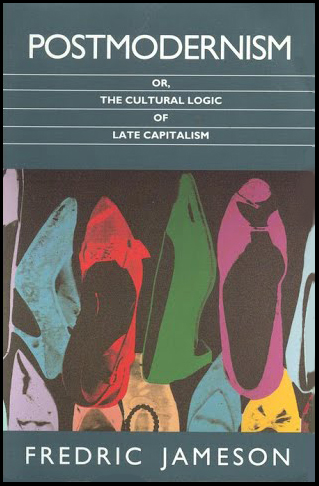
Reading Postmodernism was so engaging and enlightening—and challenging—that along the way I was impelled to digress and expand (read ‘take a break’?) by dipping into, consulting, or in a few cases taking the whole trip through, seven other works, three of which (Max Weber’s landmark The Protestant Ethic and the Spirit of Capitalism, Charles Jencks’ The Language of Postmodern Architecture, and Leo Braudy’s The Frenzy of Renown) I’d read a long, long time ago (but forgotten so much of, dammit). Others included one about which I’d always been curious and am now very much looking forward to reading in its entirety (Jane Jacob’s often lucidly brilliant Le Corbusier-repudiating and Robert Moses-rebuking The Death and Life of Great American Cities), one I serendipitously stumbled upon at the used book store down the road (Mario Salvadori’s remarkable Why Buildings Stand Up, especially the final chapters therein), and a kinda ‘Cliffs Notes’ quick-and-dirty ‘reminder book’ on modernism (Modernism: A Graphic Guide) not requiring focused attention, so good for having in line at the post office or grocery store. I also became acquainted with Jane Bennett’s essay, “Modernity and Its Critics”, in the Oxford Handbook of Political Theory. The overarching lesson gleaned from this immersion was a general substantiation of the suspicion I held going in: that the arrogance and hubris of modernism (and it’s ostensible advance, post-modernism, which I think of as essentially just a term to put ‘lipstick on the exhausted pig’) is, thank god, likely in its terminal stages. In the larger historical context modernism is, I’d assert, the panting last flounderings (on the cultural side of things) of unrestricted and unrestrained capitalist individualism and imperialism. Progress continues; values evolve accordingly. I believe we’re slowly entering, although with regular backsteps and blind alleys, a time of increased awareness and self-awareness; of responsible restraint. A perfect (and incisively thorough) indictment of modernist assertive excess generally, to which I regularly like to point, comes from Le Corbusier’s laughable, wholly horrifying 1925 plan for a ‘revitalized’ Paris—his Ville Radieuse (Radiant City) Plan Voisin. Take a look—and understand that this was not a joke or a thought-exercise. That’s the Seine and the Île de la Cité—where sit Notre Dame Cathedral and Sainte-Chapelle—on the lower right. (“We’ll always have Paris”, indeed....) As noted, perfectly emblematic, in conception and swagger, of modernist vainglory and across-the-board disregard.
And with varying degrees of acuity, and varying times of ascendance, that emphatic individualist ‘modernist disregard’ most certainly offered revolutionary—or at least novel—new (if often erratic) aesthetic thinking and accomplishments in painting, sculpture, literature, architecture, theater, film and music. But we got it, right? As Jameson alertly notes late in Postmodernism, in inexorable decline are obtusely wide-eyed genuflections before the high modernist notion of ‘genius’ and its ramifications (replaced by the abundantly more realistic credit dispassionately accorded to disciplined hustle, marketing, luck and successful careerism—without even implication that any of these are at all, ipso facto, necessarily negatives). And we see the concurrent beginnings of society-wide rejection of tedious dead-end lionizations of ‘style’ (imputing cultural creative authority to reductionist idiosyncratic and eccentric consistency and/or public postures, and in its basest form, transient celebrity), and the obstinate lock-step goose-step of eager academics timidly legitimizing it all. Rhapsodies about the ‘depth found in style’ or similar illustrate the headlong final collapse into irrelevancy—the dead-end bankruptcy, really—of modernism, and the base hero-worship it ultimately promotes. Where once, pre-Enlightement/pre-capitalism, authority was sought in and imputed to celestial omnipotence—and, immediately, to the divine agentry of the clerical class—in the capitalist [and culturally, the Romantic and then the evolved Modernist ideal vision] authority is found in rational humanism; invested in the agentry of the individual. Which leads, today—and understandably [if regrettably] given the competitive power aspirations in every human ego to one extent or another—to authority imputed to those individuals who either by design, personal quirk or industrial manufacture simply manifest what are, in fact, wholly peripheral displays, disengaged from emotional/intellectual substance. They certainly are—or appear to be, through calculated and determined assertion—unique ‘individuals’, no? So what? While we may be amused by and enthuse about this or that particular practitioner’s commodifed persona, or, more seriously, find retained reward in part of—even a large part of—a particular professional’s work, we need to stop being obtuse fans, consumers investing our favorites with Authority simply because of their ‘individuality’ and/or their distinctive, perhaps even occasionally resonant work. Once past adolescence, one really shouldn’t insecurely require authority figures and heroes—which eager anointments of ‘artistic genius’ effectively create. Grow up! I realize I’m gonna be postulating something quite broad-strokes here—from what more resembles informal ‘over-a-couple-of-beers-with-a-pal’ speculations than anything even approaching rigid scholarly study—but that the apogee era of artistic modernism coincided with the rise of political personality cult authoritarianism divorced from assertions of literal royal investiture (cf Stalin, Hitler, Mao, Mussolini, Ceaușescu, the Kim dynasty, et al) is, I expect, not just a happenstance. Late nineteenth century expansion of suffrage—political power slowly becoming less the exclusive domain of elites, devolving ever more to the general populace—begat the emergence of mass politics. There is a symbiotic relationship between venerating Artists as superhuman geniuses (eventually devolving into finding authoritative creative merit entirely in carefully-fabricated superficialities and peripherals—with the final iteration being cultish devotion to personality), and willing enlistment in the cheap and lazy certitude of easy answers found in cultish mass movements directed by calculating authoritarian ‘Leaders’. The tendencies work well together, as they’re impelled from similar willing self-subjugations and insecurities—directed towards accepting similar irrevocable elevations. The role assigned to the rest of us (and, sadly, too often eagerly enlisted in) is that of applauding mass audiences and devotees, certifying critics and academics, accommodating voters and consumers—essentially satisfied, easily-managed sheep. (Late high modernism has even allowed for the almost unchallenged elevation of opportunist corporate CEOs into being ‘stars’ and ‘geniuses’ as well, deserving of cultural veneration and deference—which if one steps back for a moment really does reveal itself to be a grifter’s con, no? Before Jack Welch at GE in the Reagan 1980s, this kind of thing only very rarely happened, and even then usually just with occasional company heads who had been actual founders of those enterprises. Yet in our period of last ditch capitalism and last ditch modernism, the disgusting ‘Celebrity CEO’ sickness has become pervasive. If interested in learning more about the specific advent of Welch and his ilk, their arrogant self-entitlement and greed, and the tremendous damage they have and continue to perpetrate, see The Man Who Broke Capitalism: How Jack Welch Gutted the Heartland and Crushed the Soul of Corporate America—and How to Undo His Legacy by David Gelles, business reporter at The New York Times. Very readable—and very depressing. Have a bottle of wine handy.) Yet we are slowly evolving, I believe, into a communitarian cultural realization—in direct reaction to (progress from) the Enlightenment-capitalist exaltation of the individual which was born post-Renaissance, post-feudalism and reached its ascendance in the nineteenth and twentieth centuries. Civilization advances, inevitably beginning, here and there, to jettison the detritus of now largely moribund modernism—that last individualist cultural bus stop before the emerging cooperative and communitarian (proto-egalitarian) dawn. (And I do think, as I wrote in Words and Music Into the Future, that if one wishes to reduce to a taxonomy of historical periodization, that postmodernism isn’t really something new at all, but “simply the grasping-at-any-fucking-available-straws last gasps of modernism itself—superannuated modernism recklessly troweling on way too much makeup”. The panicked schizophrenia of it all is telling.) There’s still a long, long way to go—with fits, starts, reversions and surprises—and nothing happens everywhere all at once. But the cracks in the high modernist facade are apparent, no? To be honest, while none of the seven other books either read or further consulted as diversions from (and additions to) Postmodernism are ‘light reading’ (well, except for the modernism graphic guide) they were all easier going than Jameson’s mother ship from which I allowed myself these moderated detours. The whole eight book excursion—partly due to mundane quotidian events, the intellectual demands of the books themselves and my preternaturally dominating laziness(!)—took nearly four months. But it mostly took so long because— I. Am. Impossibly. Slow. (But-I-do-get-there-eventually!... )
February, 2022 A book report on Words and Music Into the Future There’ve been many interesting, and largely positive, reactions to Words and Music Into the Future: A Songwriting Treatise and Manifesto since it was released many months ago. (Coming out in lockstep timing with the onslaught of Covid-19 was, er, well—‘interesting’ as well, certainly.) Several professional reviews show strong support for the work, and some comments from those appear way farther down. Emails with favorable reactions come in with some frequency too, along with in-person acknowledgments and comments—all welcome, of course. Some of the feedback is variations of 1.) “After reading your book, I find myself listening a lot more thoughtfully”, 2.) “Having Dylan’s writing demolished so completely was hard to accept at first, but now it feels like a weight’s been lifted”, 3.) “Wow, I presumed I was the only one who thought so many critically praised songs were just stupid!”, 4.) “I never gave much thought to what a song said before, and now realize how important it actually is”. Along with similar. And, of course, reactions like these are exactly the kind of awakenings and re-evaluations I hoped to help engender. Very early on, one correspondent suggested that Words and Music Into the Future resembled Tom Wolfe’s The Painted Word; and while one can understand why the comparison might be made, I assert a critical difference is that in the former, and not the latter, positive examples and ‘ways forward’ are also on offer. So it’s not just across-the-board criticisms of current practices and work without there also being recognition of occasional positive efforts, accompanied by potentially helpful directions toward creating better work generally. (Wolfe’s thinking there—and elsewhere, on other topics—is essentially a simplistic and reactionary diatribe: entertaining, yes, but ultimately pointless. See, similarly, UK King Charles’ cheaply nostalgic architectural castigations or Wolfe’s own From Bauhaus to Our House—on the same topic from the same frustrated albeit basically bankrupt impulse. “Sturgeon’s Law”—90% of everything is crap—is a more succinct and intelligent foundation for a viable critical foray. Guys, start with something like that as your a priori shot if you’re confident in your wholesale dismissals—that’s of course fine—but then work forward. Eh? But I digress...) Also regularly arriving is someone simply declaring, apparently in shrugging regard, that he or she has “never seen a book like this before”. Good ’nuff fer me—it’s a start. Yet it’s often the truly negative reactions, believe it or not, and what’s left unsaid in those detracting remarks that’ve been equally gratifying to receive, as they inadvertently affirm the analyses and conclusions in the book. (More on that below.) Yes, some very peeved, furiously indignant denunciations do come in via emails and comments—don’t doubt it. Oh my god. “I strongly disagree with what you write about (this song, or that ‘artist’, or fill-in-blank-aspect-here)! How dare you say X, Y and/or Z! You’re just plain WRONG!” (But that’s the more coherent ones.) Not often, no, but sometimes, I’m addressed as “Jerk!”, “Idiot!”, “Moron!”, “Lowlife!”, “Asshole!” or similar—but also not too unexpected given the many sacred cows barbecued in the book and how desperately devoted the occasional fan can become. (In all-caps, though, so lemme reconstruct those more faithfully: “JERK!”, “IDIOT!”, “MORON!”, “LOWLIFE!”, “ASSHOLE!”—maybe appended with an evocatively graceful “FUCK YOU!”. This kind of thoughtful commentary doesn’t arrive often, and more enraged incomings tend to be particularly bunched up immediately following a write-up or a radio interview; which figures.) On the other hand, occasionally a ballistic detractor will veil his or her visceral angst in painstakingly crafted imperiousness, which is actually somewhat flattering if one thinks about it. And then there’s the random critic or editor simply (and understandably) uncomfortable with being challenged so forcefully about the wholesale poverty of what he or she’s assigned to cover every single day. Like it or not, working in the milieu makes one invested in the milieu. Along the lines of ‘This is a book for a think-piece somewhere, maybe, but not really what our readers (or we?) want to be confronted with.’ (cf. Rolling Stone, Mojo). Alternatively, it can be incorporated into a kinda veiled, but more discreetly worded, variation of ‘Well who picked YOU, Mr Koppy—Mr Complete-Nobody-No-One-Has-Ever-Friggin’-Heard-Of—to decide what’s wrong with pop songs? It might be different If You Were Somebody Important—or a Celebrity! But NO!’ (cf. The Los Angeles Times). Hafta laugh to keep equilibrium, but we do Live In Vividly Vacuous Times; with Empty Notoriety Our Guiding Light. This is all fine, honestly—or well, at minimum, not surprising, certainly—but I’m neither condescending nor disingenuous reporting that I sincerely welcome intelligent criticism and disagreements, no matter how they’re presented. The book is a carefully reasoned, inquisitive, considered treatise and manifesto, after all; not an embittered ego trip or fly-by-night drunken rant. So much of what’s advanced is the result of long conversations and written exchanges over many, many years with serious, informed and perceptive people—and from reports, Words and Music Into the Future does indeed break new ground. (If that’s truly the case, then good.) An unexpectedly great additional serendipity was that by posting the evolving thinking, the evolving manuscript, on this website many, many corrections, arguments and comments came in from outa the blue—from other serious and perceptive people—as well as the occasional flailing castigation, of course, from ardent fans of this or that ‘unfairly maligned’ pop star deity. (By the way, if one can do it, I highly recommend the procedure to anyone else preparing a book. Post it publically, invite and eagerly encourage comments. The new thinking that comes in, along with simple new factual information, can be stunningly constructive. It’s like having several thoughtful editors, researchers, critics and co-writers—co-conspirators, really—all working toward the same end; and precludes a lot of oversights, miscalculations, ill-considered analyses, embarrassing mistakes, mental lapses and wasted time. Of course, it also brings in some inanely ridiculous ‘contributions’ from clueless drones that you might otherwise first encounter after you’ve gone into print—but this allows the opportunity to forthrightly expose the speciousness in those offerings directly, right away, in the evolving manuscript. No, one can’t anticipate every dumb notion that’ll sooner or later come along—and keep in mind that sometimes a uniquely brilliant insight can arrive from someone who’s otherwise totally lost. Stay open! But the more confused judgments that are cleanly obviated—disposed of in plain sight—the sturdier the conclusions that remain. And the occasional incisively thoughtful divergent views that are fully engaged as well—accounted for, debated, even deferred to in some cases—obviously strengthen the global thinking immensely. Think of it all, perhaps, as a messy de facto pre-publication ‘peer review’, the issue-by-issue results of which are now there in the completed manuscript for public consideration.) So, embracing thoughtful input, I almost always diligently, innocently—eagerly—respond to someone claiming to disagree, asking for specifics on how his or her contrary opinion derives. (Yes, usually even to those who toss in well-polished insults.) And along the way I’ve learned there are topics in the book that, while factually unchallenged, perhaps would’ve benefitted from being addressed more comprehensively or more precisely. (For instance, in an eventual Revised and Expanded Second Edition I’ll note examples of true poetic use of language—which is regularly implied or alluded to presently, yes, but perhaps a bit glossed over. I mentioned a well-appreciated line in Dolly Parton’s “9 to 5” in a recent radio interview, for instance, which excellently illustrates what might be called ‘applied nonliterality’. [Recommendations of other particularly brilliant lyric passages to possibly note are welcomed—please send suggestions.] Another area for more in-depth exploration is the line between plagiarism and ‘allowable incorporation’, where it may be helpful to discuss classical music historical conventions and some examples from that milieu for consideration. There I’m thinking of looking at Joaquin Rodrigo’s Fantasía para un Gentilhombre, Aaron Copland’s Appalachian Spring, perhaps Ottorino Respighi’s Ancient Airs and Dances, and maybe Ralph Vaughn Williams’ Fantasia on a Theme by Thomas Tallis. [As all those are from the era 1910–1960, going farther back for an earlier piece or two may add to the deliberation. Suggestions and thoughts welcomed here as well.] A third matter that might prove enlightening may be to assay a popular song or two that was, surely and clearly, carefully worked at—so not at all ‘tossed off’ like so many that end up properly deserving derision. One possible example that offers fertile ground for examination is “Bridge Over Troubled Water”, by Paul Simon, as it provides both positive and negative insights. Adding a note or two about his earlier “The Dangling Conversation”, might further things here as well. These are all aspects of the book that have been brought to my attention by helpful correspondents since publication. [I’ve also been apprised of typos, misspellings and similar, of course—along with the occasional comment on my admittedly but advisedly idiosyncratic orthography. There are also 50+ editorial and ‘writerly’ adjustments already slated—with more to come, certainly—following the over 350 that were made between the advance review edition and the published edition.] Fun comments include two writers complimenting the index [which was incredibly tedious and taxing to build—special indexing programs just can’t yet do a truly superior job at that] and another offering that “Appendix III is worth the price of admission on its own!”. Laughing good-naturedly here, but with sincere appreciation and thanks to everyone who aids in the continued, refined explorations.) Occasionally, I’m innocently asked an opinion on this or that songwriter or performer. “So what do you think about Tom Waits, Taylor Swift, Kendrick Lamar, Joni Mitchell, Ed Sheeran, Whoever-Else?” Or (sometimes with irate indignation here) a particularly boosterish fan asks why the book doesn’t even mention this or that act at all, “HEY! Why didn’t you talk about [fill-in-blank-here]?!? He/She/They are GREAT!!” But this really misses the point—or perhaps more accurately: obtusely, lazily, evades the point. ‘Who do ya like?’ talk quickly—well, easily—devolves into trivial superficialities; gossipy broad-brush ephemera; singularly subjective self-indulgences. Fan crap. Oh sure, that is, of course, the Very Real Essence of what’s actually being cynically promoted and marketed. No question! But I think in most serious circumstances—not all, perhaps, but certainly most—it’s more productive, more consequential, to address specific work, not a personified œuvre: an Act. So no, I’m not in the least interested in this or that transient pop music career, or celebrity eminence—subscribe to The National Enquirer for that stuff, if one must. Or, in the UK, maybe pick up The Sun.... Words and Music Into the Future is cultural criticism; so the songs, songwriters and attendant aspects examined in it were simply and specifically picked to help illuminate the much larger popular music creative issues, cultural concerns and potential correctives. And the overarching resultant message, really, is that we deserve a whole lot better. Along with its corollary: that you and I, Mr or Ms Listener, should demand a whole lot better—both of what’s provided, and of ourselves in how we indulge it or not. There was even a critic who claimed the book was just an attempt to hype my own work; and so he wouldn’t report on it. Not to get in too deep here, I hope, but he apparently didn’t notice that in the very determined attempt to preclude potential for such confused cynicism there’s no author pic or biography in the back, no ‘also by this author’ page in the front, the dedication isn’t to some calculated ‘career stepping stone’ (or even to a special loved one), and there’s an abject laughing-at-myself dismissal of my own songs in the Introduction (on page 31). The only substantive self-hype is some press quotes about previous work on the back cover, the place a book is expected—traditionally required, really—to sell itself to a potential reader. (And frankly, those quotes also help preempt petulant whining of the ‘All you do is criticize! YOU try writing a song, pal!’ variety.) If necessary here (is it? really?) it might be further noted that success in the entertainment industry, arguably more than anywhere else, requires flattery, ingratiation, cajoling, schmooze—and lots more flattery. Were one trying to gain favor with Various Powers That Be, a book this resolutely in-your-face dismissive of many lionized ostensible ‘Great Songs’—and brazenly scornful of pretty much the entire déclassé pop music machine, including the sizable percentage of critics who unfortunately act simply as eager industrial publicists—sure ain’t the way to go. (And now also, inevitably, my own next creative efforts will be subject to much stiffer critical receptions as well—or spitefully ignored. C’est la vie.) Altogether, certainly not very smart ‘self-hype’, eh? But waddaya gonna do. (Okay, okay, end of rant....) Back to primary matters: one charitably surmises this probably well-intentioned critic, like many others, has become so jaded by the onslaught of military-industrial strength promotion with which he’s constantly bombarded that serious examination of truly foundational issues is a rather odd, even quite suspect, idea. And that oft-encountered very aversion to engaging fundamental intellectual inquiry is part of what we’re fighting when swimming against the torrential tide of trendy trifles, robotically mechanized celebrity-worship and the continual dumbing down that so pervades current culture. Ultimately, you can’t make someone—anyone—deal with actualities. But you can do everything you can to open some eyes—and to forthrightly Speak Remedial Truth to Calcified Power. Okay, so what about those ‘inadvertently affirmative’ negative reactions that were mentioned up above? Well, they come from the fact that so many who claim to vehemently disagree are actually misstating their take entirely, and whether they realize it or not. Disagreement implies serious contrary determinations, based on facts and considered analyses, divorced from impertinent peripherals, subjective preferences and simple indulgences. Yet that’s exactly what’s missing from those occasional angry or otherwise negative outbursts—and what I subsequently try to tease out in my reply. The project is a genuine, categorical effort at consistent intellectual integrity, nothing other. But only rarely is that ball hit back across the net. Why not? Well, it seems in so many cases they really can’t really provide a factual, reasoned rebuttal to the statements and conclusions they find so objectionable. That even goes for the occasional professional critic who registers an amorphous ‘disagreement’ or vague ‘reservation’. There’ve even been a few folks, courteous yet adamant that they disagree, who I’ve persistently importuned—pretty much badgered, really—for explanations of what, exactly, they reject and why. I wanna know—and grow! One clearly intelligent fellow wrote early-on that the book is “80% wrong”—yes, he wrote “80%”. Yet he wouldn’t/couldn’t cite even one instance of that purported “80%”, and despite repeated appeals to please do so. In the end (and perhaps obviously?) he’d in fact simply been abruptly unhorsed by what he’d read—forced to accept that many happy illusions, long held, were no longer tenable—and due to that, he was really just 100% rattled. A quite different matter. (I’m surely plainspoken enough to demolish anyone’s ‘afraid to hurt his feelings’ qualms—if such exist—in expectation they get the intent here is to learn and weigh every specific, thoughtful, substantive disagreement that’s out there, or that anyone can think up. Hell, even including the eye-rollingly harebrained ones—so ‘disagreements’ neither ‘thoughtful’ nor ‘substantive’ at all. For reasons noted about those earlier, bring ’em on!) It’s from study, debate and analysis, after all—dispassionately weighing competing insights and new facts—that we arrive at compelling, serious, potentially valuable resolutions. Words and Music Into the Future is—and despite the purposely idiosyncratic, conversational delivery—a rigidly serious exploration. And look, if someone can’t provide an intelligent, informed counter-argument, this person really isn’t ‘disagreeing’ at all, right? In reality, he or she is simply disliking. Obviously, that’s an entirely different circumstance—one of zero consequence, zero concern, requiring zero deference. (I mean, get real. Who cares? So what?...) Oh and sure, there are also sometimes gripes about ‘tone’—the book is Just Not Nice, Too Darn Mean and Demanding, Disrespectful of the Celebrities whose work is exposed and eviscerated as emblematic of all that ails. They’re big stars, after all! (Laughing again here—and also again, in those same two words: Who Cares? Good work can stand on its own; bad work—and cynically indifferent, phone-it-in creators—deserves ridicule. Perhaps note the subtitle? It’s “A Manifesto”, not “Pangloss Was Right!”.) And, on the other hand, there’s occasionally someone declaring the take-no-prisoners style to be welcome, or refreshing—one wrote “invigorating”. So there you go—take your pick either way, or neither way, and fine. The serious, qualitative result of all this, though? The Thinking, Arguments and Prescriptions Presented in Words and Music Into the Future are Effectively Sustained. All in all, from one response after another—positive or ‘negative’—the book seems to be performing a legitimate cultural service. It took a lot of time and work to write, yes, but someone had to challenge somnambulant prevailing conventions. And then, critically—and perhaps even more importantly—to build onwards with positive, constructive suggestions on how we all might do better and, in turn, be better served. So yes, maybe it’s in fact serving the important, tangible, positive purpose of stimulating some serious discussions—at least here and there. Again, if that’s the case, then good. The book might be priced a bit lower than it should (or so was suggested by a book biz guy) but the objective is To Get The Thinking In It Out There. And consistent assorted royalty checks arrive monthly—the biggest was for several hundred dollars from Amazon US sales just two months back. There are additional monthly royalties from Ingram US (so bookstores and non-Amazon sales)—as well as smaller ones, frequently or sporadically, depending on from which country, from various different Ingram affiliates and Amazon branches around the world. Big bucks? Nah. But enough to keep a six-pack in the fridge, six strings on the guitar, and some gas in the old ’59 GMC. It’s also gratifying to know Words and Music Into the Future is now circulating in nearly six hundred public libraries all across the United States, from Bangor to Honolulu, Fairbanks to Key West—and in lots of college, university and music school libraries as well. The book and the ideas in it are slowly, sloggingly, inexorably finding their way out into the wider world. But even though your local library may have it, I’d still really appreciate it if you, Dear Current-Website-Visitor-And-Unquestionably-Oh-So-Irresistably-Attractive-Physical-Specimen, bought a copy, okay? A brand new shiny one! (And maybe an extra as a gift for Mom? Dad? A couple for the folks next door? The mailman?...) Thank you. Click HERE to get the book through your local independent bookstore in the United States.Click HERE to get the book through your local independent bookstore in the United Kingdom or Ireland. Click HERE to get the book through your local independent bookstore in Canada. Click HERE to get the book through your local independent bookstore in Australia. Click HERE to get the book through your local independent bookstore in South Africa. Click HERE to get the book through your local independent bookstore in New Zealand. (Or click HERE to get the book through Amazon, if you must.) Write if you have questions, comments, suggestions, gripes—or whatever. I hope the above report has been interesting, worthy of your time, and perhaps occasionally even illuminating. Thanks again. A revolution begins with a spark...
— Philip Martin, Arkansas Democrat-Gazette
— Tom Ryan, American Hit Radio
— Jeff Miers, Buffalo News
— Steven Winn, San Francisco Chronicle
— Gregory van Zuyen, Language Magazine
— Rolf Hendriks, Elmore Magazine Right up my alley... Well researched and well written, with provocative, vividly articulated critiques of songs and songwriters used as examples... I admire the obvious passion, and applaud the guy for writing it—not that I necessarily agree with all his conclusions! — George Varga, San Diego Union-Tribune An incendiary, vigorous, well-written critique of the sorry state of today’s popular songs... It’s a much needed warning, a real wake-up call! — Tom Lanham, San Francisco Examiner I’ve never even seen a book like this before. But so much of what he addresses are suspicions every intelligent listener has entertained, so it’s wonderful to see them so ably presented... Koppy’s an original thinker, and this is a great book!
— Phil Redo, WGBH Boston I highly recommend this book. It’s remarkable—original, thought-provoking and filled with solid insights and keen critical observations on the too-often and too-easily overlooked world of popular song lyrics... Both bomb-throwing and solidly constructive, he builds an excellent case throughout. — Michael Krasny, KQED San Francisco / KQEI Sacramento
— Patrick Dennill, Participate Magazine (Johannesburg, South Africa)
— Lee Zimmerman, Goldmine Magazine
— Michael S. Stock, WLRN Miami
— Jim Milliot, Publishers Weekly
— Mark Nardone, Music Connection Magazine
Thank you, once again, to all the folks who emailed in and those who continue to do so, offering advice, corrections, suggestions, countervailing views. This effort really is something of a ‘community project’—not crowd-funded, no, but very much ‘crowd-debated’. And the debate continues. Whether you agree with propositions put forth in the book or not, the point of it all is providing solid directions for creating better popular songs, works that respect and engage our intelligence rather than cynically try it. If you wish to share your reactions, suggestions, flaming denunciations, questions and/or contesting opinions, please do so. Email me with your thoughts; I’ll surely respond in a timely manner. - - - Best wishes to all. — Michael
A large share of photographs and illustrations used above were stumbled upon via the internet, and despite considerable efforts confounded attempts to track down origin and creator(s), presumably because they’ve been appropriated so many times since creation that they’ve been effectively stripped of information on provenance.
|

 CHAPTER THREE
CHAPTER THREE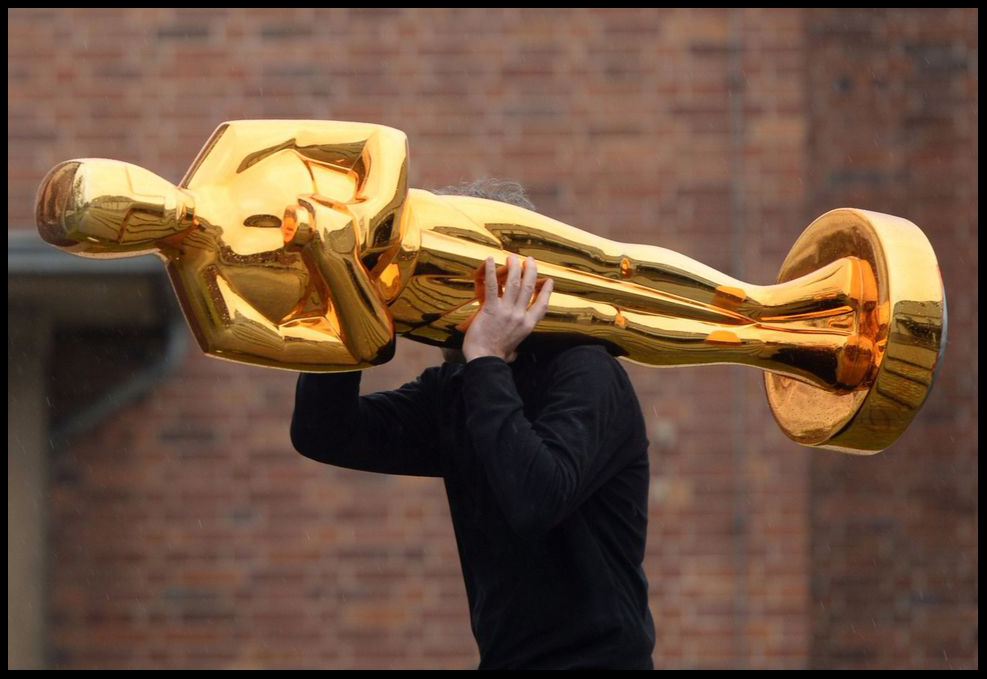 Any fool can direct,
Any fool can direct,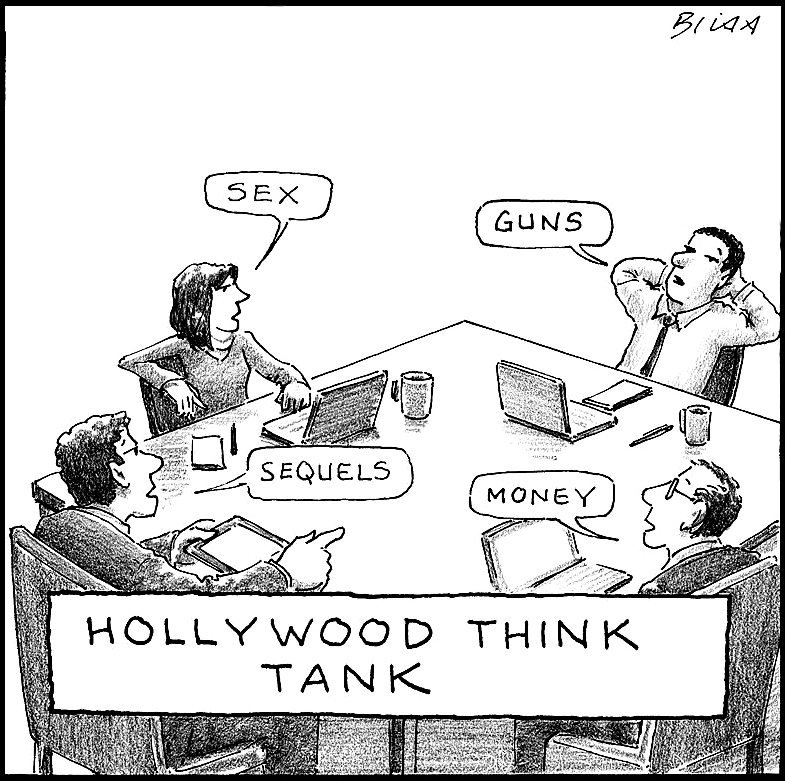 Farcically flatulent ineptitude—
Farcically flatulent ineptitude— The smarmiest wannabes
The smarmiest wannabes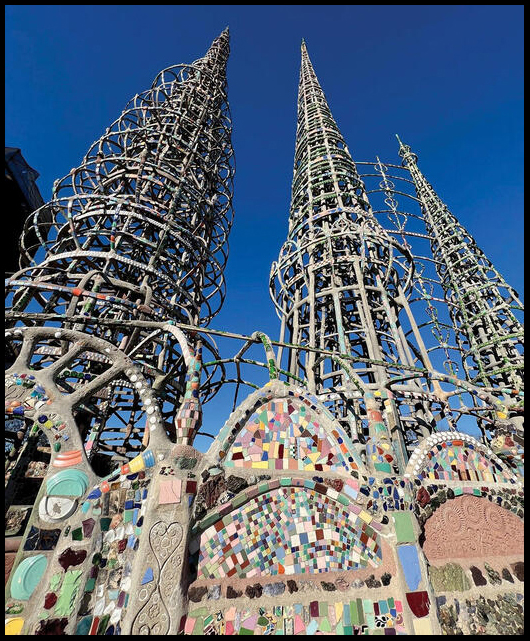 I have the intuition that living near Rodia may have been something of an occasional trial for neighbors—and not just because what he was creating certainly ‘didn’t fit’ into the ’hood. (In presently litigious NIMBY America, ain’t no way no Watts Towers could EVER happen! But—and to continue similar conjecture a moment—were neighbors ever concerned property values would diminish? Not joking here—truly curious. How DID folks in the area react to, how did reactions evolve on, the advancing constructions? From eye-rolls to genuflections? Uninterest to disinterest to resignation, perhaps? Eventually, celebration and pride? Even with all the extra cars now swinging by with admirers?) I imagine a rigidly taciturn fellow with cast-in-stone beliefs and prejudices, working class to the marrow, without patience for gratuitous affectation, perhaps holding any grudges for years. A curmudgeonly iconoclast—that kinda weird quiet guy living alone in that strange wacko house over there. But, admittedly, that’s really just an evidence-less surmise. (In the end, who knows—or really cares, frankly, beyond superficial curiosity?)
I have the intuition that living near Rodia may have been something of an occasional trial for neighbors—and not just because what he was creating certainly ‘didn’t fit’ into the ’hood. (In presently litigious NIMBY America, ain’t no way no Watts Towers could EVER happen! But—and to continue similar conjecture a moment—were neighbors ever concerned property values would diminish? Not joking here—truly curious. How DID folks in the area react to, how did reactions evolve on, the advancing constructions? From eye-rolls to genuflections? Uninterest to disinterest to resignation, perhaps? Eventually, celebration and pride? Even with all the extra cars now swinging by with admirers?) I imagine a rigidly taciturn fellow with cast-in-stone beliefs and prejudices, working class to the marrow, without patience for gratuitous affectation, perhaps holding any grudges for years. A curmudgeonly iconoclast—that kinda weird quiet guy living alone in that strange wacko house over there. But, admittedly, that’s really just an evidence-less surmise. (In the end, who knows—or really cares, frankly, beyond superficial curiosity?)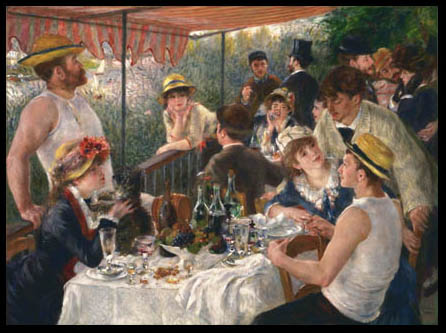


 Addendum #3: Concerning Girl With A Flute (left) no longer being credited to Vermeer, to (ig’nrnt vulgarian) me it was always a ‘lesser Vermeer’ anyway! But while we’re on that topic, are all o’ y’all danged smarty-pants edu-macated art history perfessers a hunnert percent sure Study of a Young Woman (below right), at the Met, is Jan’s work as well? Hunh?...
Addendum #3: Concerning Girl With A Flute (left) no longer being credited to Vermeer, to (ig’nrnt vulgarian) me it was always a ‘lesser Vermeer’ anyway! But while we’re on that topic, are all o’ y’all danged smarty-pants edu-macated art history perfessers a hunnert percent sure Study of a Young Woman (below right), at the Met, is Jan’s work as well? Hunh?...
 I come from down in the valley where mister when you’re young,
I come from down in the valley where mister when you’re young,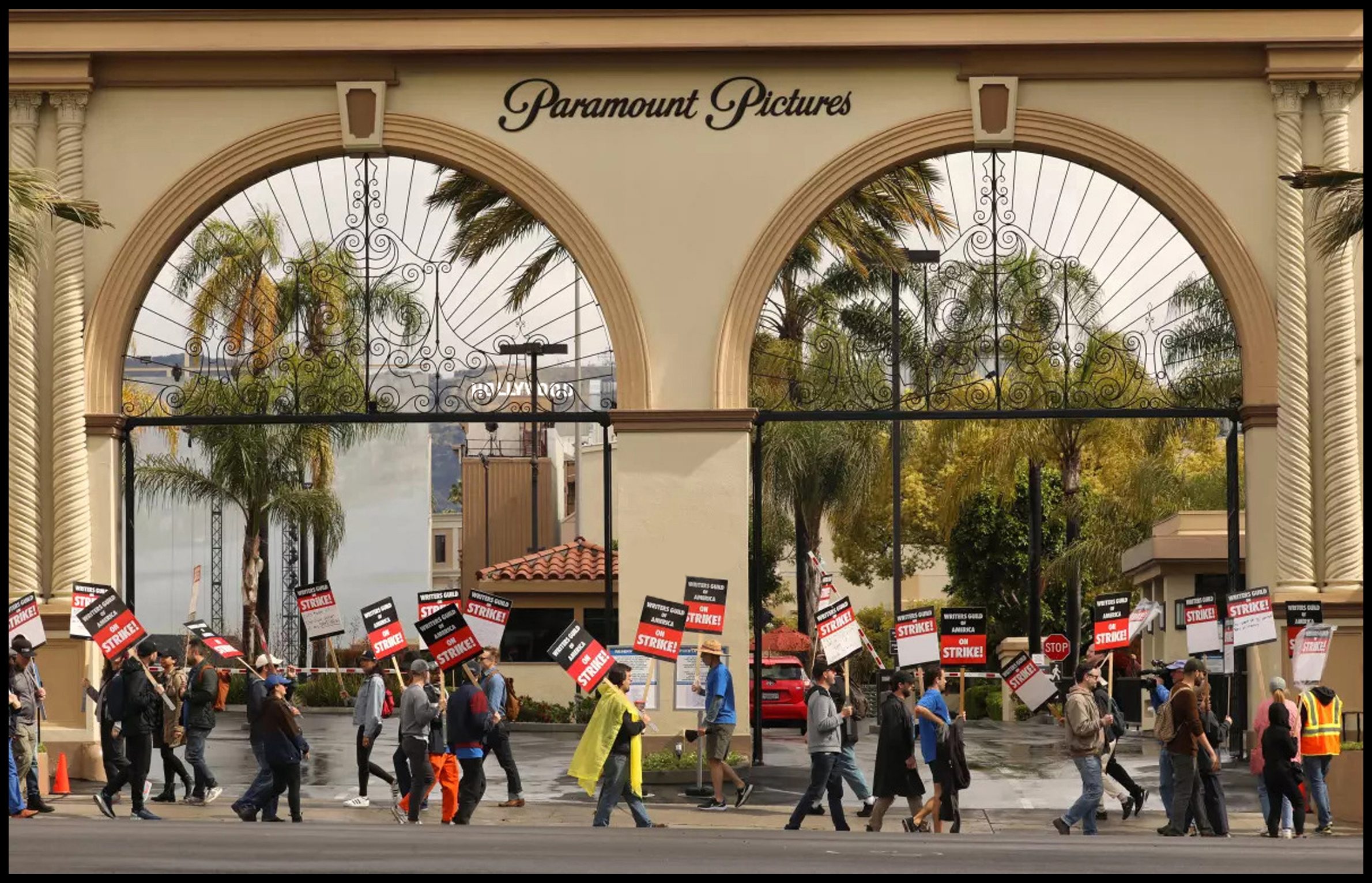

 streets and in dark alleys, tortured, lynched, hacked to death, and mowed down in volleys of gunfire by police, army, national guard, and management thugs while standing for better lives for themselves and their families through unions. (For just one example, click
streets and in dark alleys, tortured, lynched, hacked to death, and mowed down in volleys of gunfire by police, army, national guard, and management thugs while standing for better lives for themselves and their families through unions. (For just one example, click  But for a couple of simple, short, civil, calm and unemotional conversations on this, take a listen to the often spot-on UK talk-radio presenter James O’Brien discussing the pros and cons of unions and union membership with two sincere but innocently unthinking callers. Click
But for a couple of simple, short, civil, calm and unemotional conversations on this, take a listen to the often spot-on UK talk-radio presenter James O’Brien discussing the pros and cons of unions and union membership with two sincere but innocently unthinking callers. Click  And I’ll near-close here by quoting that great inspirational motto of the Industrial Workers of the World, “An Injury to One Is An Injury to All!” Yes. An injury—an injustice, a thieving exploitation—of writers or actors is an injury as well to set painters, grips, costumers, production assistants, carpenters, assistant directors, set laborers and the rest. (For more information on the Industrial Workers of the World [IWW], click
And I’ll near-close here by quoting that great inspirational motto of the Industrial Workers of the World, “An Injury to One Is An Injury to All!” Yes. An injury—an injustice, a thieving exploitation—of writers or actors is an injury as well to set painters, grips, costumers, production assistants, carpenters, assistant directors, set laborers and the rest. (For more information on the Industrial Workers of the World [IWW], click 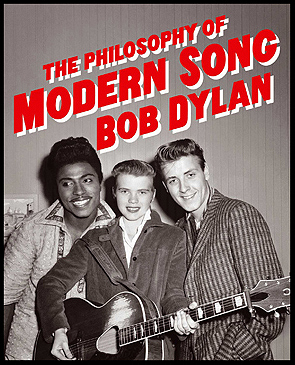
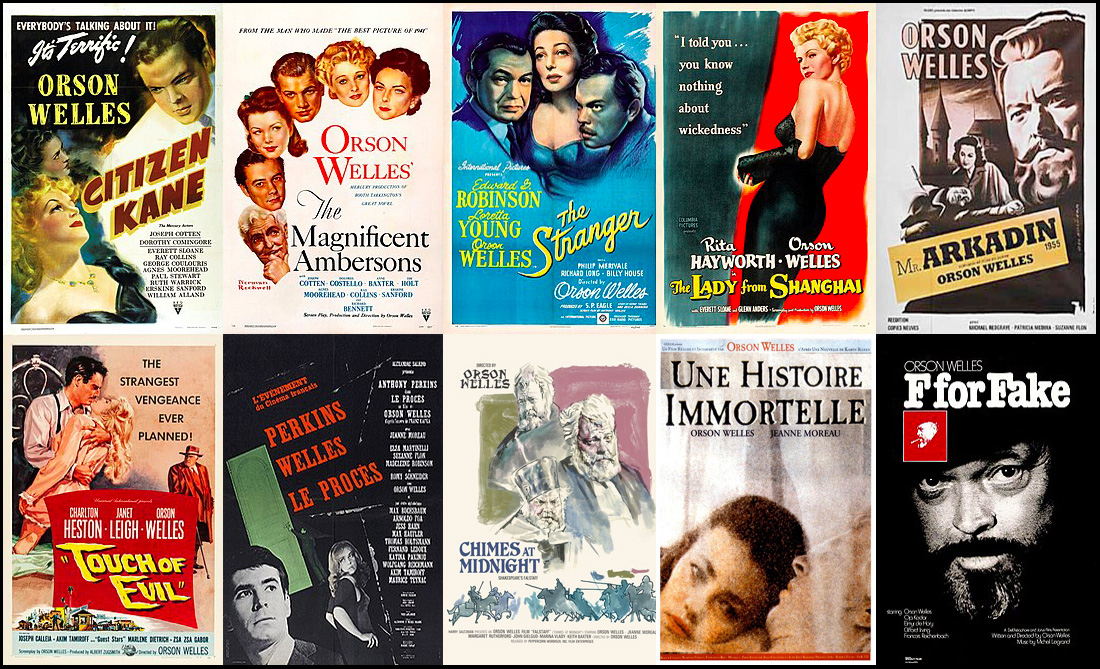
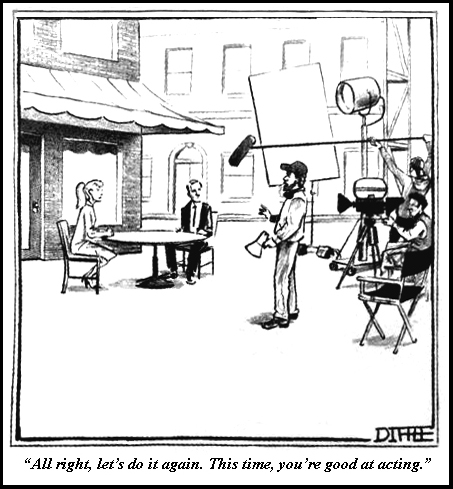

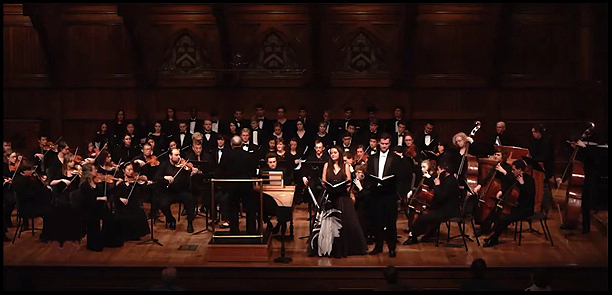
 But life’s a wild, whirlin’ grand game of chance,
But life’s a wild, whirlin’ grand game of chance,
 If you’ve come this far (and for a fun ‘competitive comparison’, perhaps?) check out a shortened rendition of “Agitata” by the late Montserrat Caballé. Click
If you’ve come this far (and for a fun ‘competitive comparison’, perhaps?) check out a shortened rendition of “Agitata” by the late Montserrat Caballé. Click 
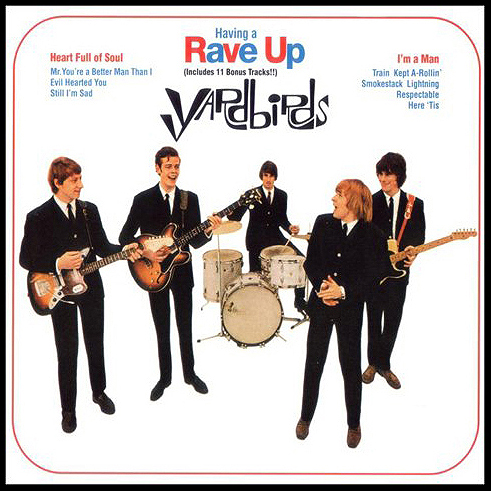
 Here’s two cuts featuring Jeff Beck. The first is from that Yardbirds album of so long ago, a song titled “Mister You’re a Better Man Than I”, by Mike and Brian Hugg. Lyrically, it’s one of those kinda ‘blunt instrument social commentary songs’—comparable, perhaps, to “Pleasant Valley Sunday” by Carole King and Gerry Goffin (for the Monkees) or Bob Dylan’s “Masters of War”: rather smugly jack-hammering. So give that a pass, as that’s not the point of this laudation. Focus in on Jeff Beck’s fills and lead break, and put them into the general context of what one heard on other popular songs from now half a century back. Click
Here’s two cuts featuring Jeff Beck. The first is from that Yardbirds album of so long ago, a song titled “Mister You’re a Better Man Than I”, by Mike and Brian Hugg. Lyrically, it’s one of those kinda ‘blunt instrument social commentary songs’—comparable, perhaps, to “Pleasant Valley Sunday” by Carole King and Gerry Goffin (for the Monkees) or Bob Dylan’s “Masters of War”: rather smugly jack-hammering. So give that a pass, as that’s not the point of this laudation. Focus in on Jeff Beck’s fills and lead break, and put them into the general context of what one heard on other popular songs from now half a century back. Click  Haiku is a Japanese short poem form strictly constructed of three lines, containing five syllables in the first line, seven syllables in the second, and five again in the third.
Haiku is a Japanese short poem form strictly constructed of three lines, containing five syllables in the first line, seven syllables in the second, and five again in the third.
 My own take on The Angel of the North is studied ambivalence. (I hasten to point out that ‘ambivalence’ doesn’t mean, as many seem to presume, apathetic detachment—but rather distinctly, even profoundly, conflicting beliefs or judgments.)
My own take on The Angel of the North is studied ambivalence. (I hasten to point out that ‘ambivalence’ doesn’t mean, as many seem to presume, apathetic detachment—but rather distinctly, even profoundly, conflicting beliefs or judgments.) offer that any interpretation here derives, must derive, almost entirely from scale. Gormley?s previous angel sculptures, of similar aspect but much smaller (as was the case by necessity in previous realizations) offer a different (or ?mitigated?, perhaps) message. But I think in it?s gargantuan proportions there at Gateshead, something altogether off-putting?yes, even crypto-fascist?is
inadvertently obtained and conveyed. This despite the altruistic pride-of-place proclamations which certainly reflect the innocent (if grand) impetus for the commission. “It’s a symbol of peace, not power. A symbol of our hopes for the future”, said the city councilor who spearheaded the project. (Hmm. But that doesn’t necessarily mean you actually achieved that message, now does it?)
offer that any interpretation here derives, must derive, almost entirely from scale. Gormley?s previous angel sculptures, of similar aspect but much smaller (as was the case by necessity in previous realizations) offer a different (or ?mitigated?, perhaps) message. But I think in it?s gargantuan proportions there at Gateshead, something altogether off-putting?yes, even crypto-fascist?is
inadvertently obtained and conveyed. This despite the altruistic pride-of-place proclamations which certainly reflect the innocent (if grand) impetus for the commission. “It’s a symbol of peace, not power. A symbol of our hopes for the future”, said the city councilor who spearheaded the project. (Hmm. But that doesn’t necessarily mean you actually achieved that message, now does it?)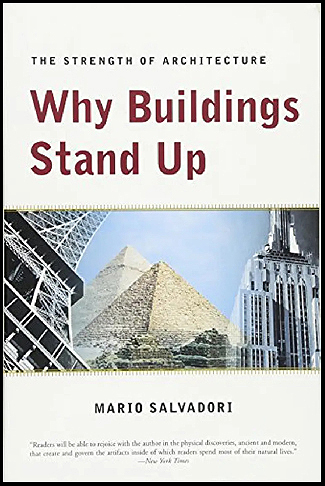
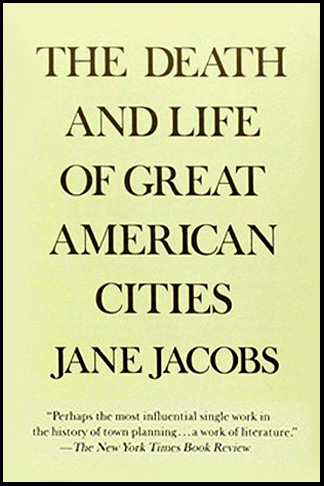


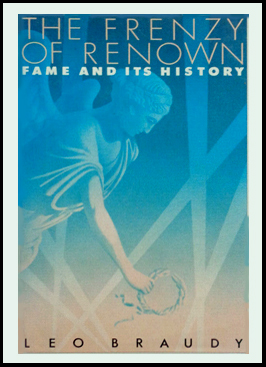
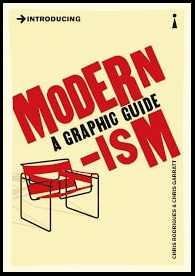

 (Brasilia, planned by Lúcio Costa and Oscar Niemeyer, and Chandigarh in India, planned by Le Corbusier himself, are two unfortunate high-profile places where Ville Radieuse doctrines were implemented wholesale and ground-up. But we find results of the thinking—oppressively ugly large local scars—in nearly every city around the globe. Modernist architecture and planning took few prisoners, though it often made millions feel like them.)
(Brasilia, planned by Lúcio Costa and Oscar Niemeyer, and Chandigarh in India, planned by Le Corbusier himself, are two unfortunate high-profile places where Ville Radieuse doctrines were implemented wholesale and ground-up. But we find results of the thinking—oppressively ugly large local scars—in nearly every city around the globe. Modernist architecture and planning took few prisoners, though it often made millions feel like them.) A cranky, obsessive, and utterly brilliant work of cultural criticism that might change the way you think about popular music... It’s an altogether astute indictment of the know-nothing culture that elevates the loud and the overt, that indulges in reality television and cable news and dismisses anything difficult as pretentious... Words and Music Into the Future is a terrific book.
A cranky, obsessive, and utterly brilliant work of cultural criticism that might change the way you think about popular music... It’s an altogether astute indictment of the know-nothing culture that elevates the loud and the overt, that indulges in reality television and cable news and dismisses anything difficult as pretentious... Words and Music Into the Future is a terrific book.
 Provocative is a big understatement, but his assertions are so well considered and well-structured that we’re forced to look harder at the music we allow into our lives, and ultimately agree with him on so much of what he exposes... Even the voluminous and often very entertaining footnotes continually expand the conversation with new revelations and further thinking... Intriguing, challenging, funny—an enjoyable, enlightening read.
Provocative is a big understatement, but his assertions are so well considered and well-structured that we’re forced to look harder at the music we allow into our lives, and ultimately agree with him on so much of what he exposes... Even the voluminous and often very entertaining footnotes continually expand the conversation with new revelations and further thinking... Intriguing, challenging, funny—an enjoyable, enlightening read.
 At various points, Words and Music Into the Future is hilarious, it’s thought-provoking, and it’s infuriating. All of which—even that last one—I mean as big positives.
At various points, Words and Music Into the Future is hilarious, it’s thought-provoking, and it’s infuriating. All of which—even that last one—I mean as big positives.
 Words and Music Into the Future has a spine of considered thought and persuasion, with an often penetrating analysis of the lyrics examined... There’s an air of outrage and mission, written in a voice by turns declamatory and folksy, self-effacing and strong-minded—but always with a larger, more substantial agenda at work: this is a book about ideas.
Words and Music Into the Future has a spine of considered thought and persuasion, with an often penetrating analysis of the lyrics examined... There’s an air of outrage and mission, written in a voice by turns declamatory and folksy, self-effacing and strong-minded—but always with a larger, more substantial agenda at work: this is a book about ideas.
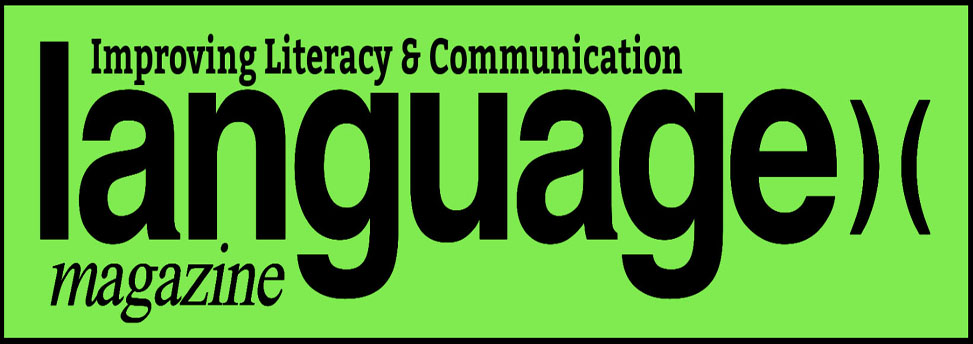 This is no small accomplishment... It’s a conversational, occasionally even laugh-out-loud funny masterstroke of steadfast passion for all that constitutes proper English, good writing, and worthwhile creative expression... Koppy builds a strong case, and his penetrating thinking about popular music ultimately makes a lot of sense... The book is disciplined criticism, with a sharp wit and a wealth of informative citations, displaying impressive erudition. Yet despite the solid intellectual foundations, the easy-going style makes for an accessible, entertaining read—and he’s on the right side, fighting the good fight!
This is no small accomplishment... It’s a conversational, occasionally even laugh-out-loud funny masterstroke of steadfast passion for all that constitutes proper English, good writing, and worthwhile creative expression... Koppy builds a strong case, and his penetrating thinking about popular music ultimately makes a lot of sense... The book is disciplined criticism, with a sharp wit and a wealth of informative citations, displaying impressive erudition. Yet despite the solid intellectual foundations, the easy-going style makes for an accessible, entertaining read—and he’s on the right side, fighting the good fight!
 A tour-de-force! Part Christopher Hitchens, part Denis Leary, Koppy’s writing combines the intellectual discipline of an academic with the raw candor of an insult comic. Erudite yet unpretentious, he leverages conversationally engaging writing as a critical heavyweight, striking with maximum force and precision... Intelligent readers will find delight and insight in this book, which is nothing short of an insurrection against the tepid status quo of popular songwriting, calling out what many of us have intuited but never dared to say: so many of the emperors of songwriting truly have no clothes... Words and Music Into the Future superbly elevates words and substance over tone and style, and it’s a captivating cultural proclamation delivered in a consistently detailed, entertaining presentation.
A tour-de-force! Part Christopher Hitchens, part Denis Leary, Koppy’s writing combines the intellectual discipline of an academic with the raw candor of an insult comic. Erudite yet unpretentious, he leverages conversationally engaging writing as a critical heavyweight, striking with maximum force and precision... Intelligent readers will find delight and insight in this book, which is nothing short of an insurrection against the tepid status quo of popular songwriting, calling out what many of us have intuited but never dared to say: so many of the emperors of songwriting truly have no clothes... Words and Music Into the Future superbly elevates words and substance over tone and style, and it’s a captivating cultural proclamation delivered in a consistently detailed, entertaining presentation.




 Eye-opening and uncompromising... Koppy’s plain-spoken determination to make both creators and consumers of popular music engage more meaningfully with what they write or listen to is awe-inspiring, thought-provoking—and often quite entertaining!
Eye-opening and uncompromising... Koppy’s plain-spoken determination to make both creators and consumers of popular music engage more meaningfully with what they write or listen to is awe-inspiring, thought-provoking—and often quite entertaining!
 A remarkably bold and well-written book... It’s a superb descriptive dissertation that is both objective and unrepentant, and it’s clear that the upstart approach is aimed at those who are similarly willing to shed preconceived notions of what defines great song craft. To that end, the literate prose brings his insights home in ways both enlightening and entertaining... Koppy’s tenacious tone may shock some, but he’s clearly erudite and informed, and there’s an assumption that readers will be as willing as he to delve in detail objectively, dispassionately... Words and Music Into the Future covers the basics of popular music, but goes well and far beyond. And while many books have been written on the subject, this is easily one of the best.
A remarkably bold and well-written book... It’s a superb descriptive dissertation that is both objective and unrepentant, and it’s clear that the upstart approach is aimed at those who are similarly willing to shed preconceived notions of what defines great song craft. To that end, the literate prose brings his insights home in ways both enlightening and entertaining... Koppy’s tenacious tone may shock some, but he’s clearly erudite and informed, and there’s an assumption that readers will be as willing as he to delve in detail objectively, dispassionately... Words and Music Into the Future covers the basics of popular music, but goes well and far beyond. And while many books have been written on the subject, this is easily one of the best.
 Erudite, eloquent, sometimes even downright funny... It actually makes me rethink many of my own assumptions—and I’ve been on the air here for over 30 years!
Erudite, eloquent, sometimes even downright funny... It actually makes me rethink many of my own assumptions—and I’ve been on the air here for over 30 years!
 Words and Music Into the Future is a nuanced look at popular songwriting, delivered with conviction. It will make songwriters, critics and music aficionados all find much to make them reconsider their commonly accepted beliefs.
Words and Music Into the Future is a nuanced look at popular songwriting, delivered with conviction. It will make songwriters, critics and music aficionados all find much to make them reconsider their commonly accepted beliefs.
 Provocative to the max, and often also very funny... Koppy takes a cold, hard look at the state of modern popular music, and let’s just say he has some problems with it... Yes, you might disagree with a whole lot—but if you’re honest you’ll admit he makes solidly cogent points throughout.
Provocative to the max, and often also very funny... Koppy takes a cold, hard look at the state of modern popular music, and let’s just say he has some problems with it... Yes, you might disagree with a whole lot—but if you’re honest you’ll admit he makes solidly cogent points throughout.
